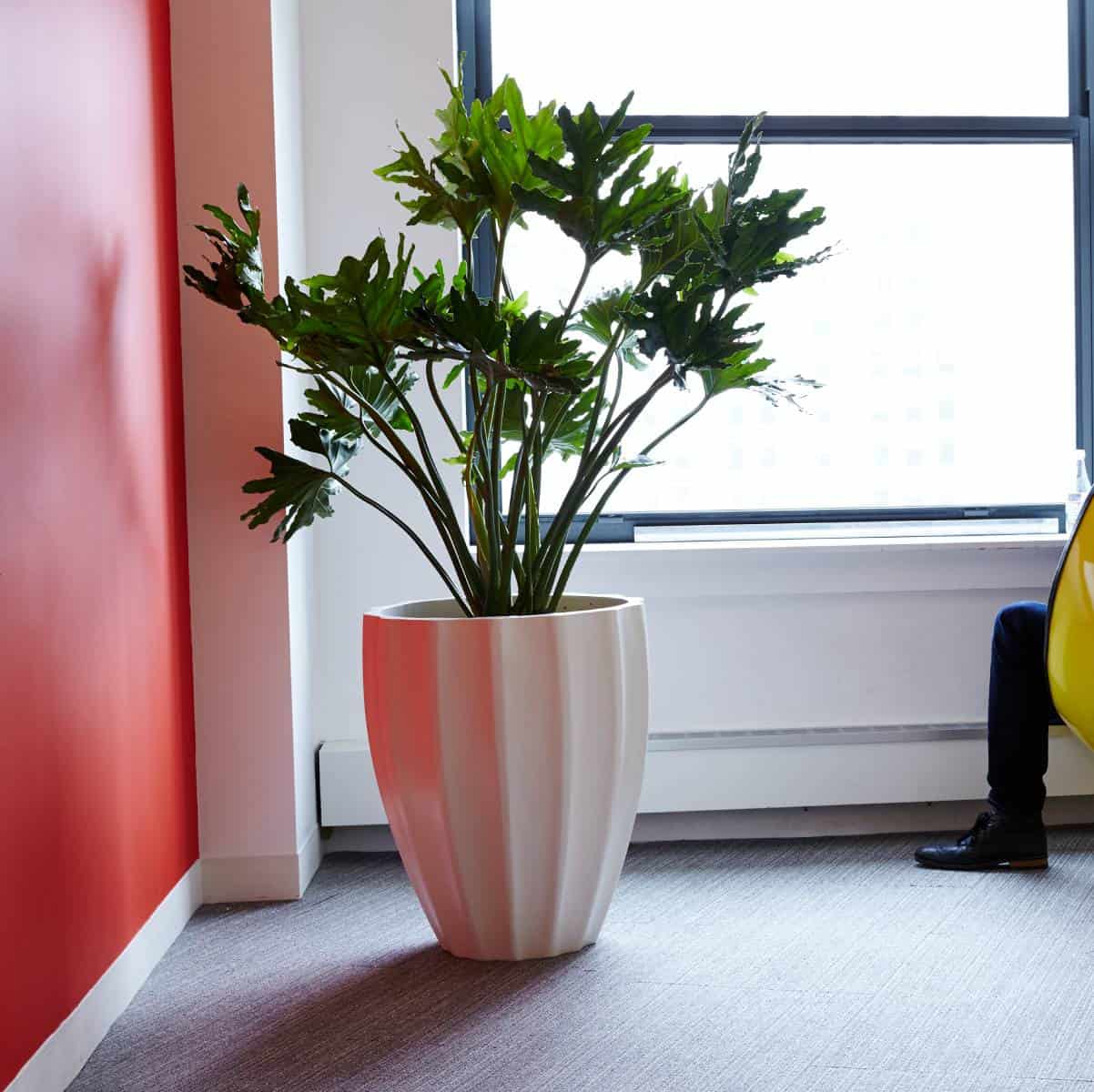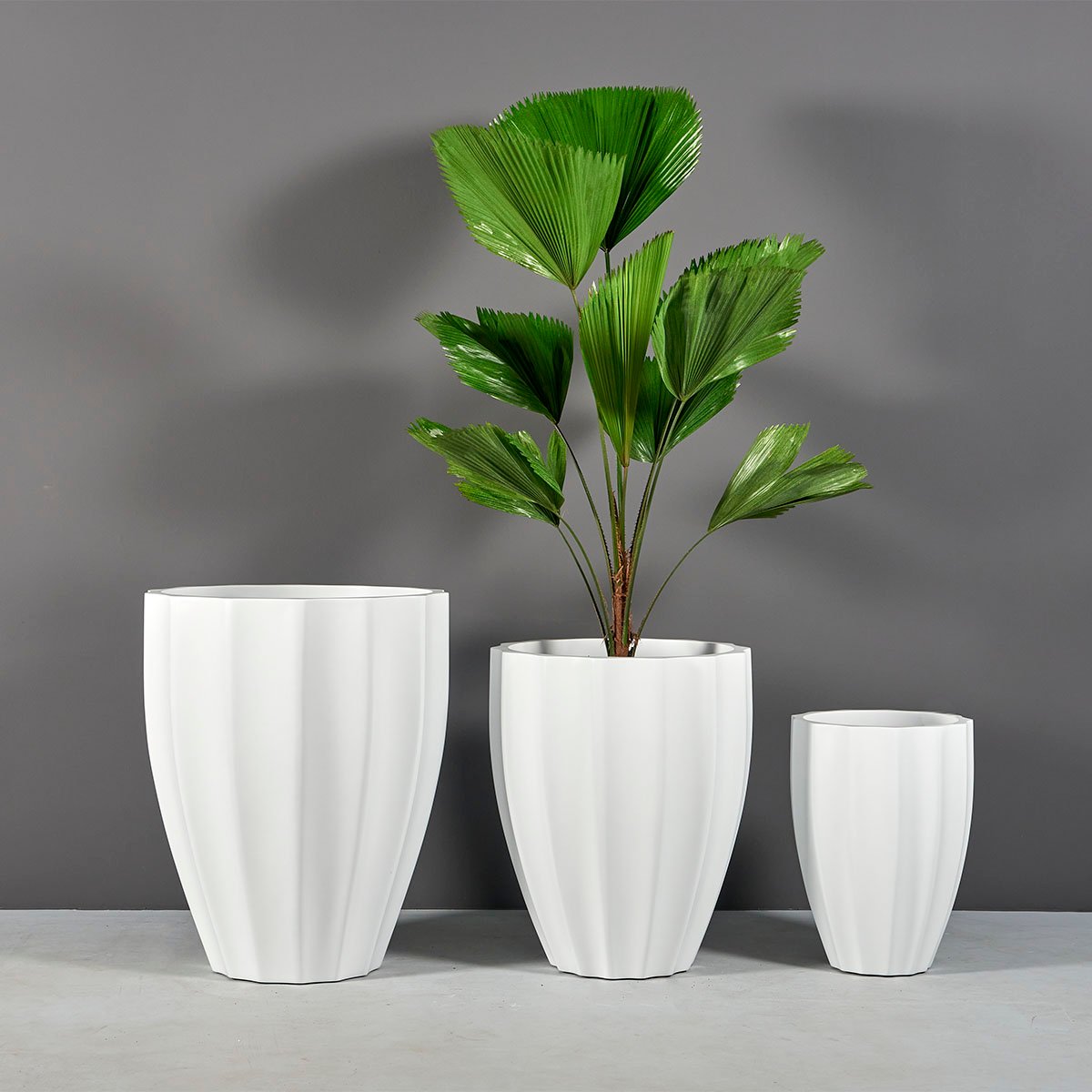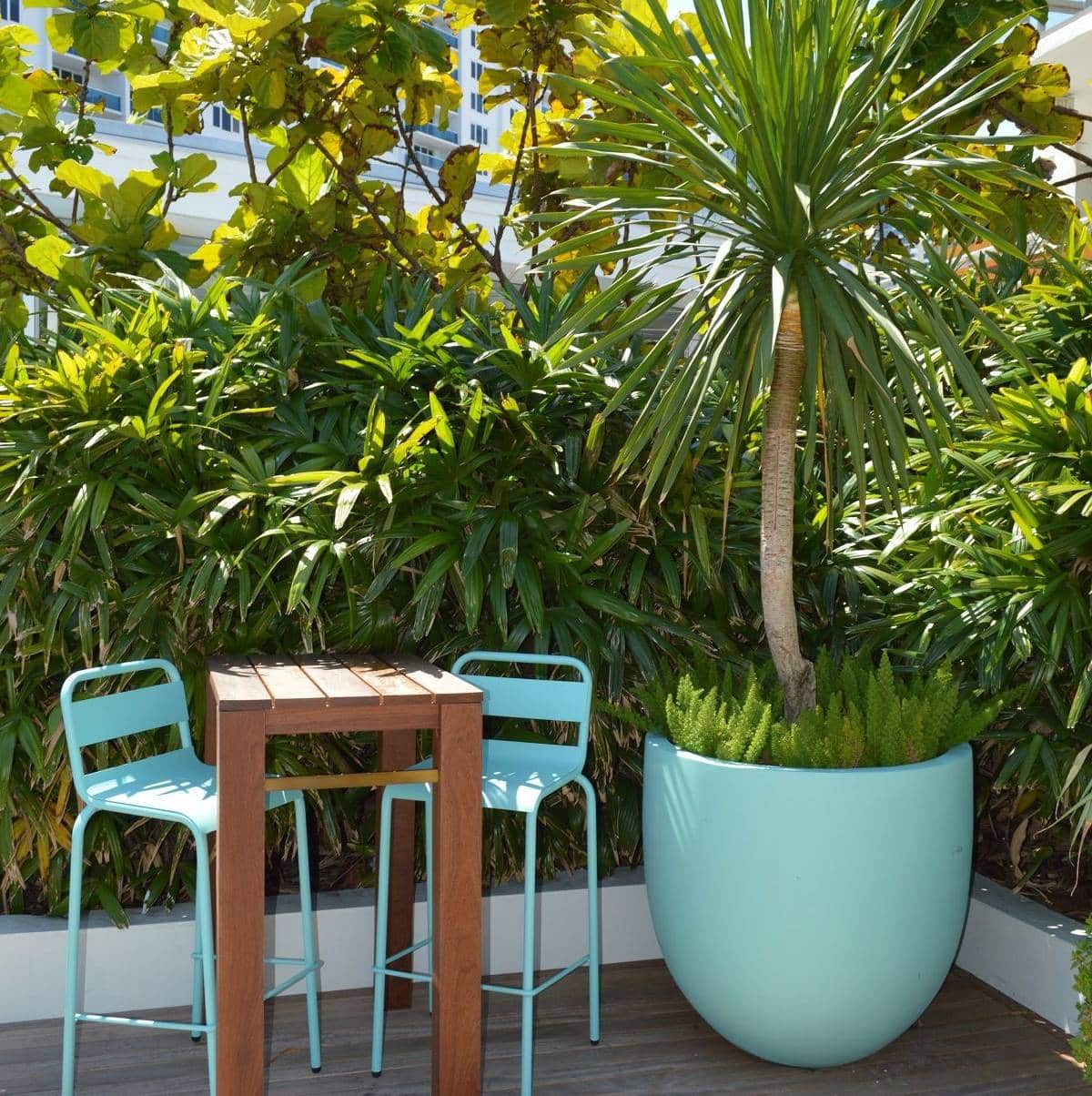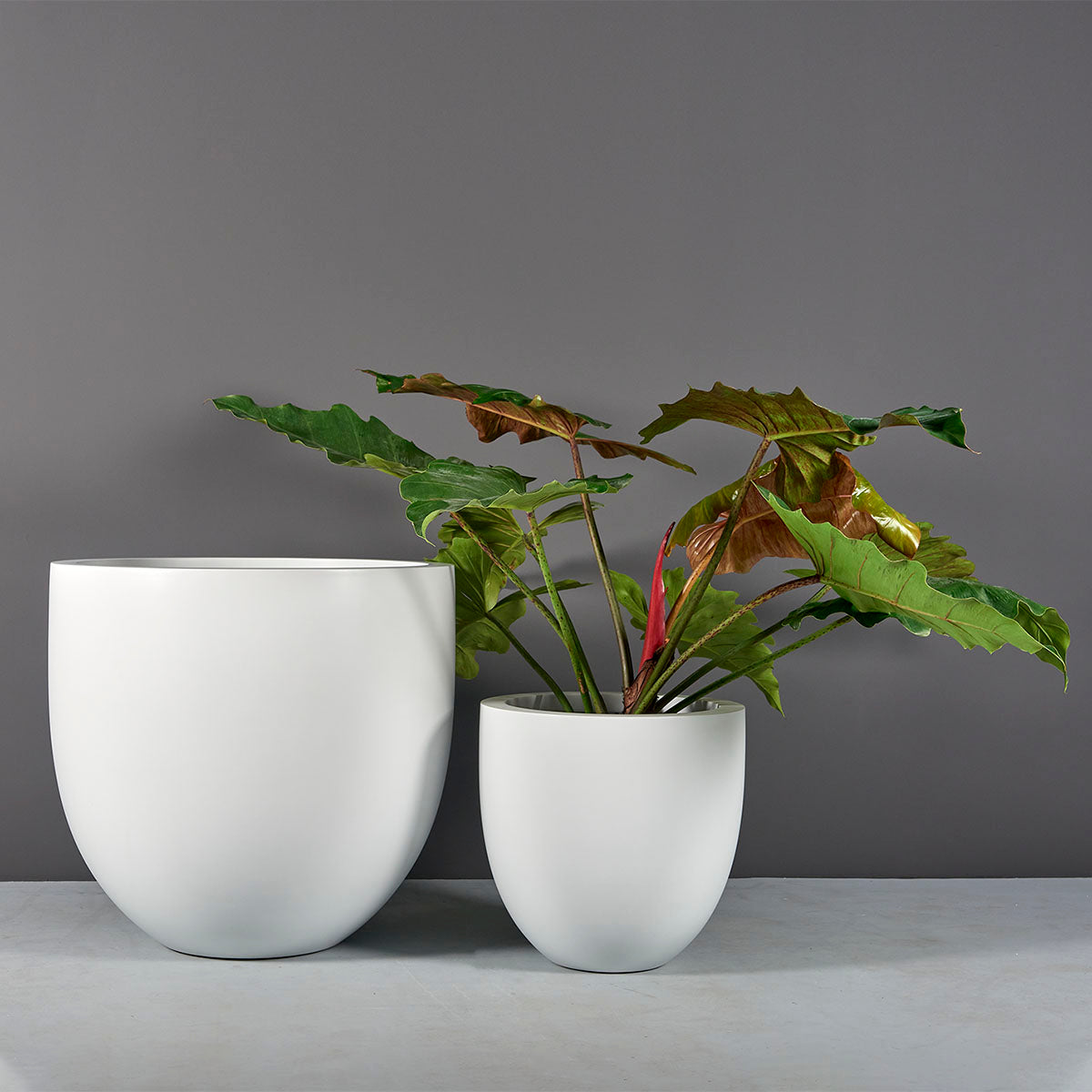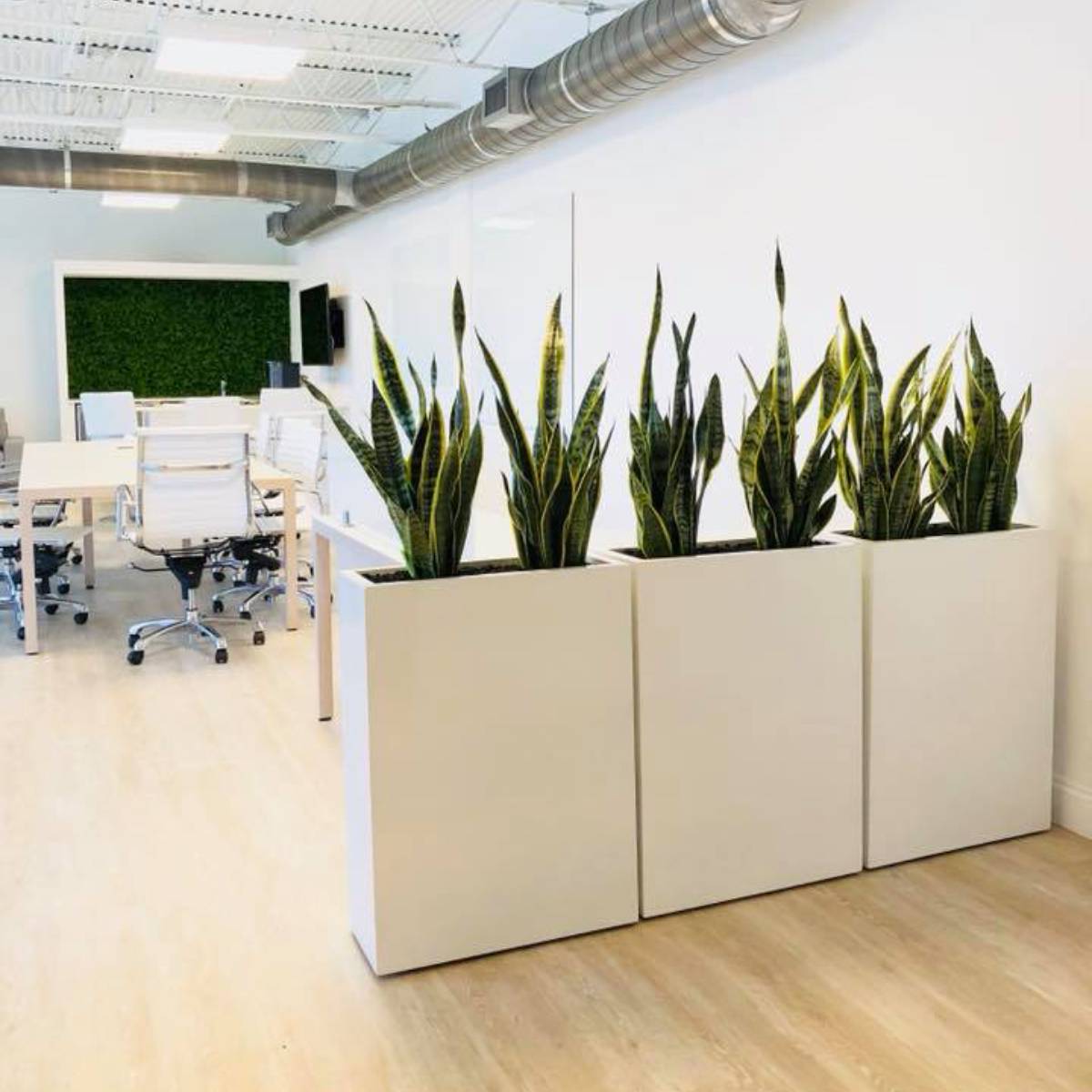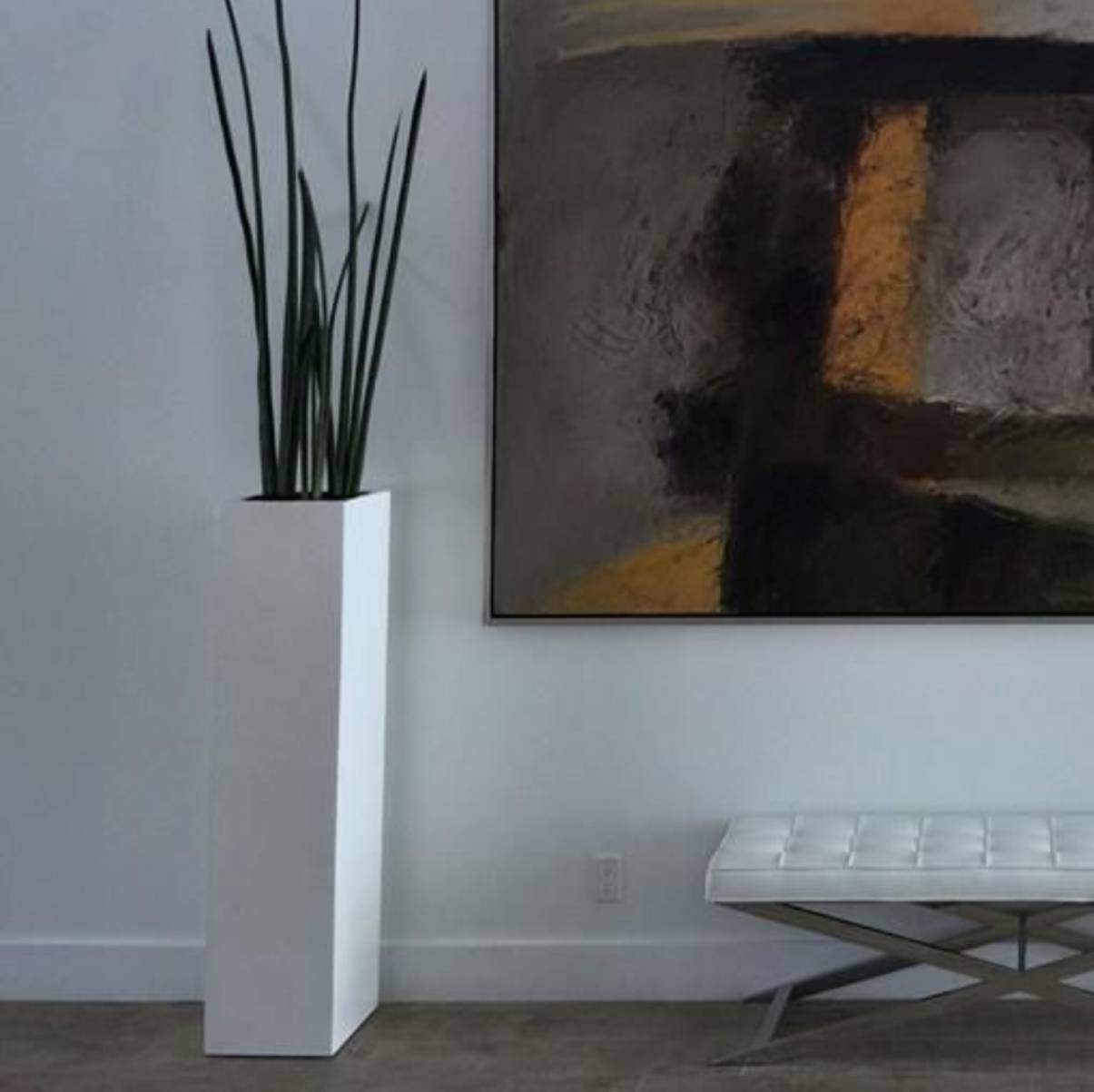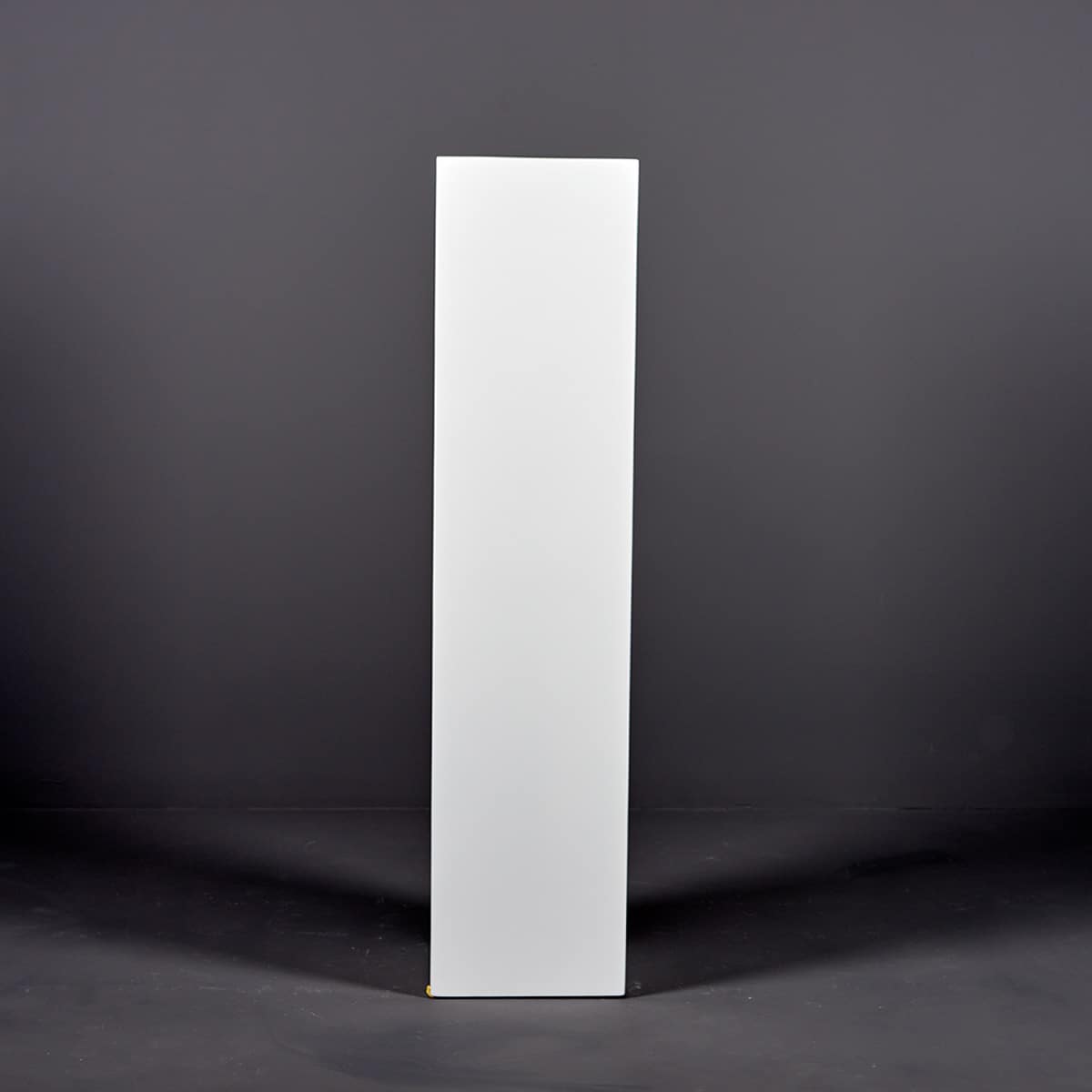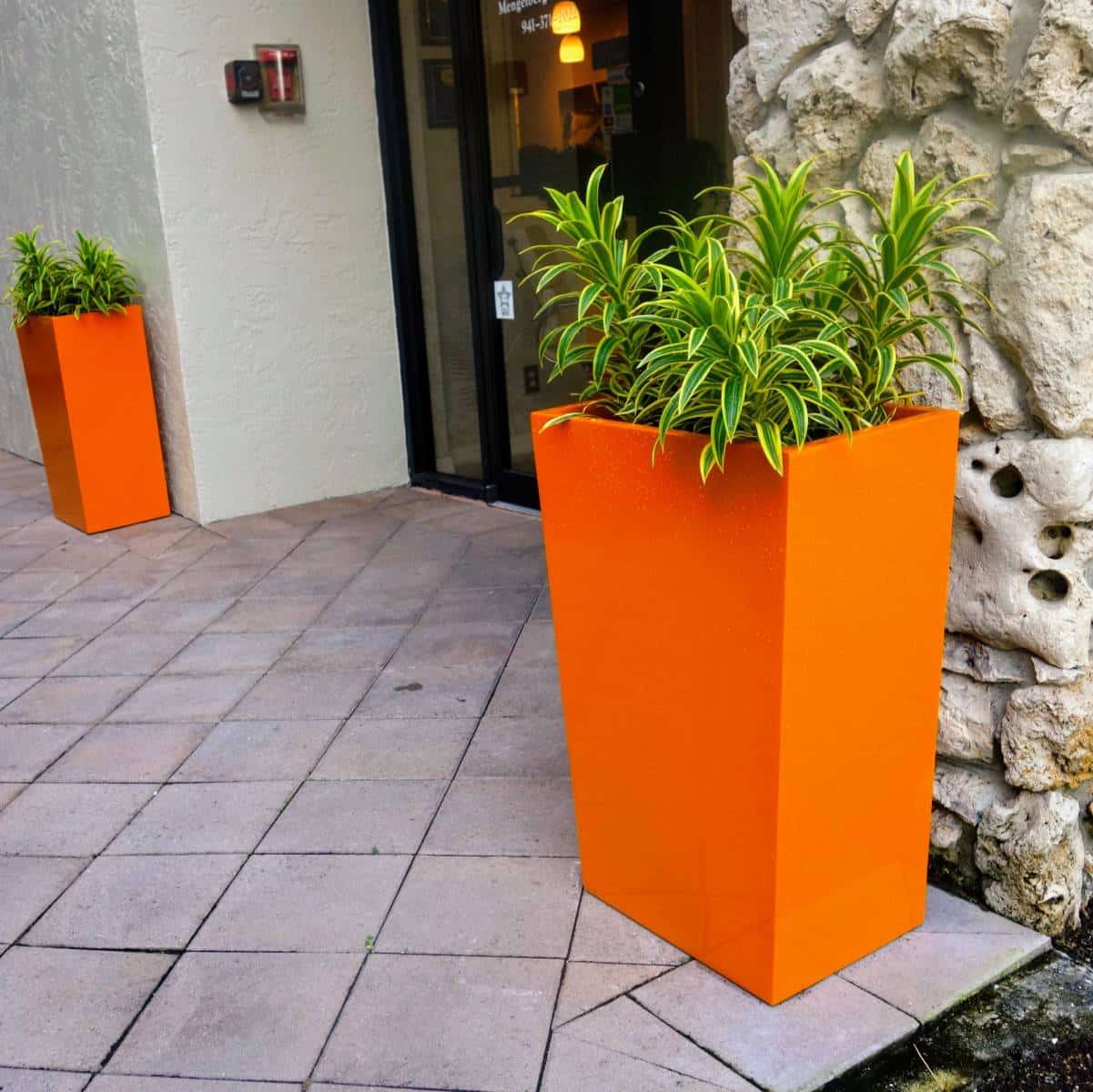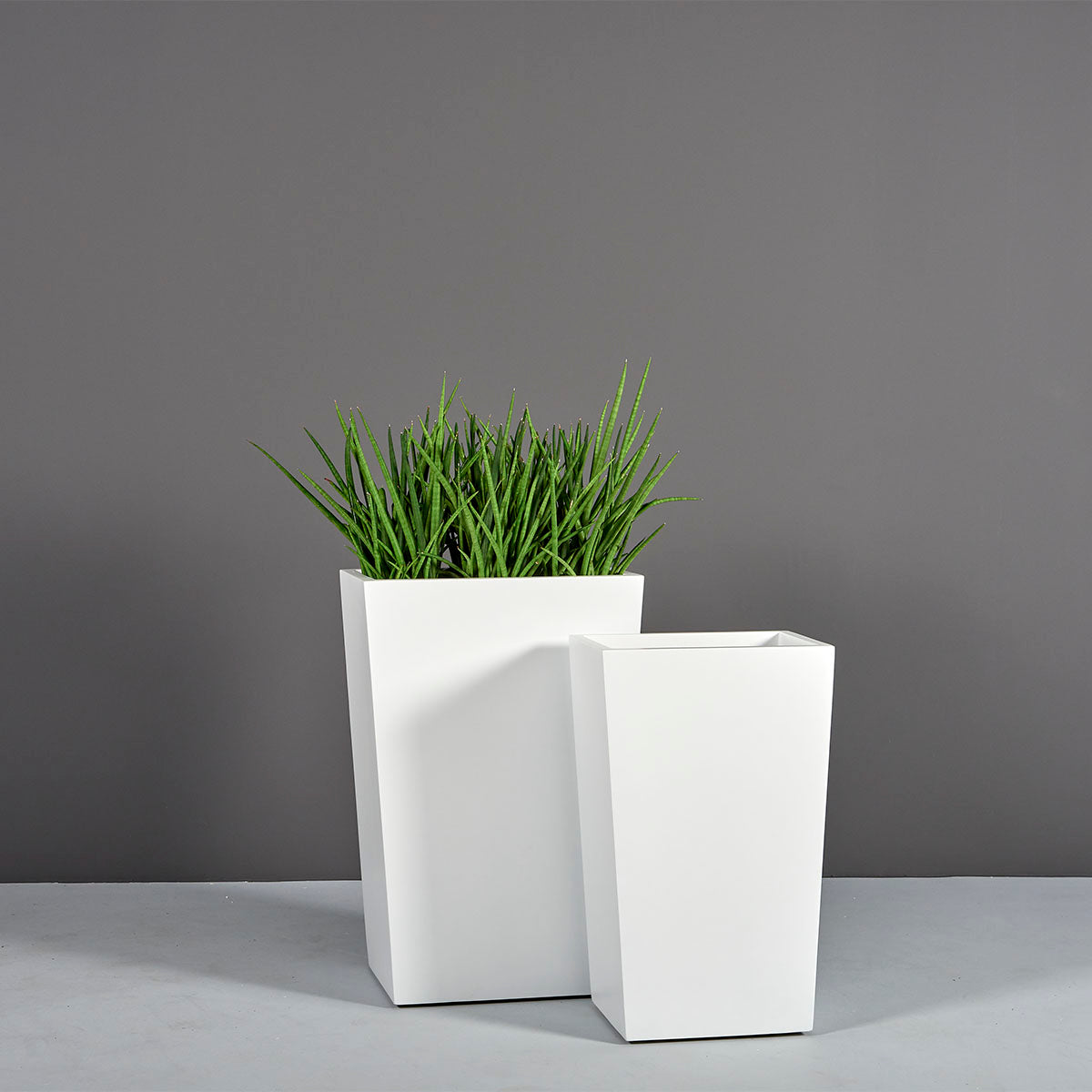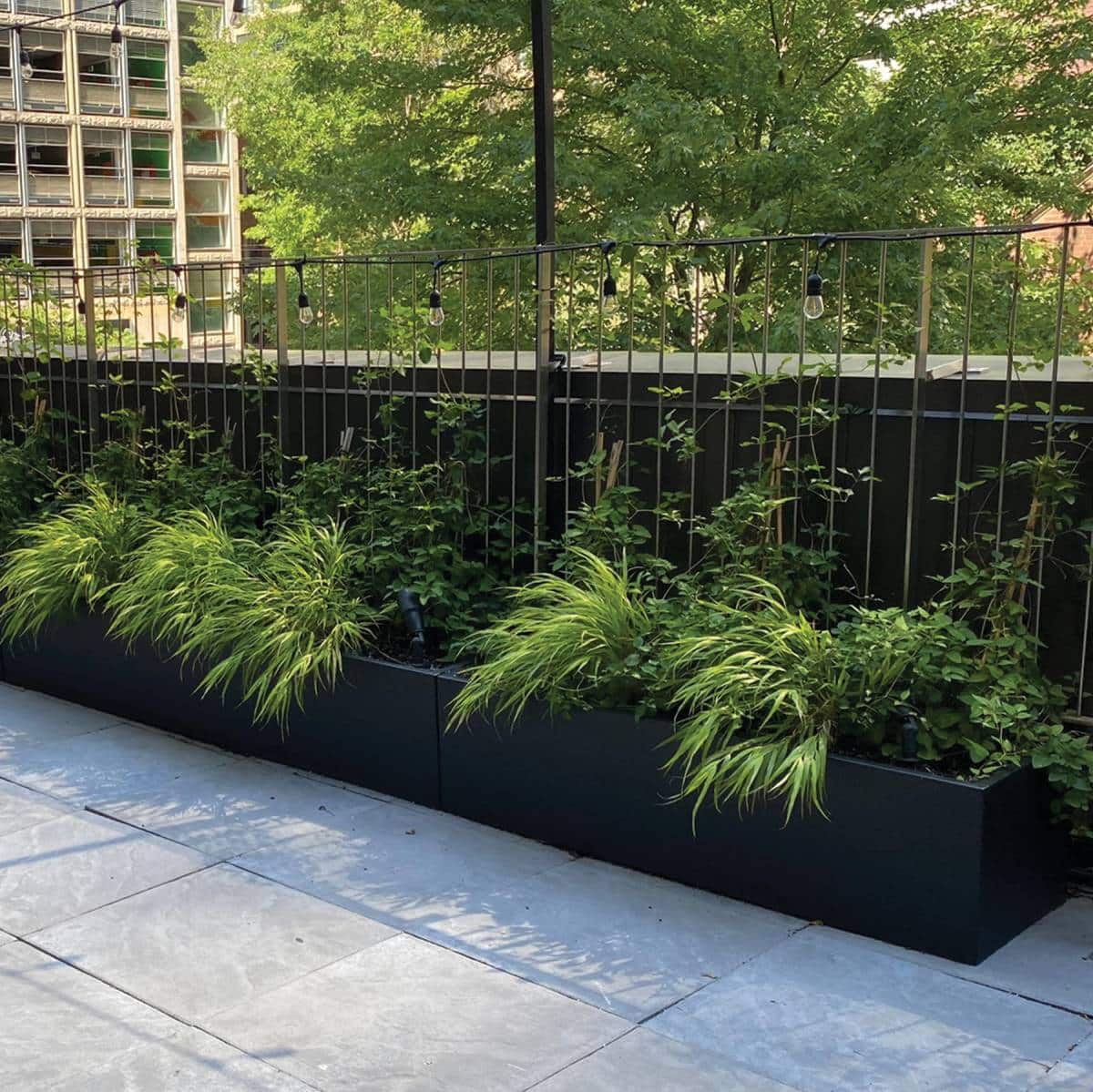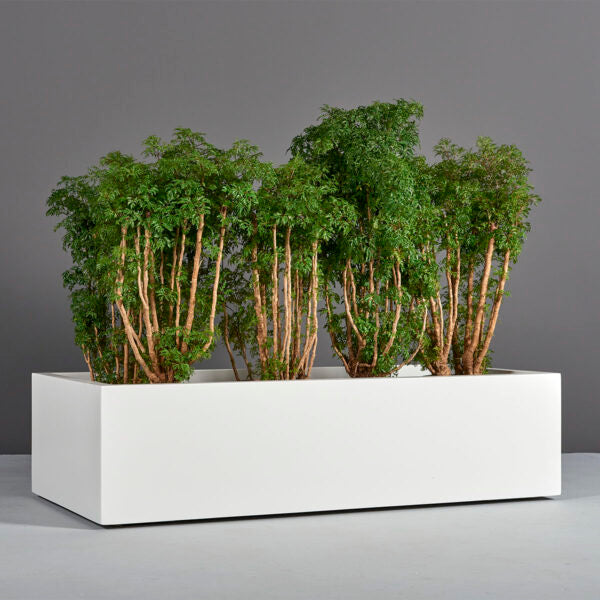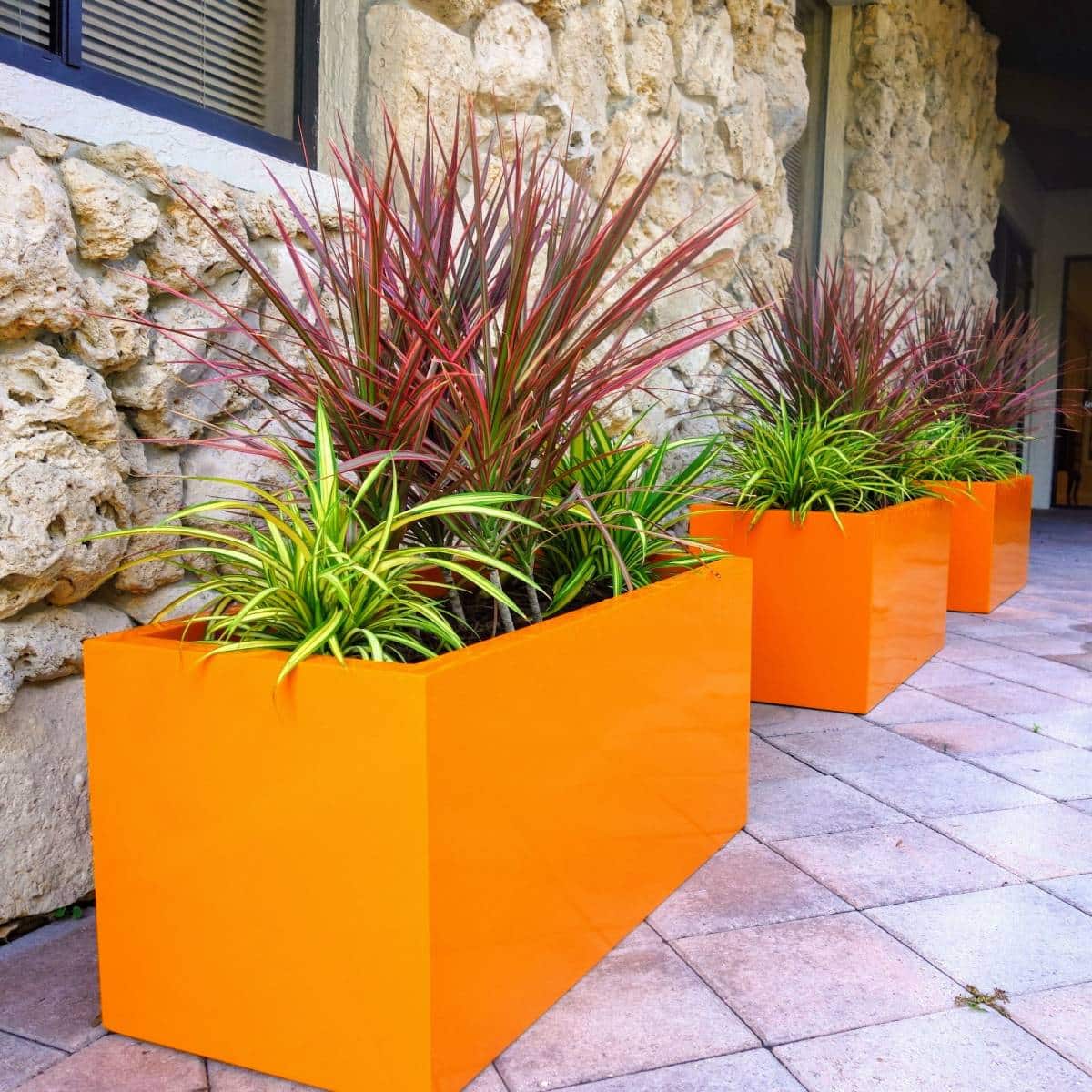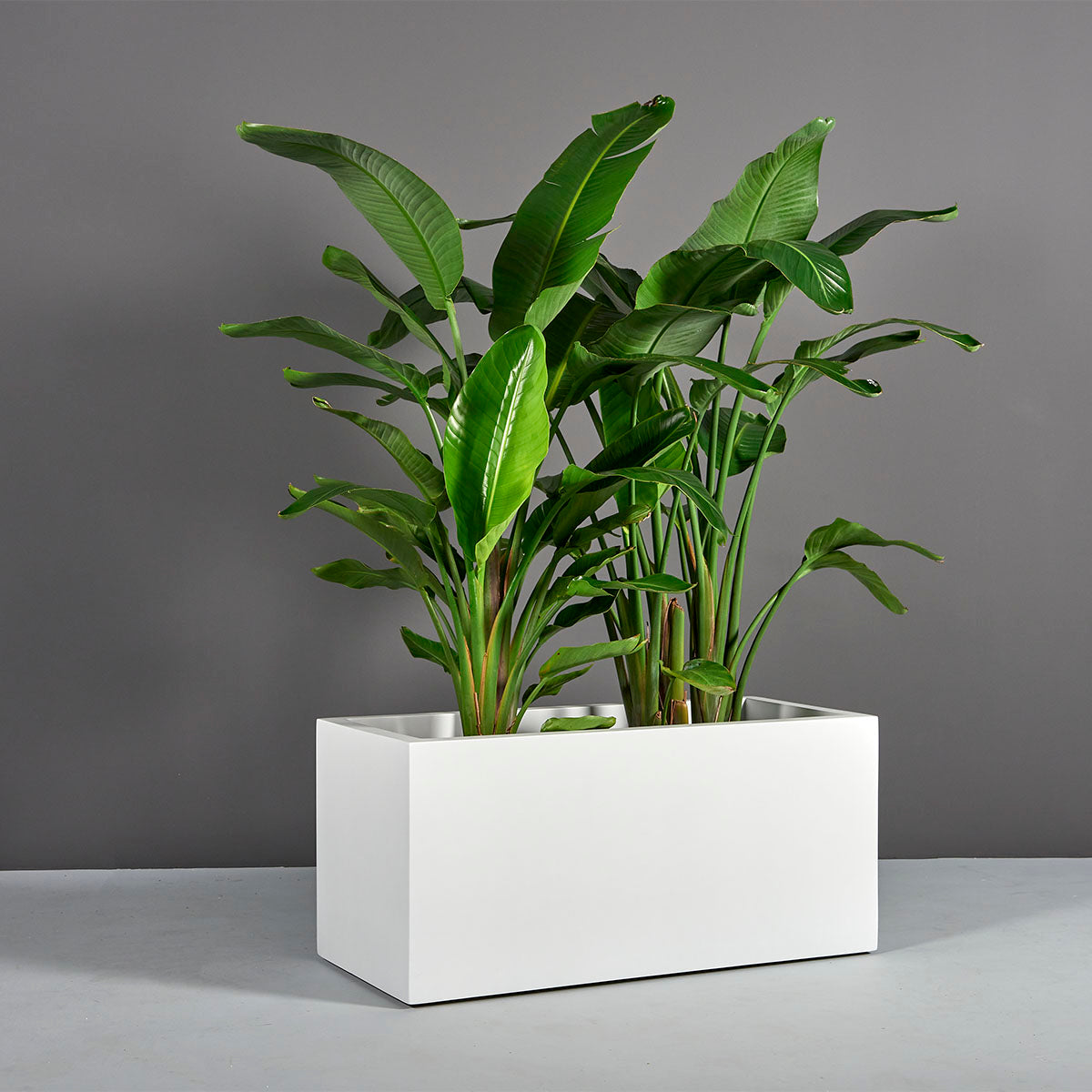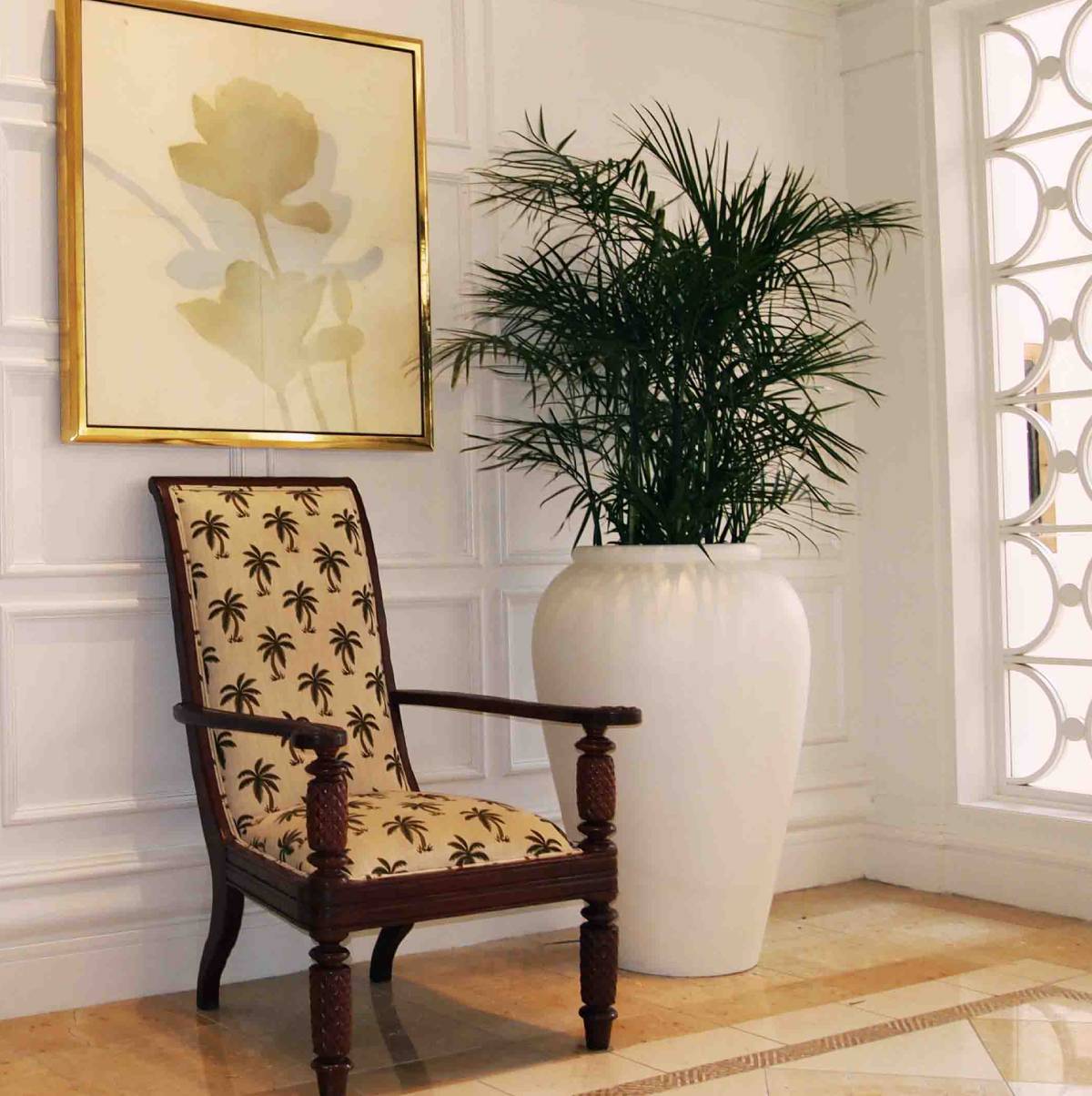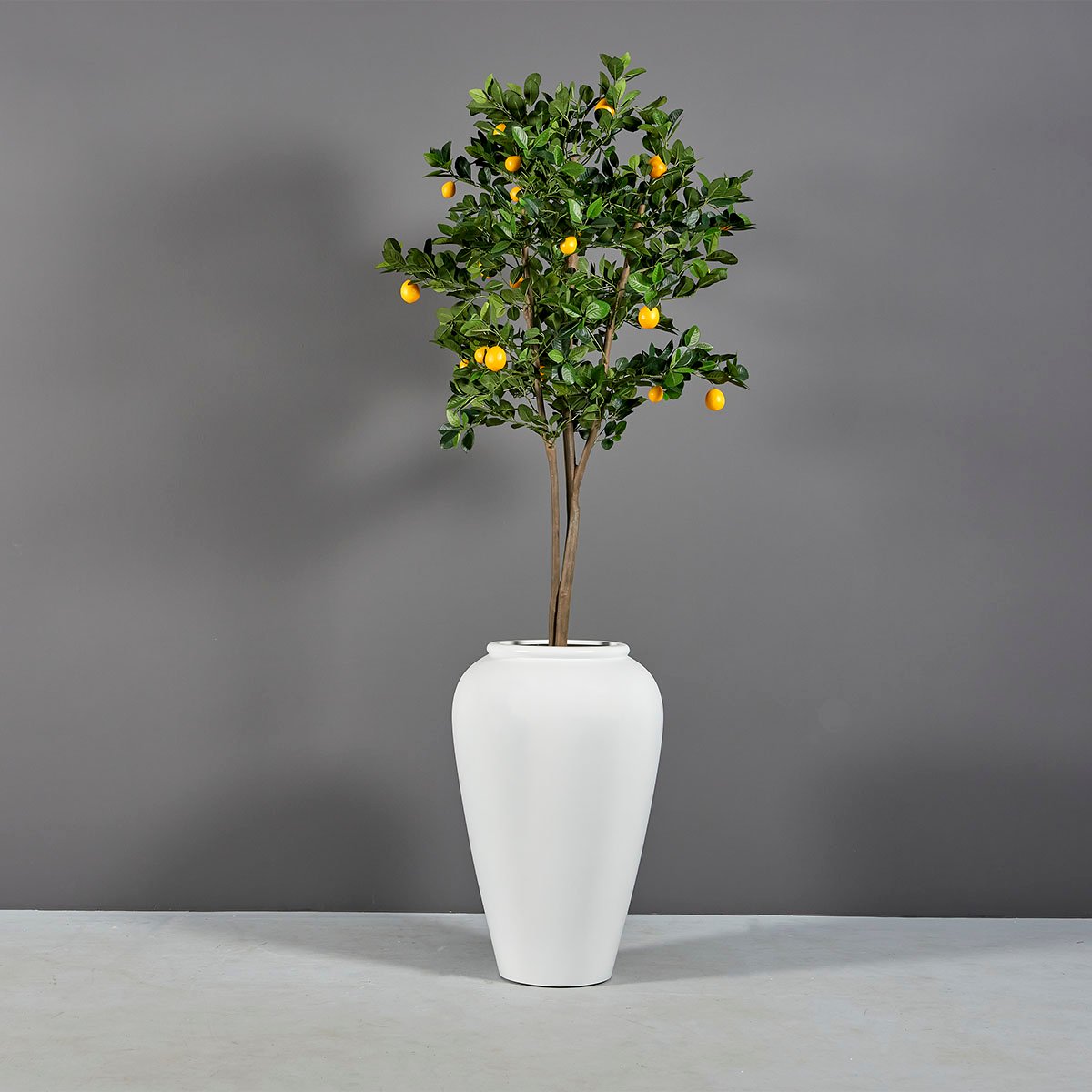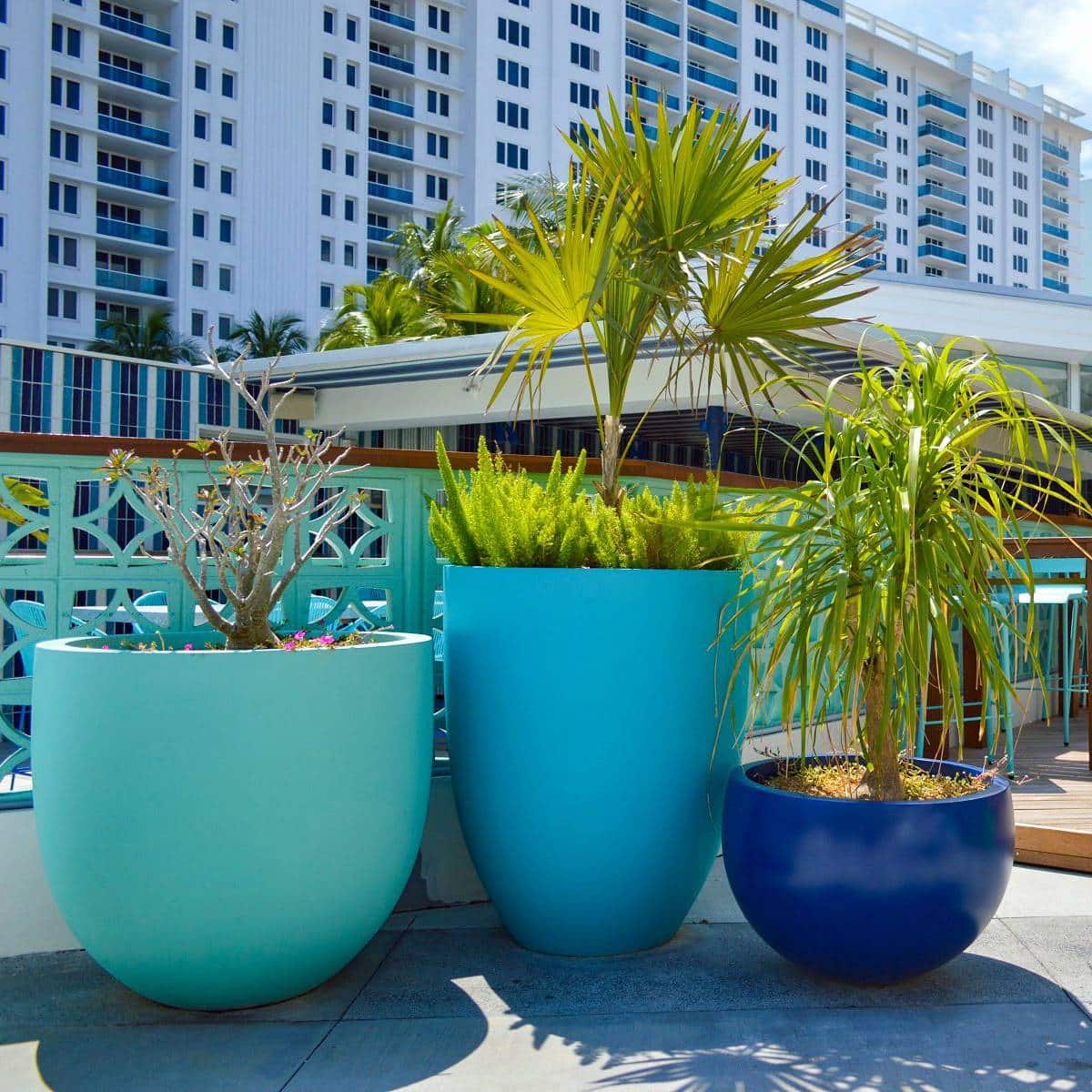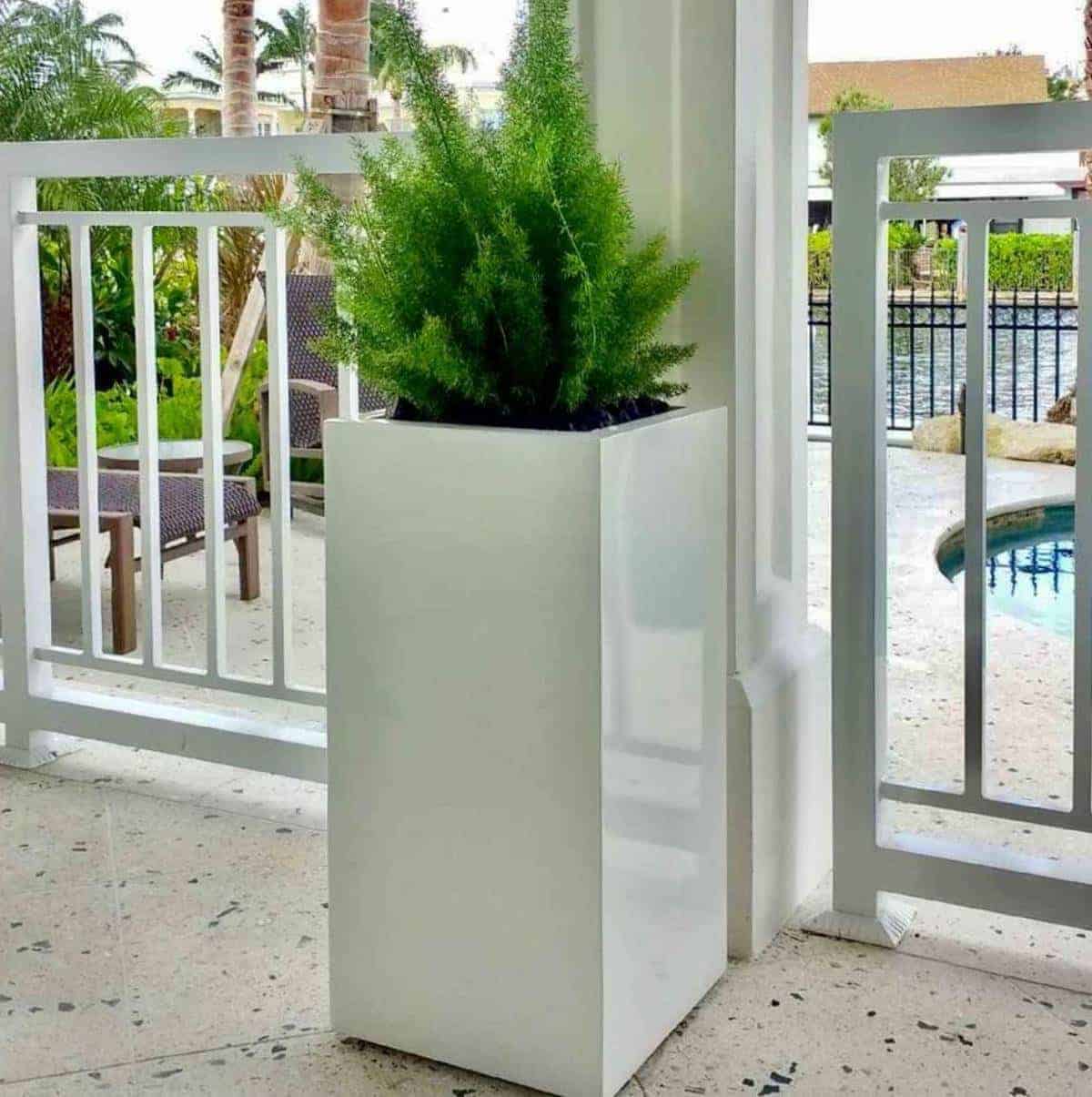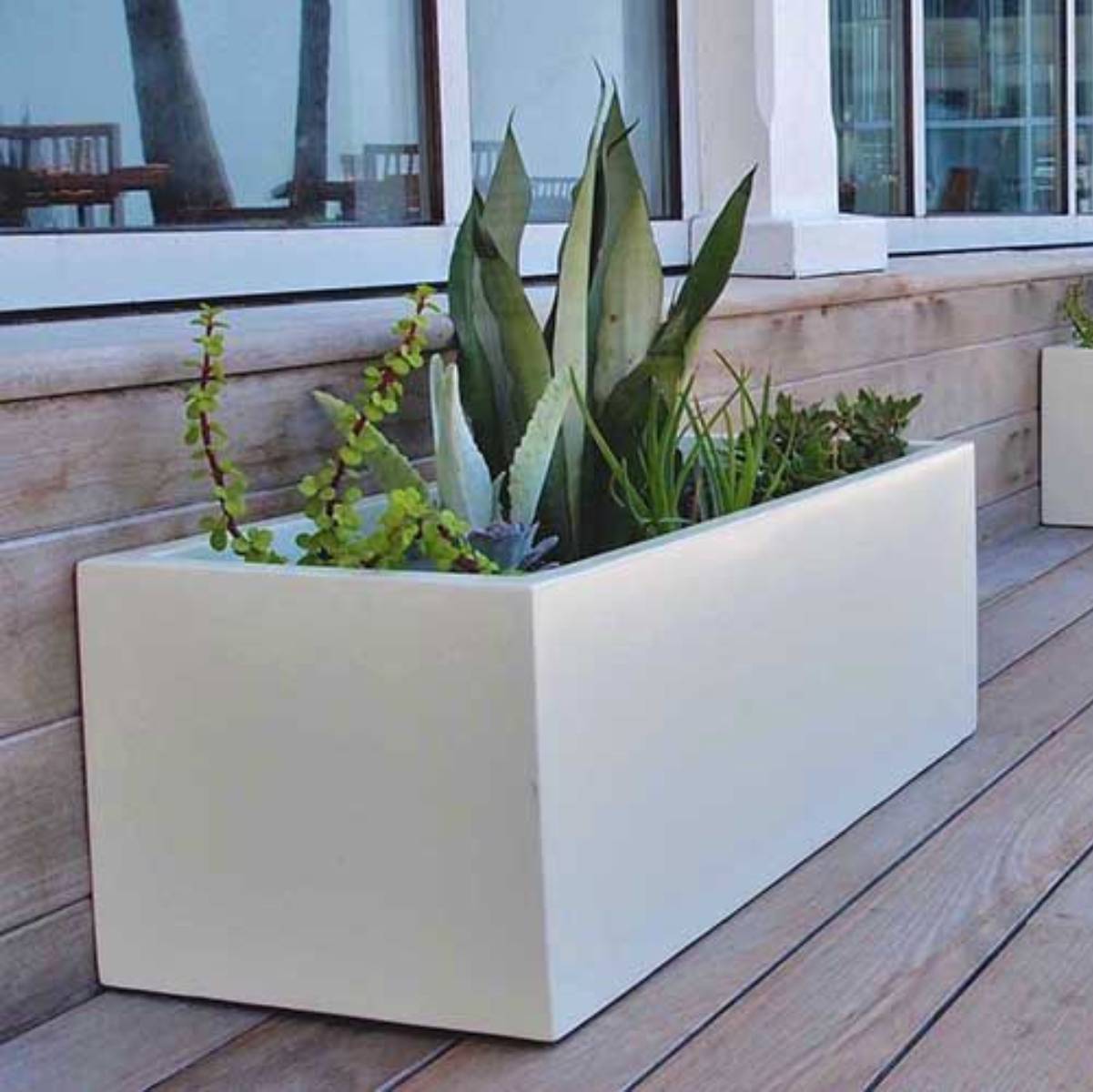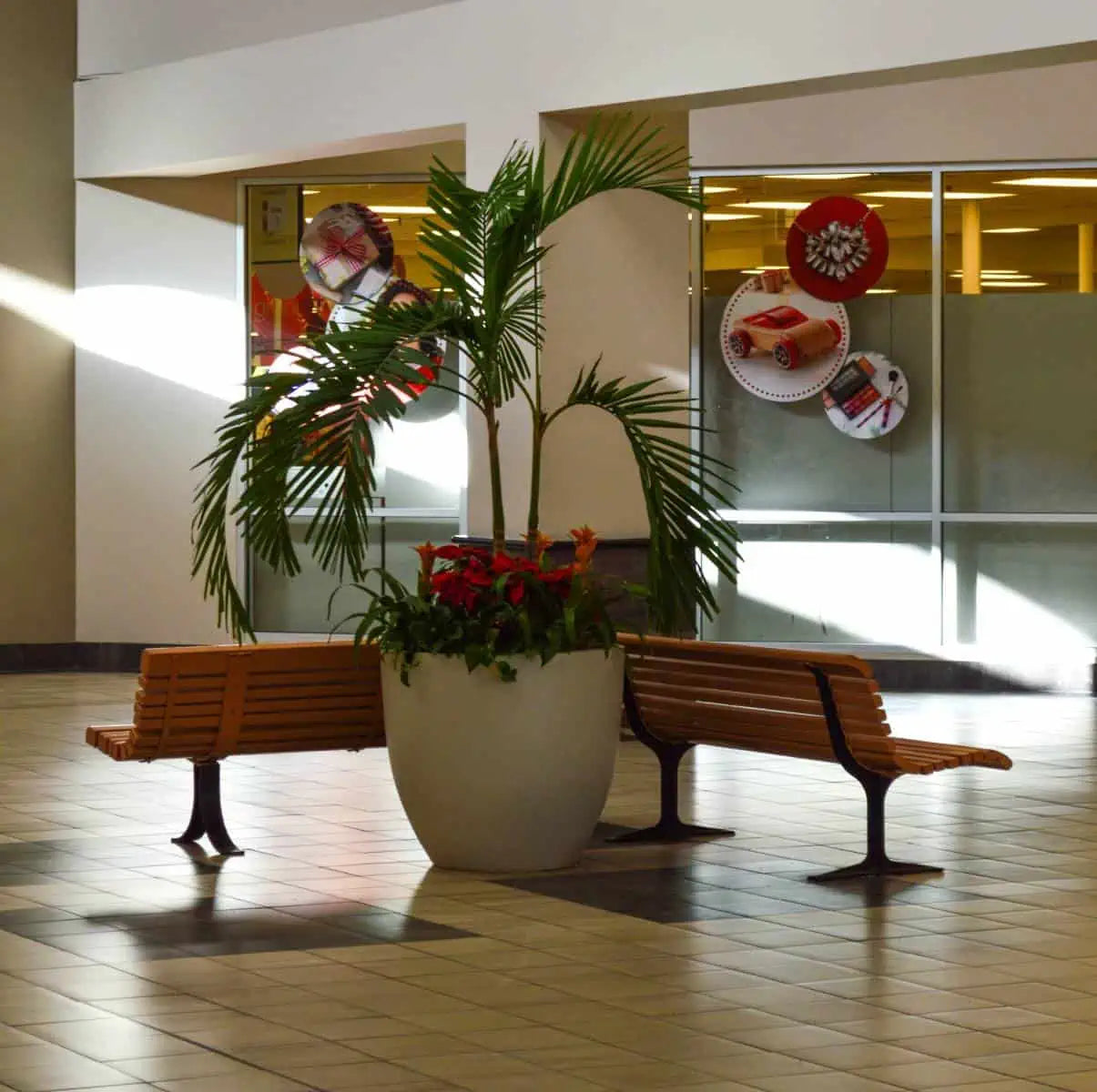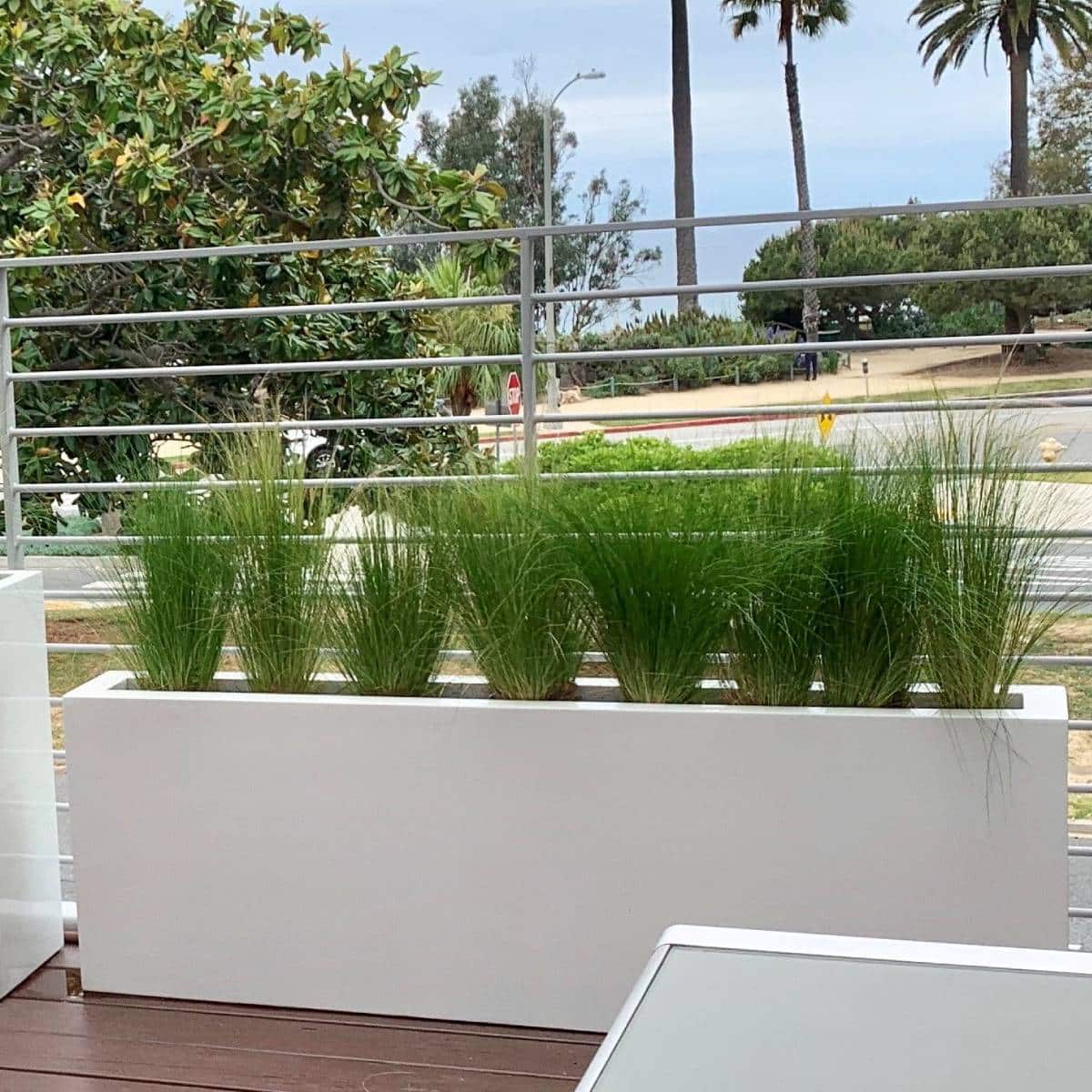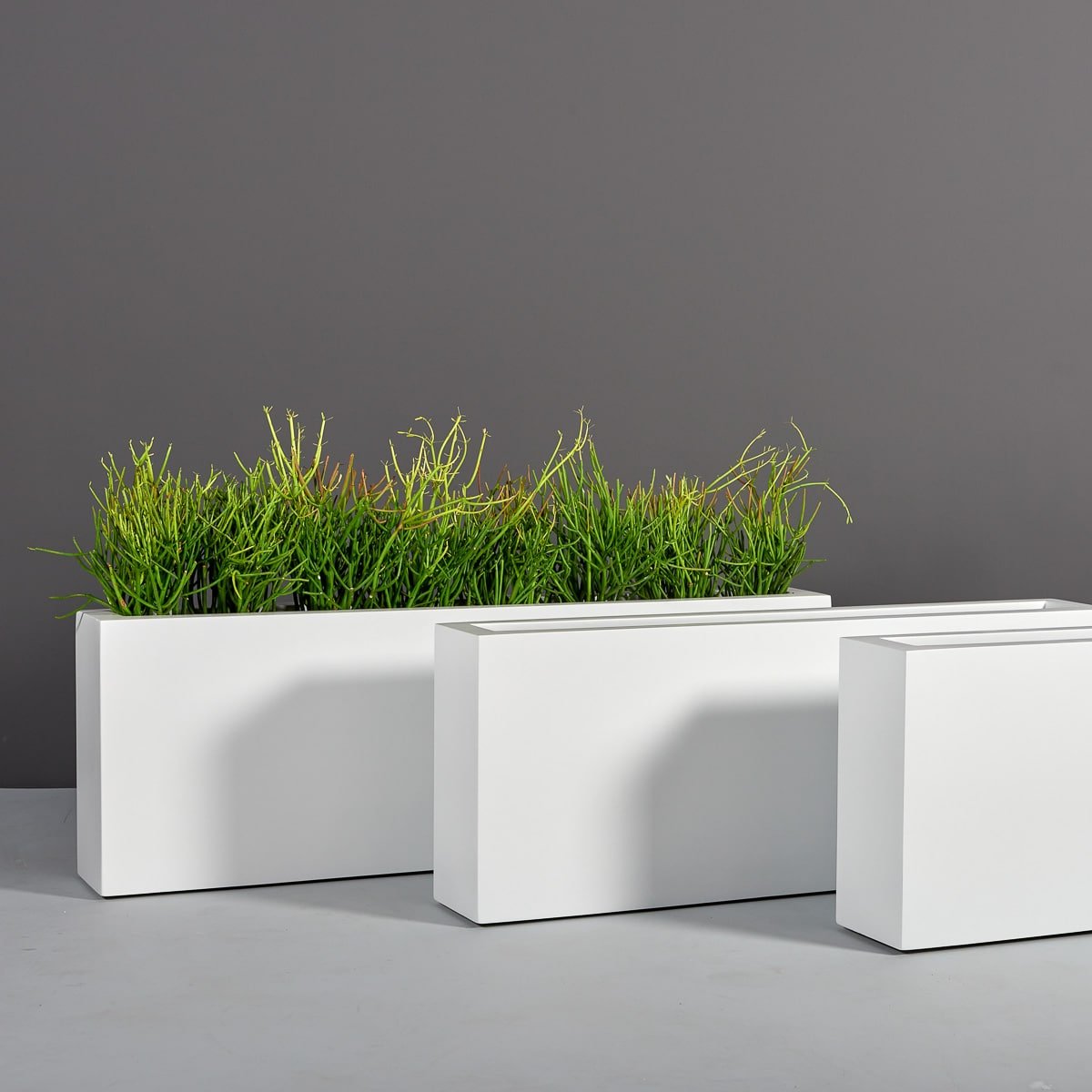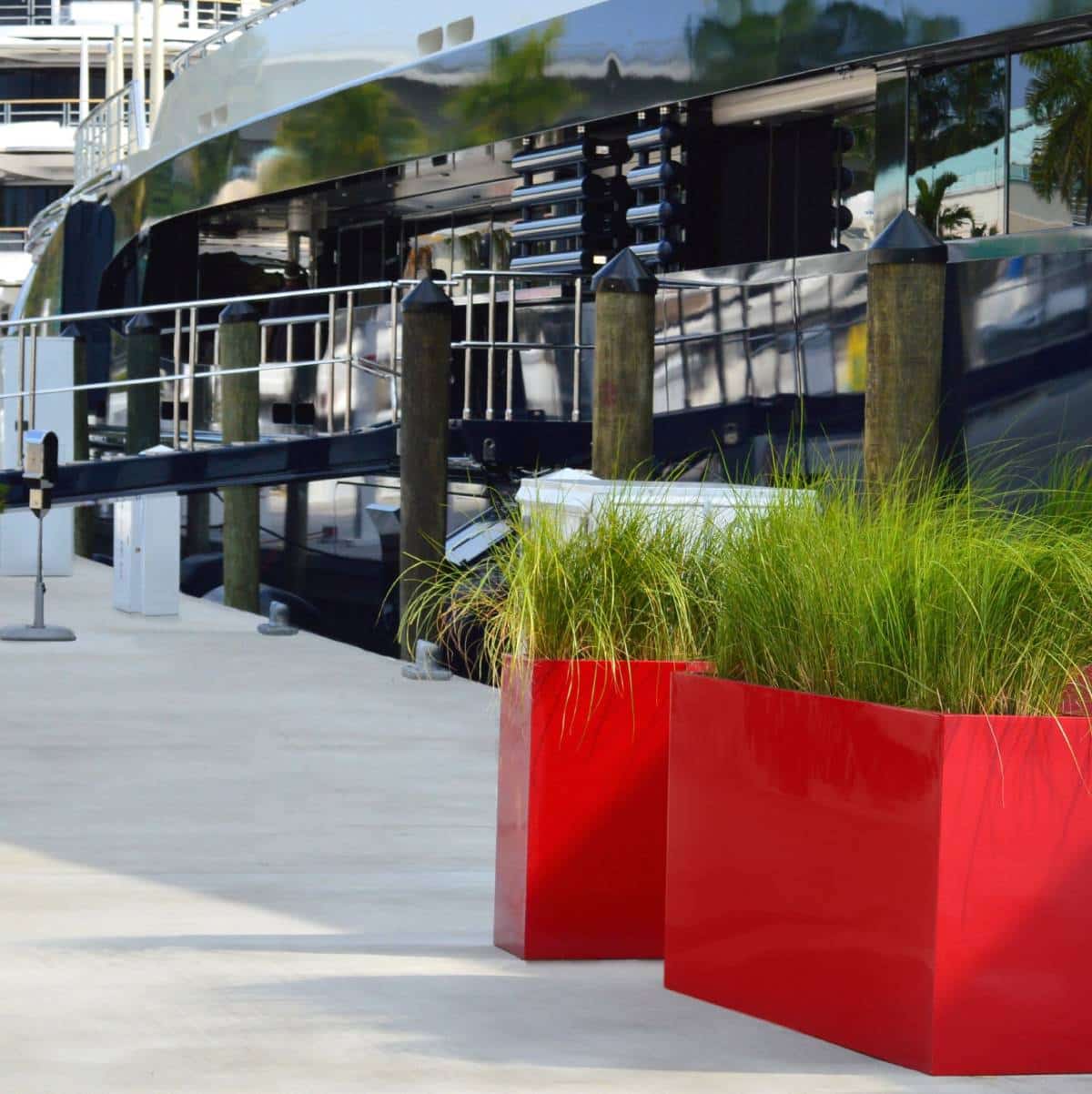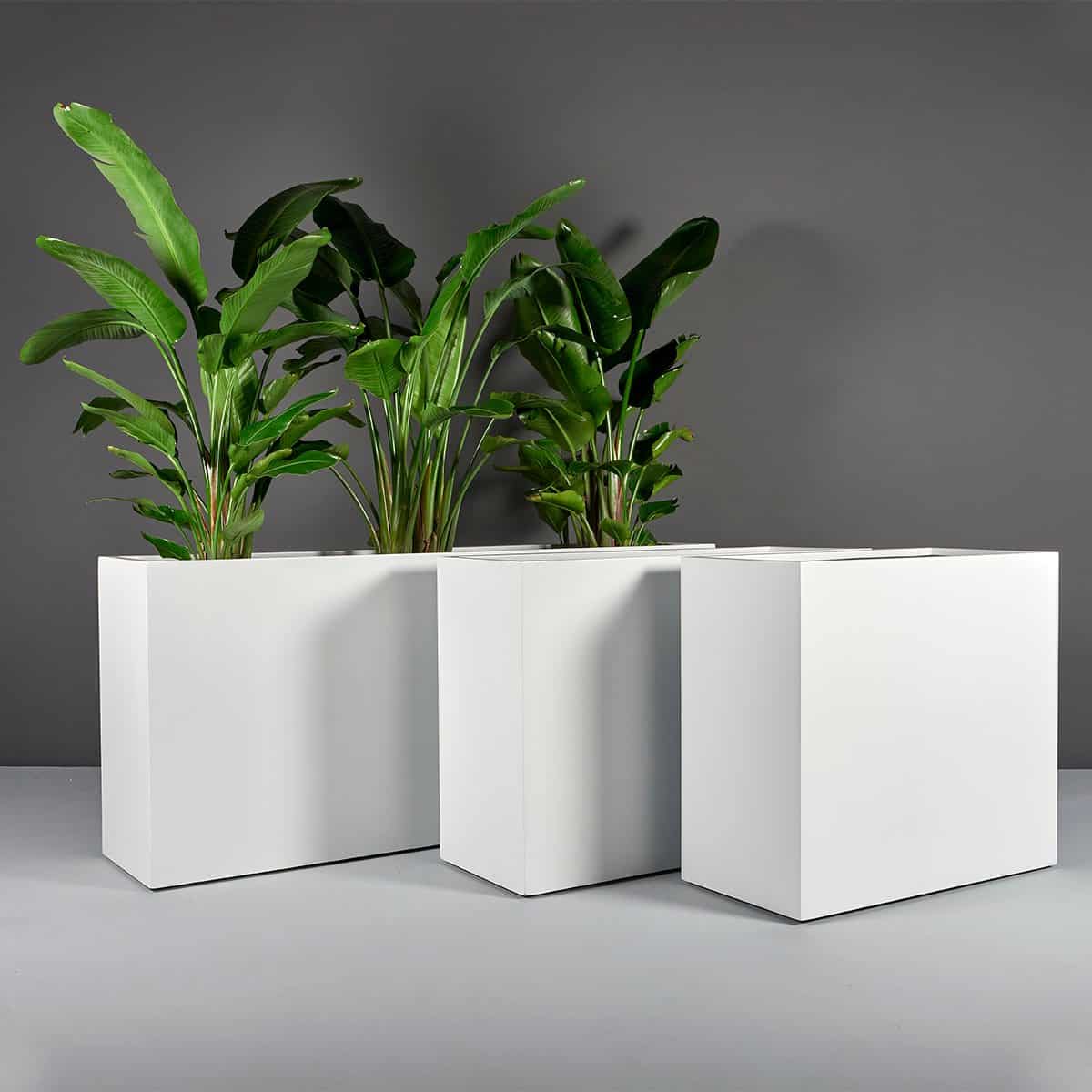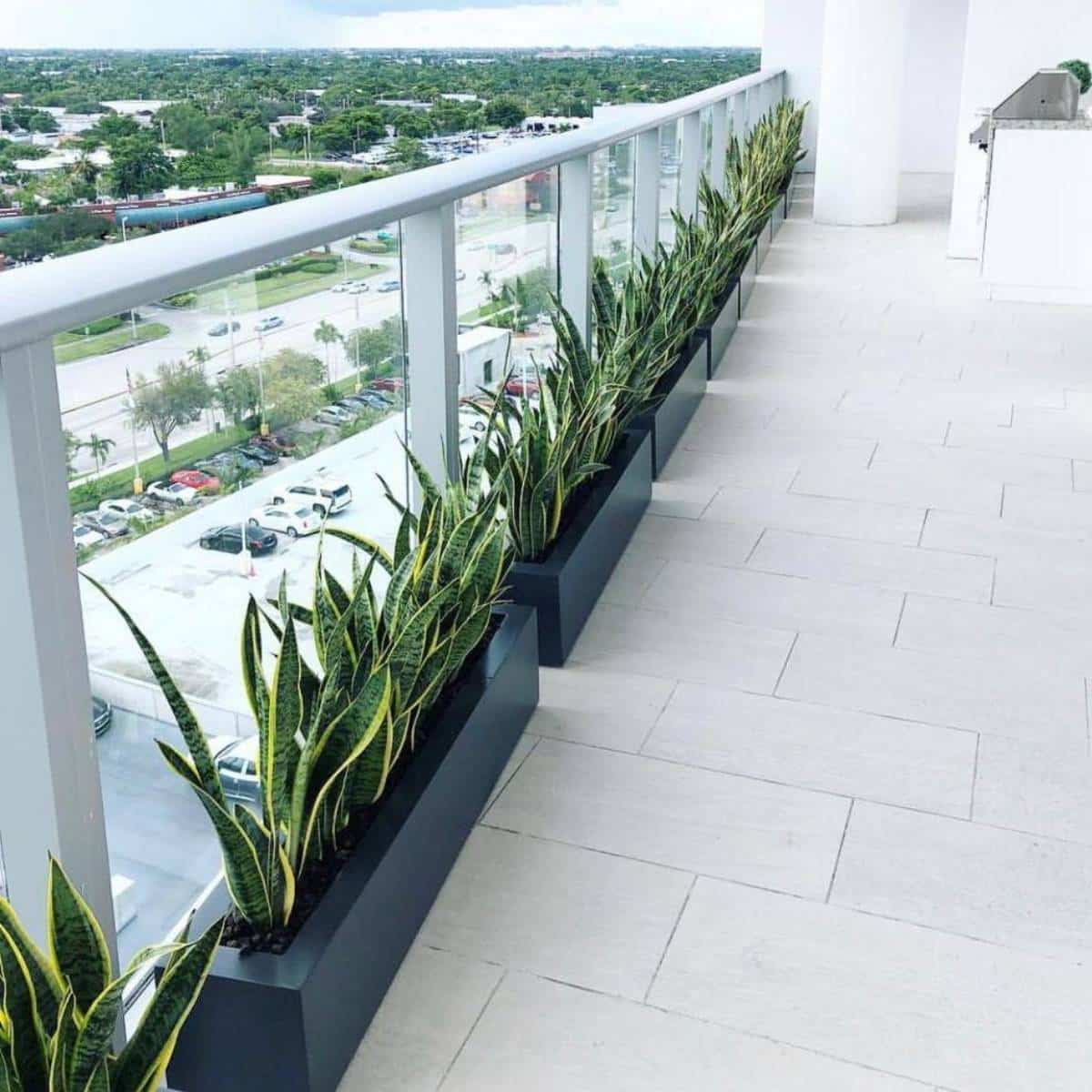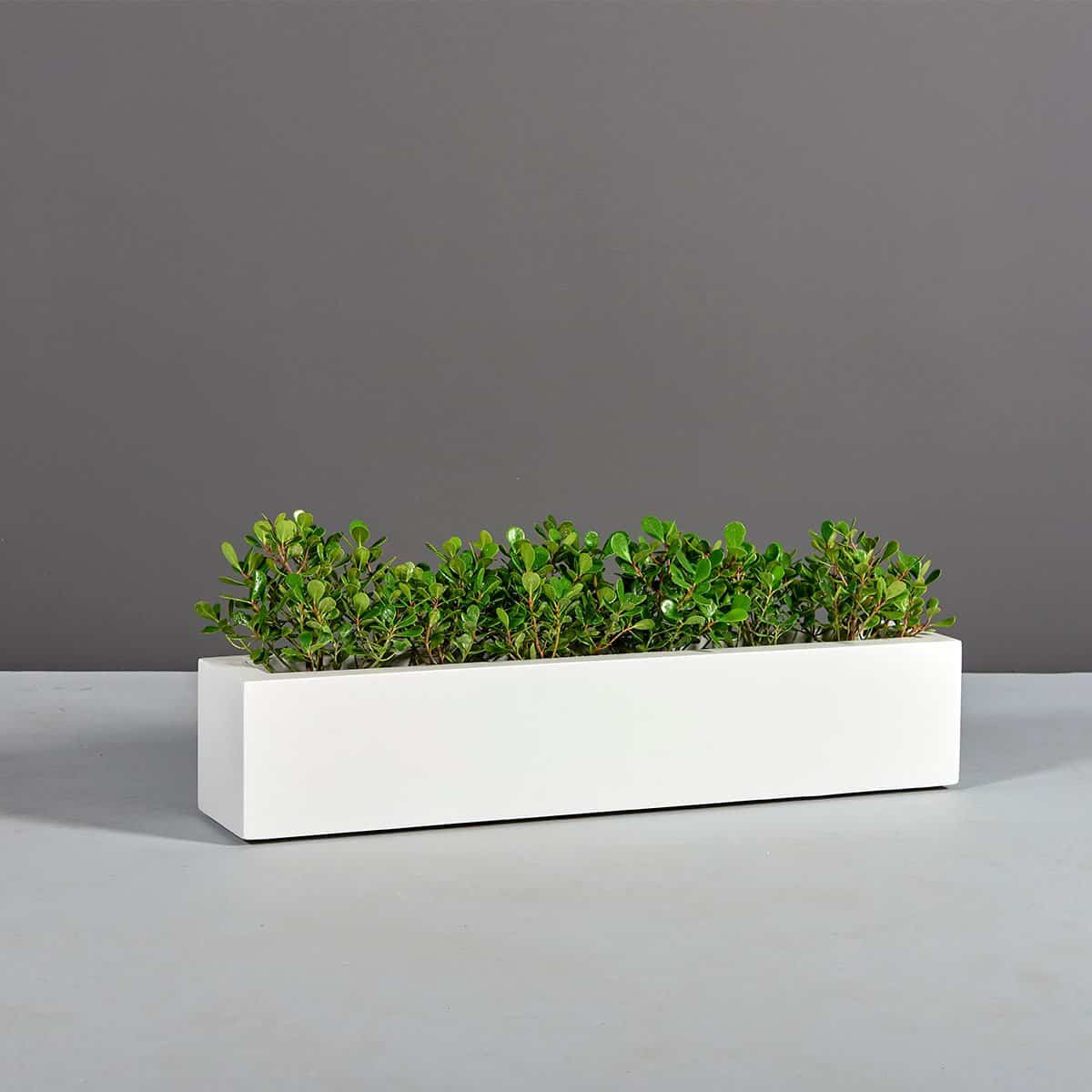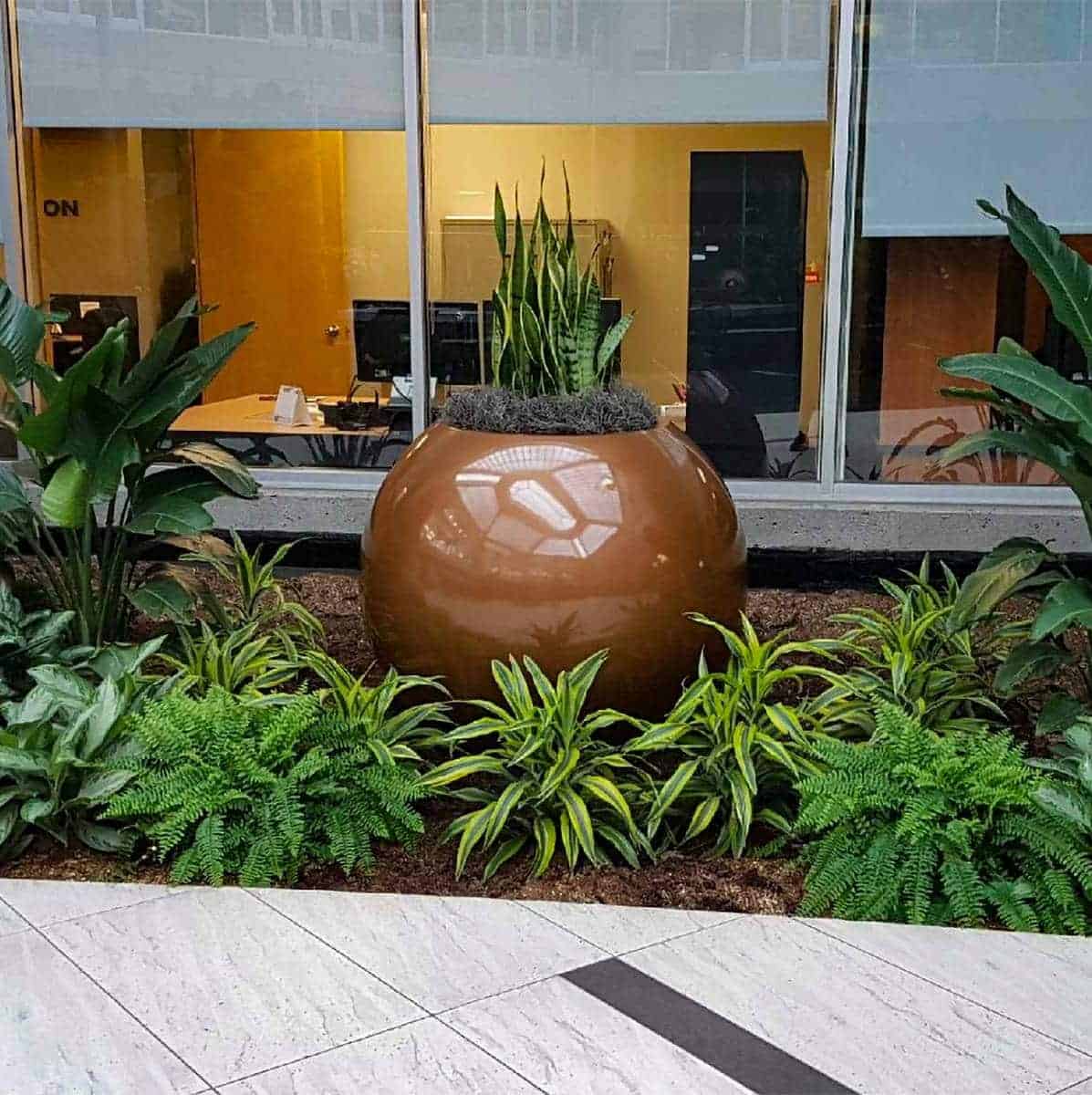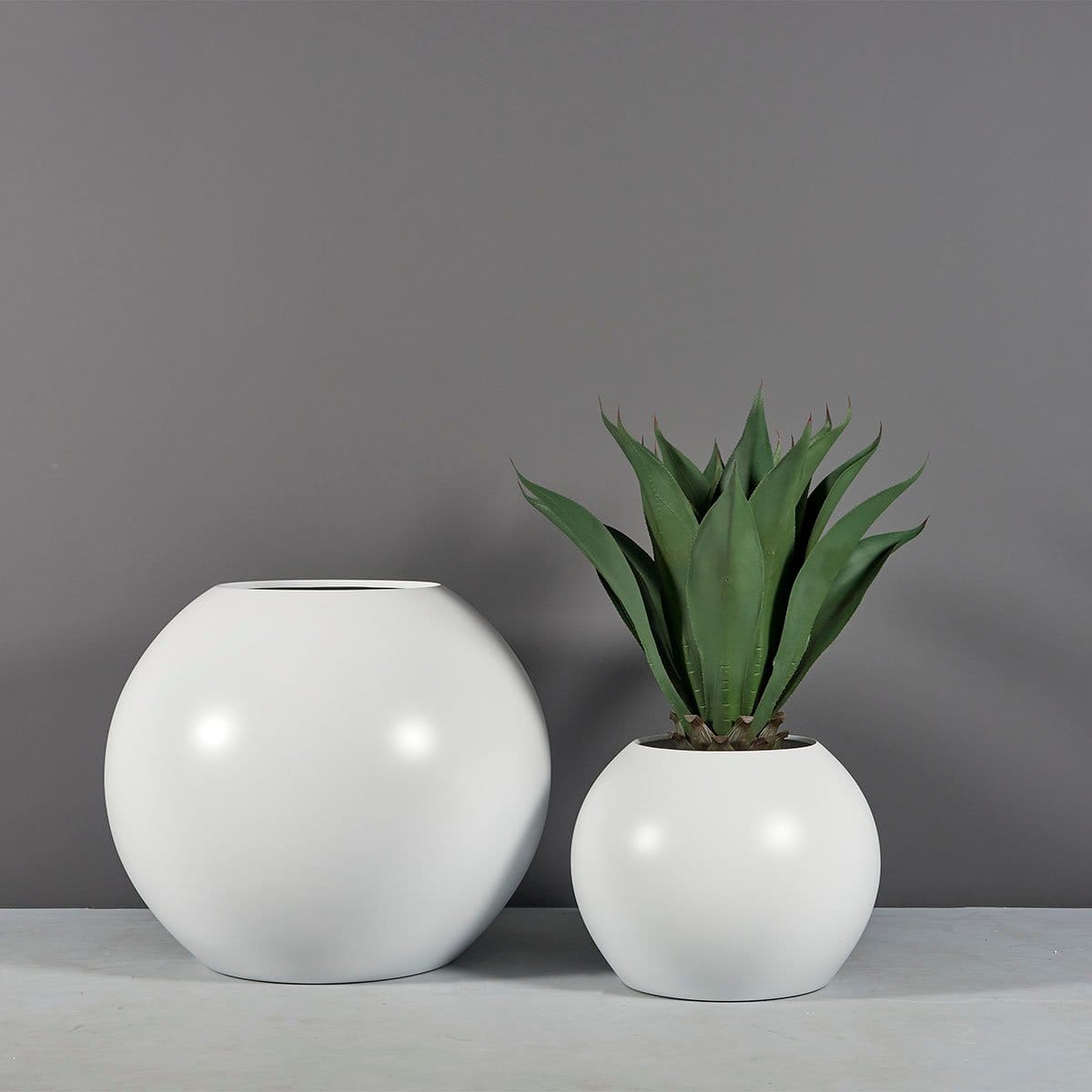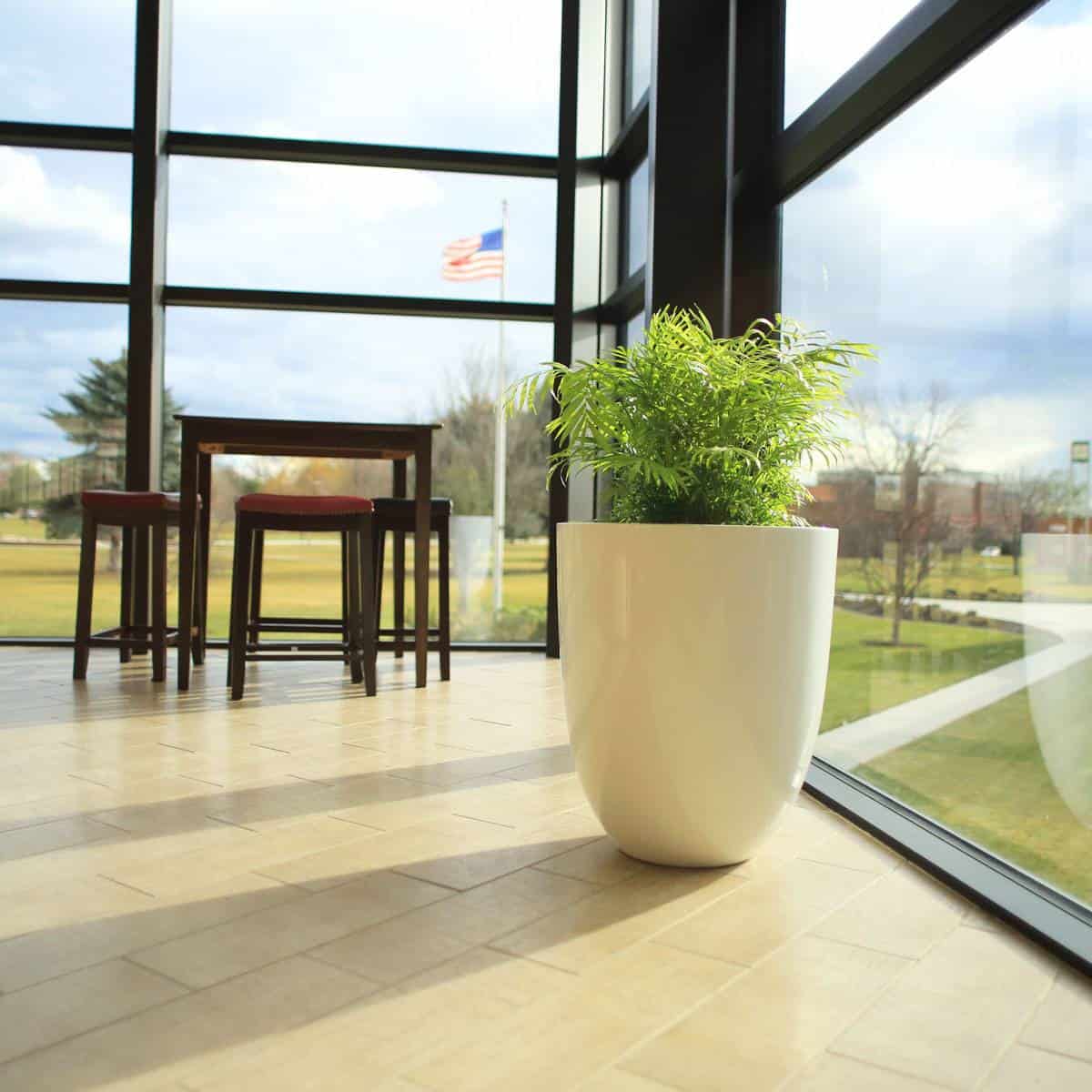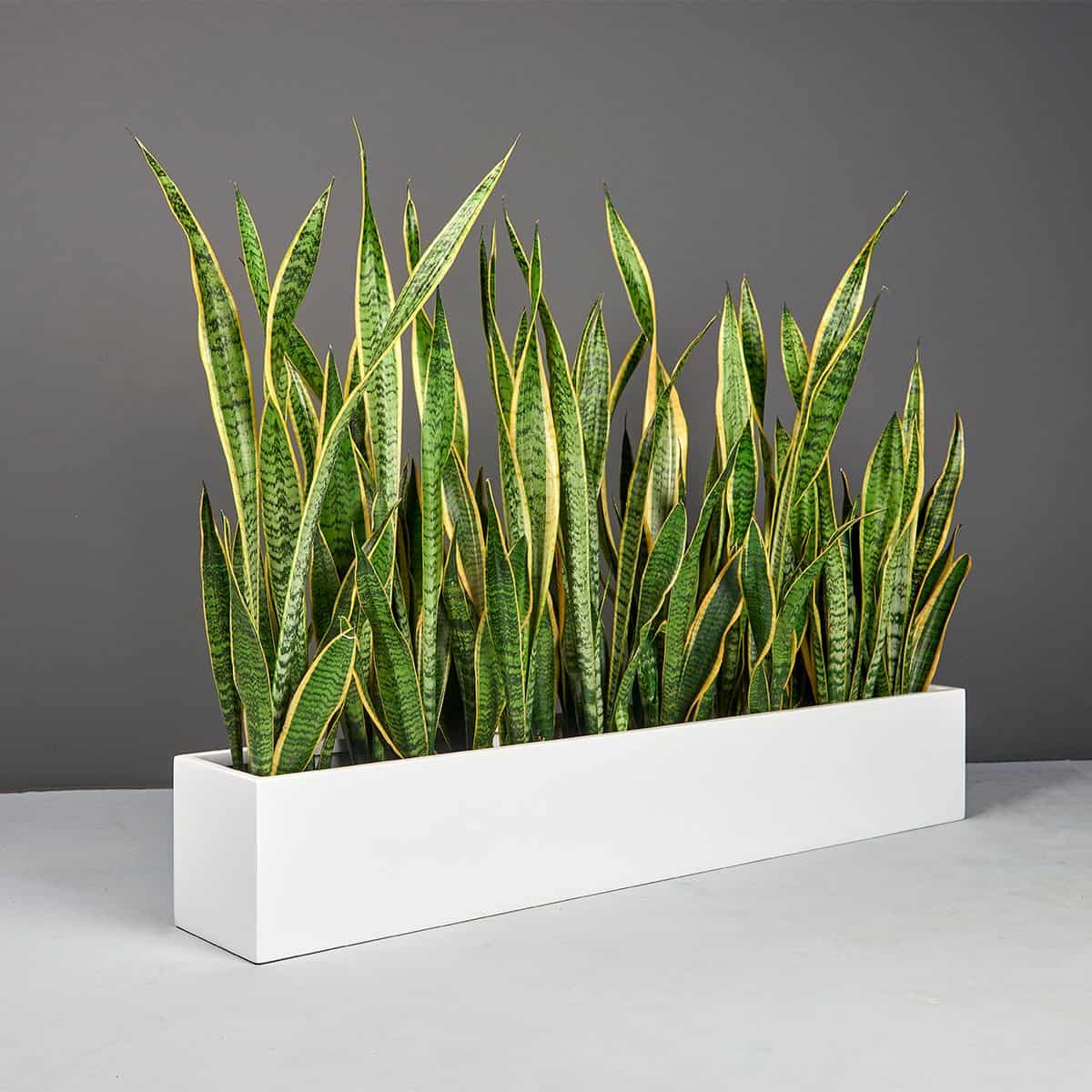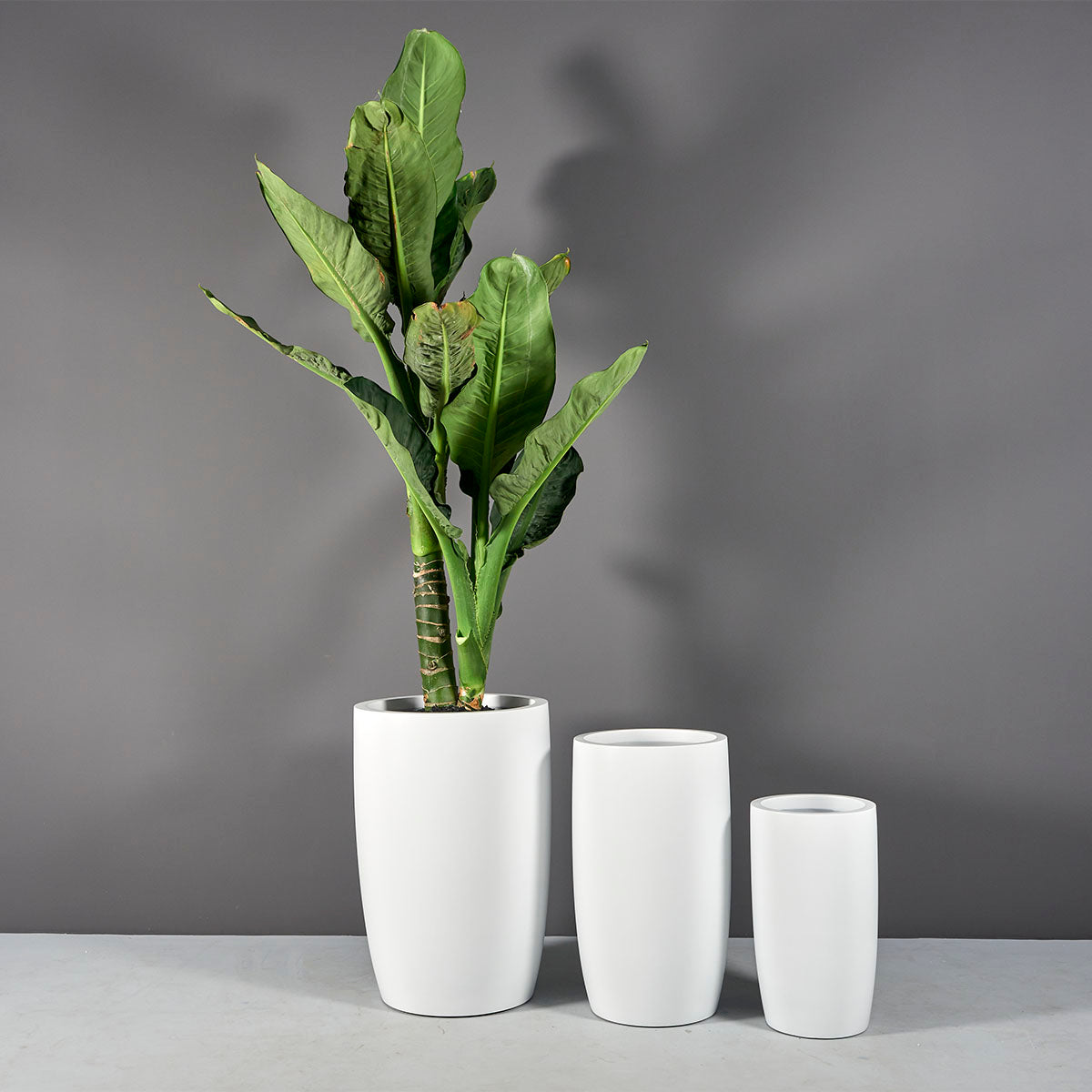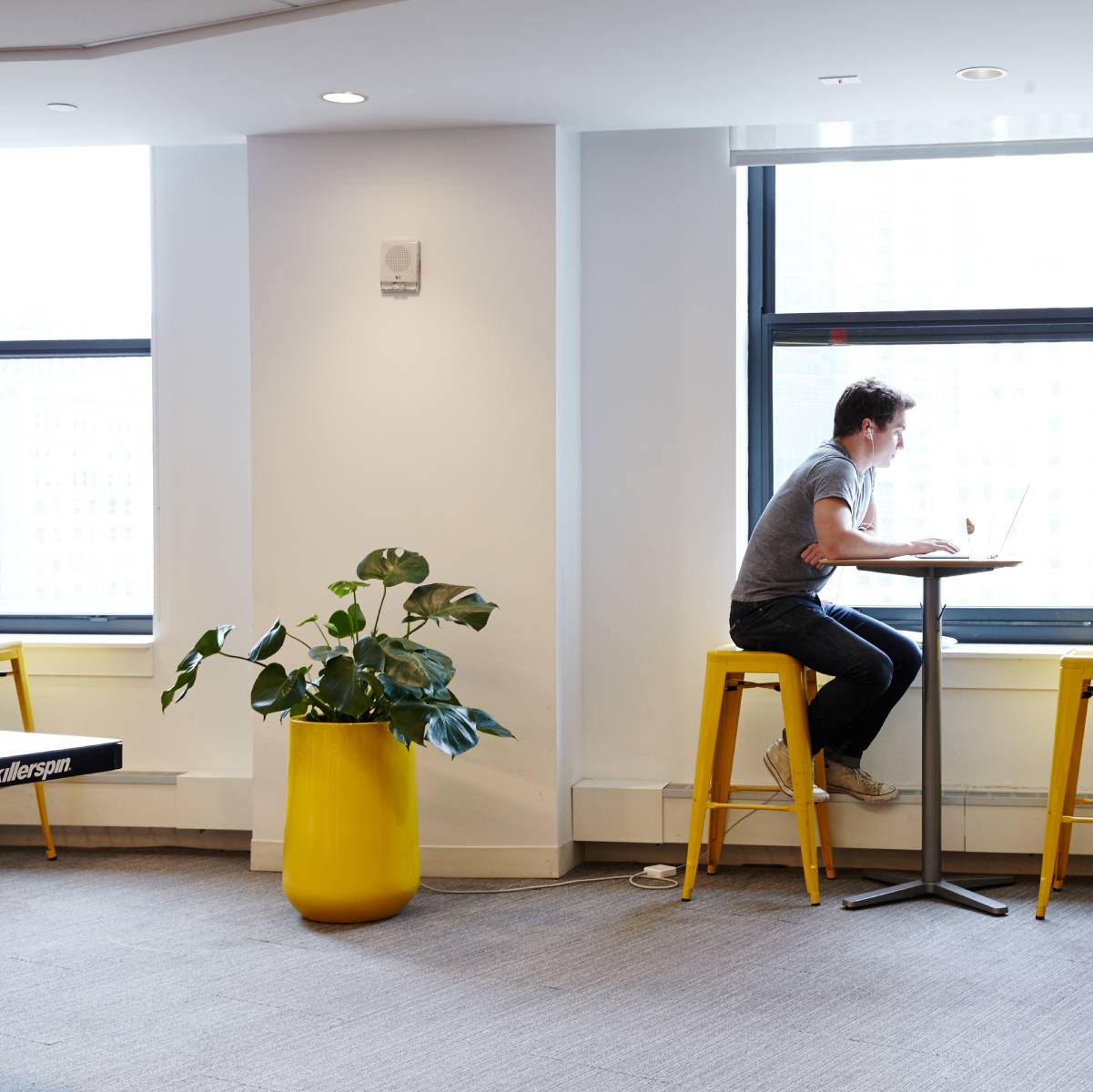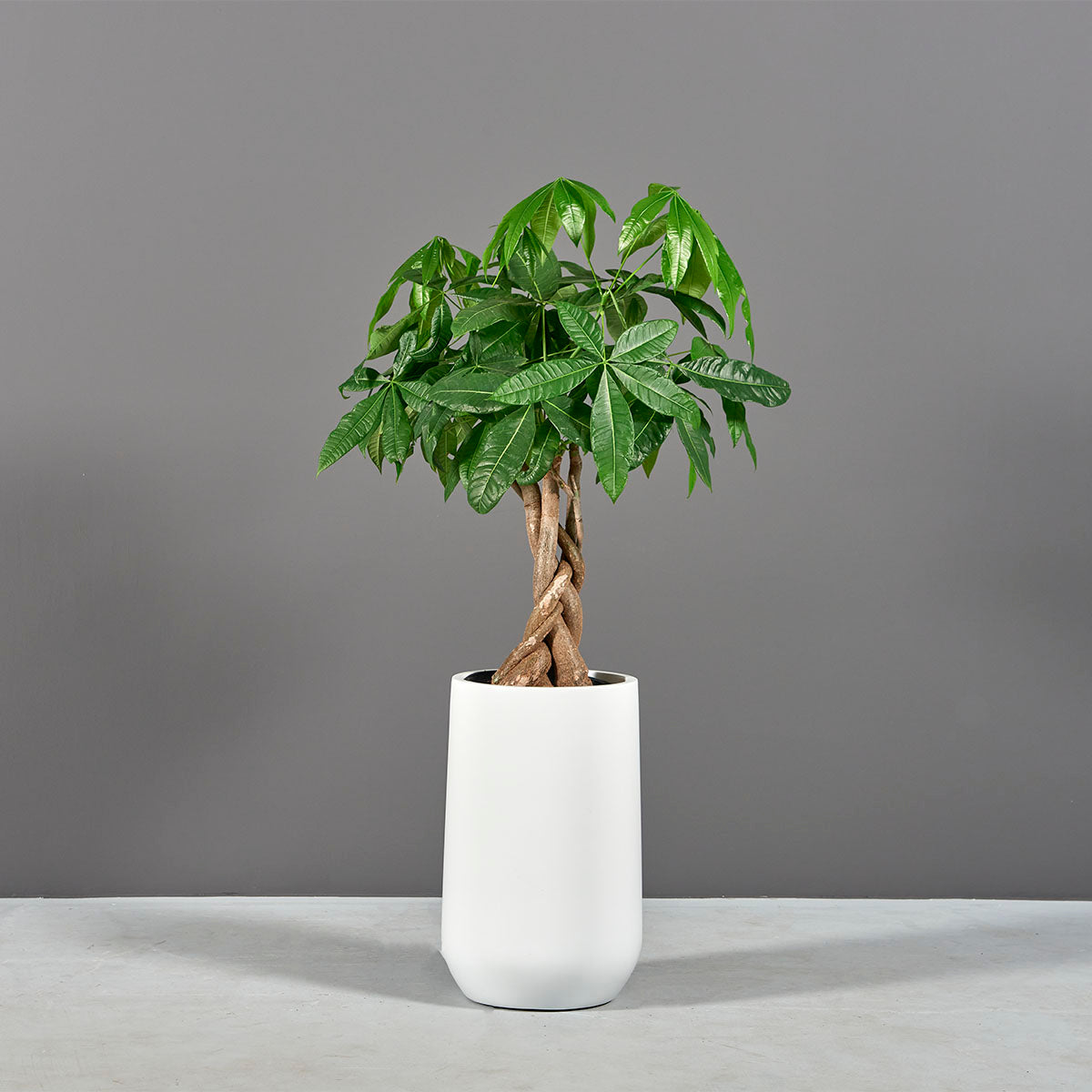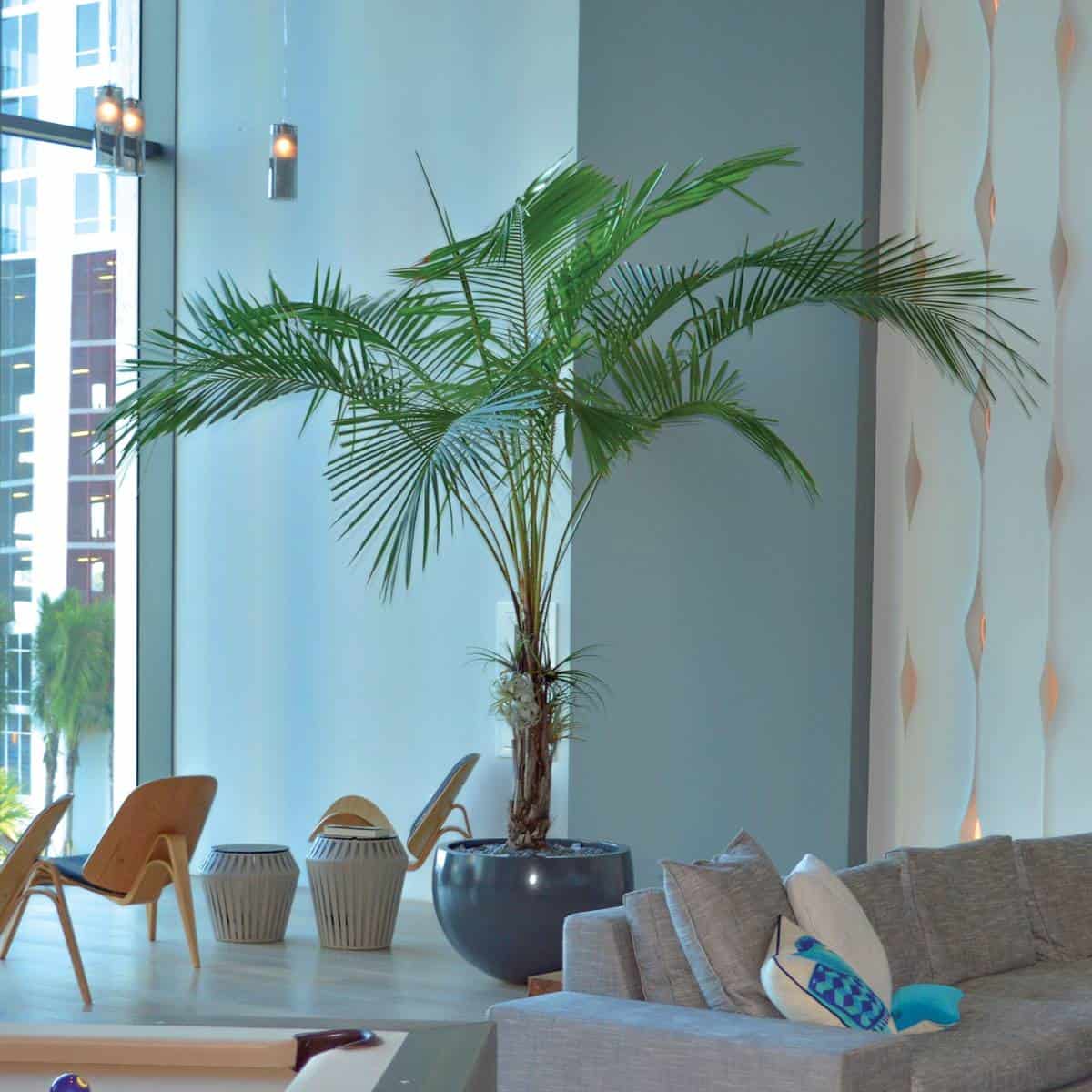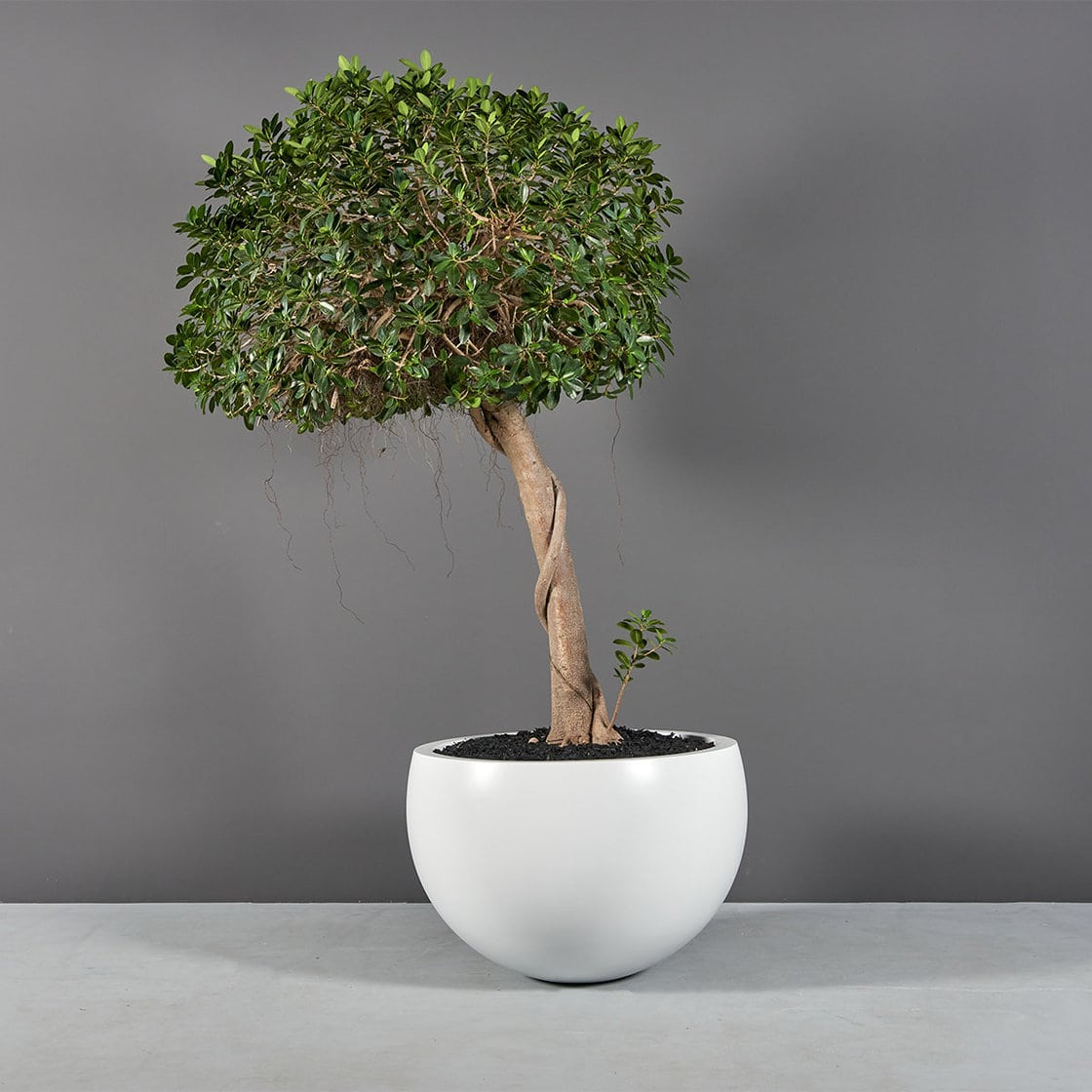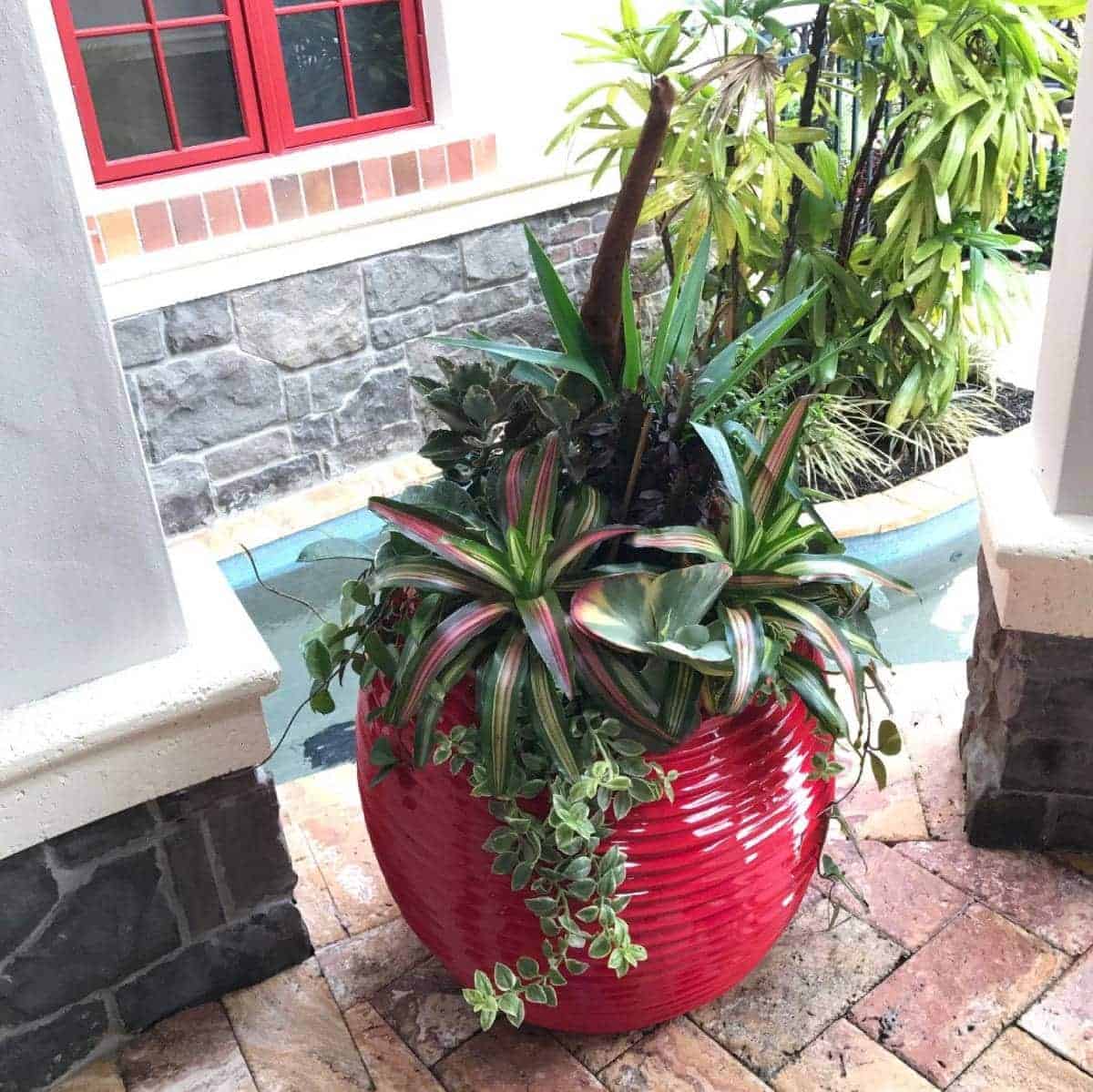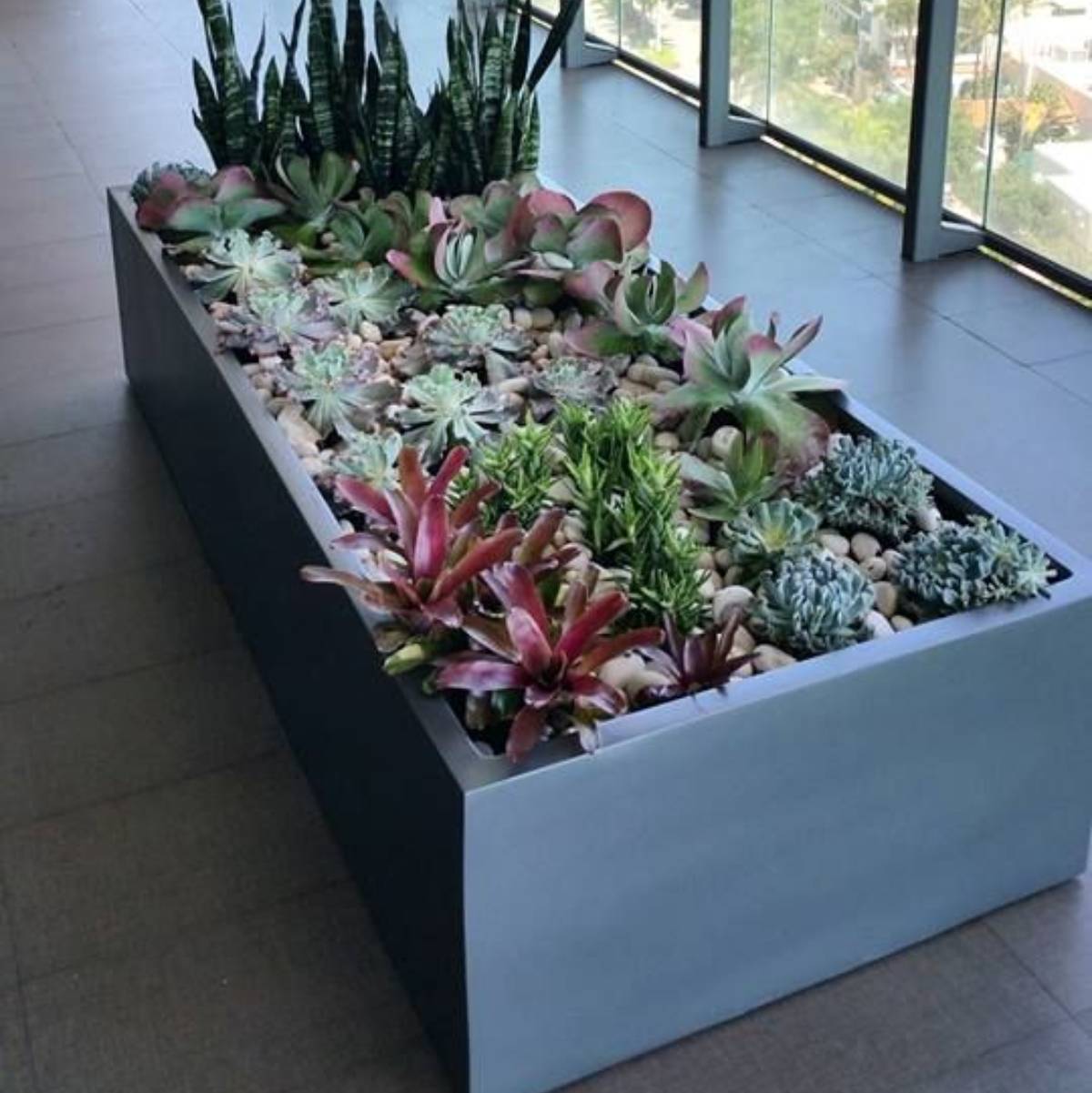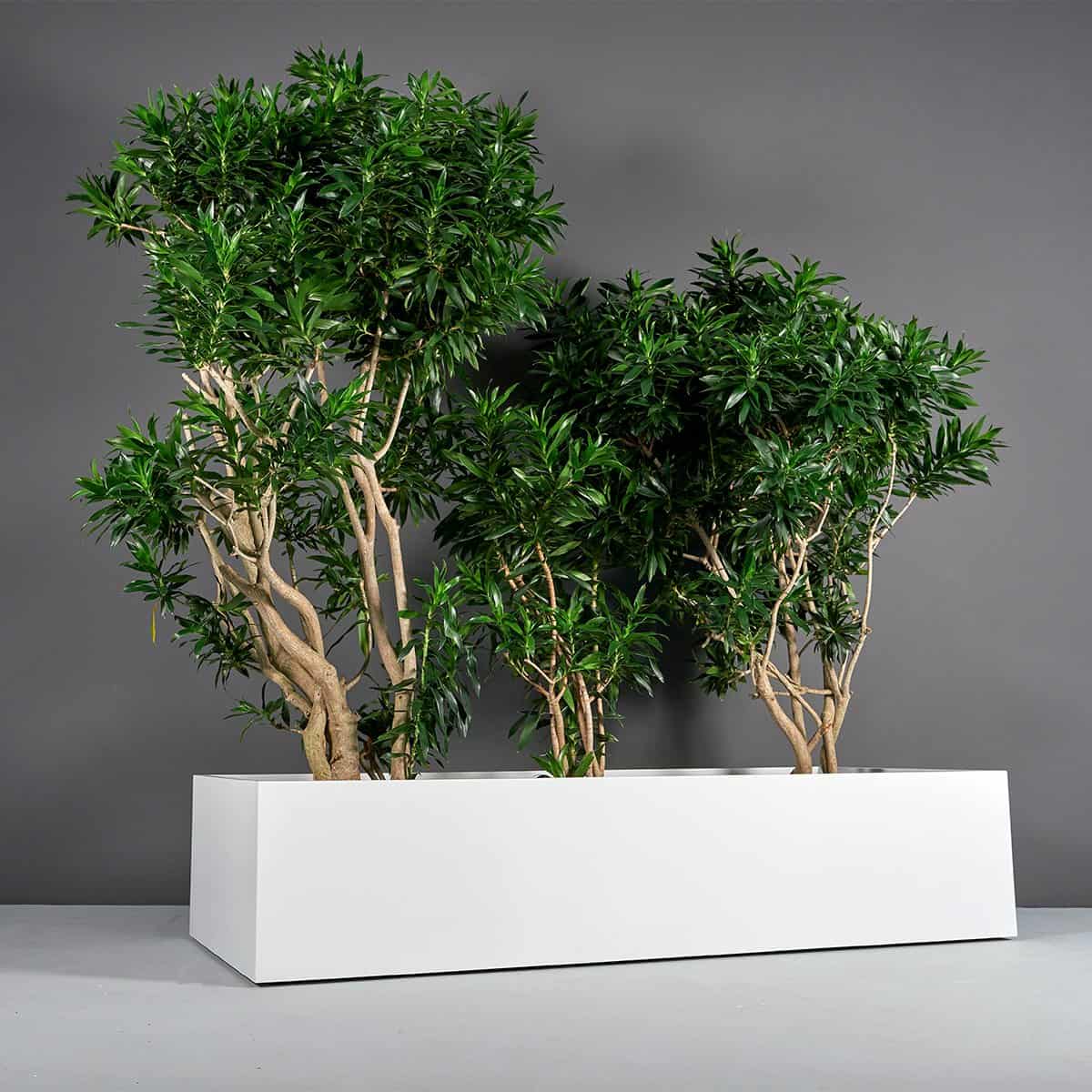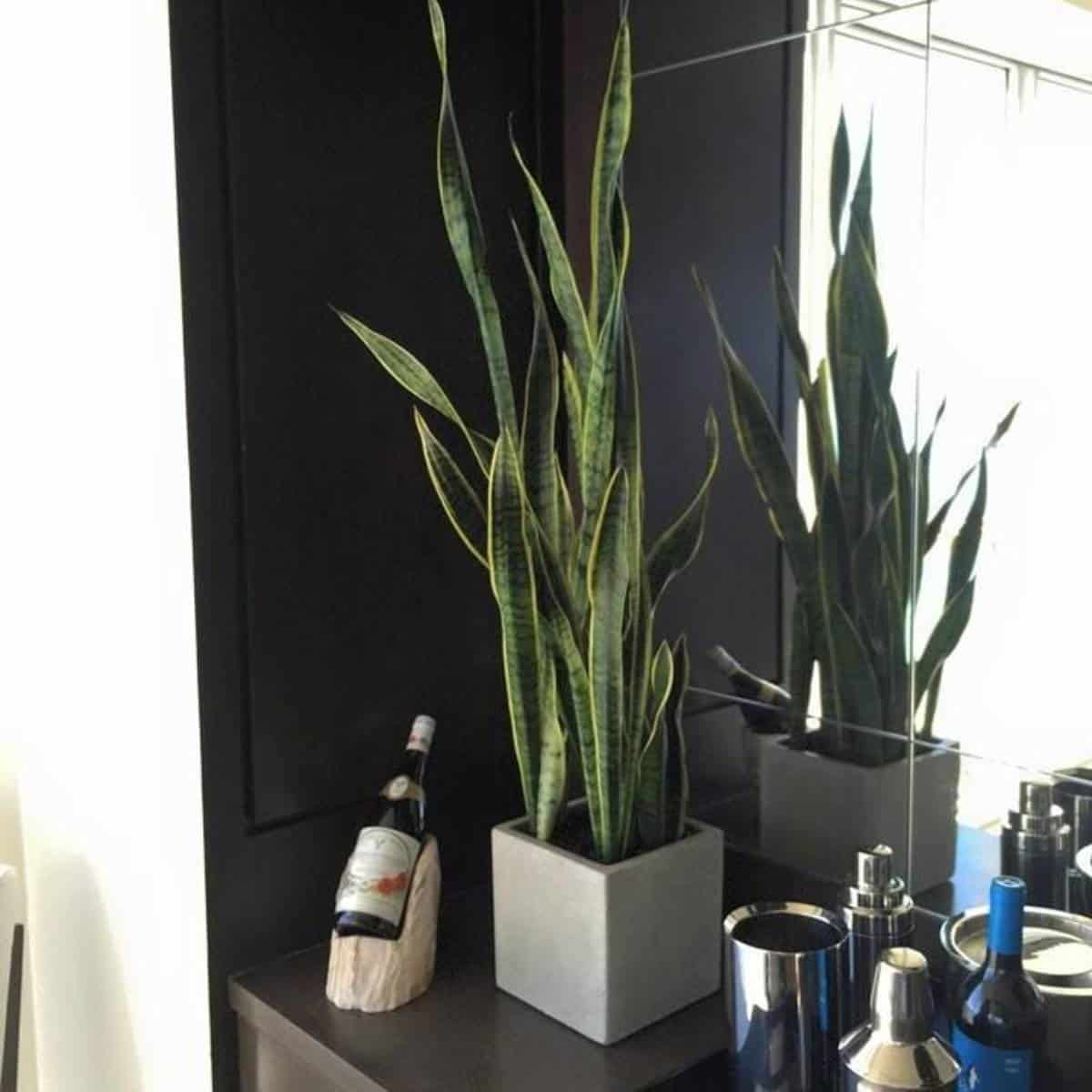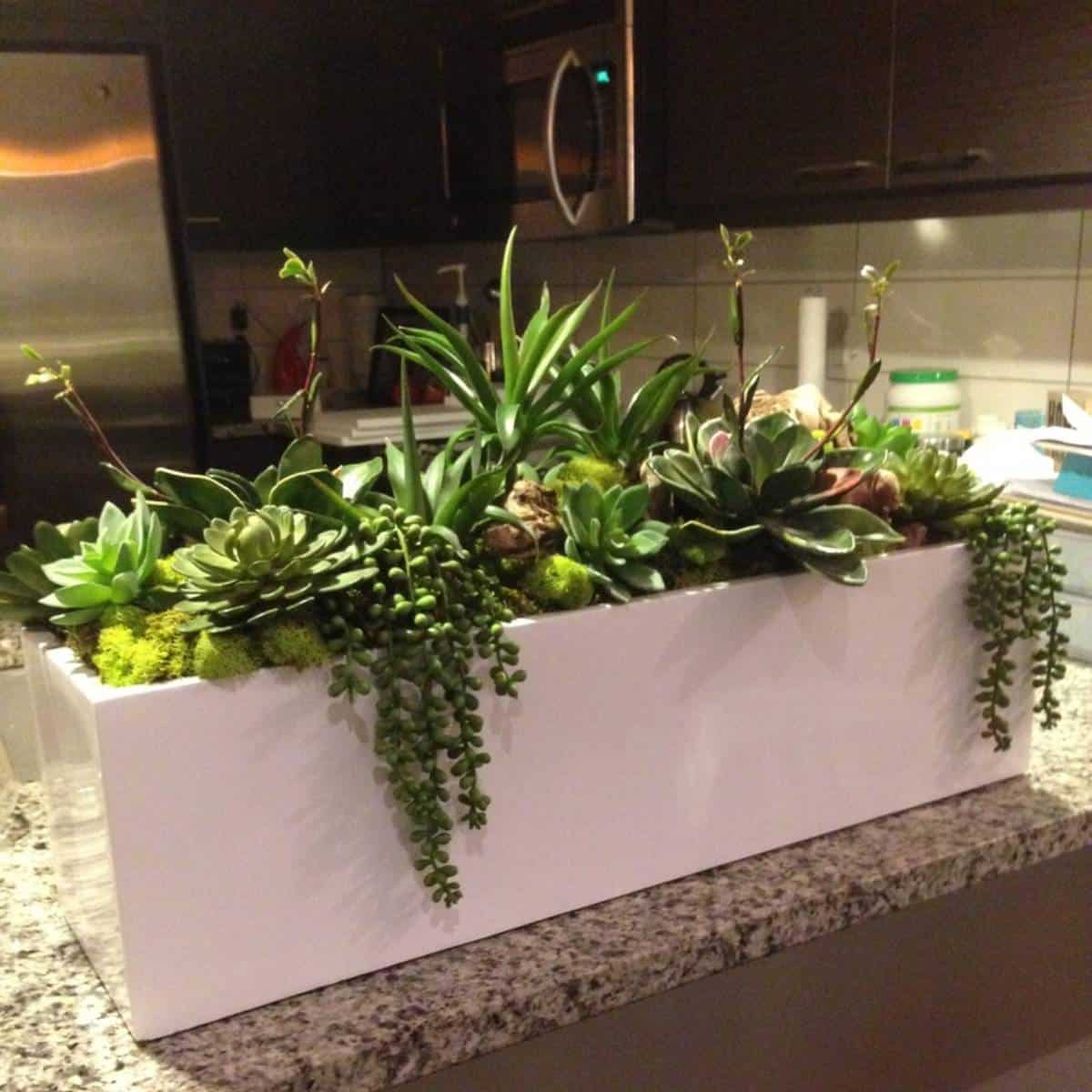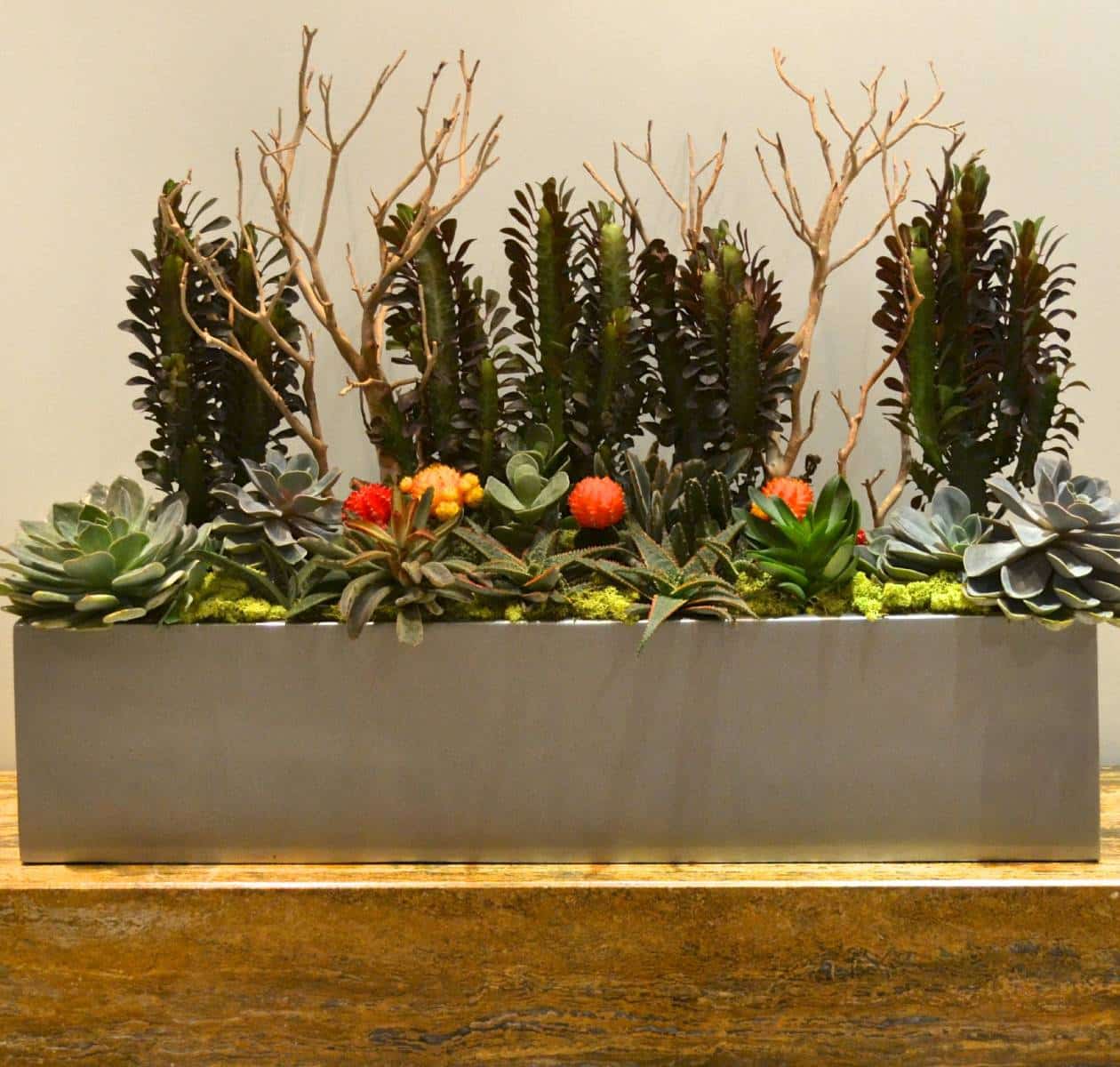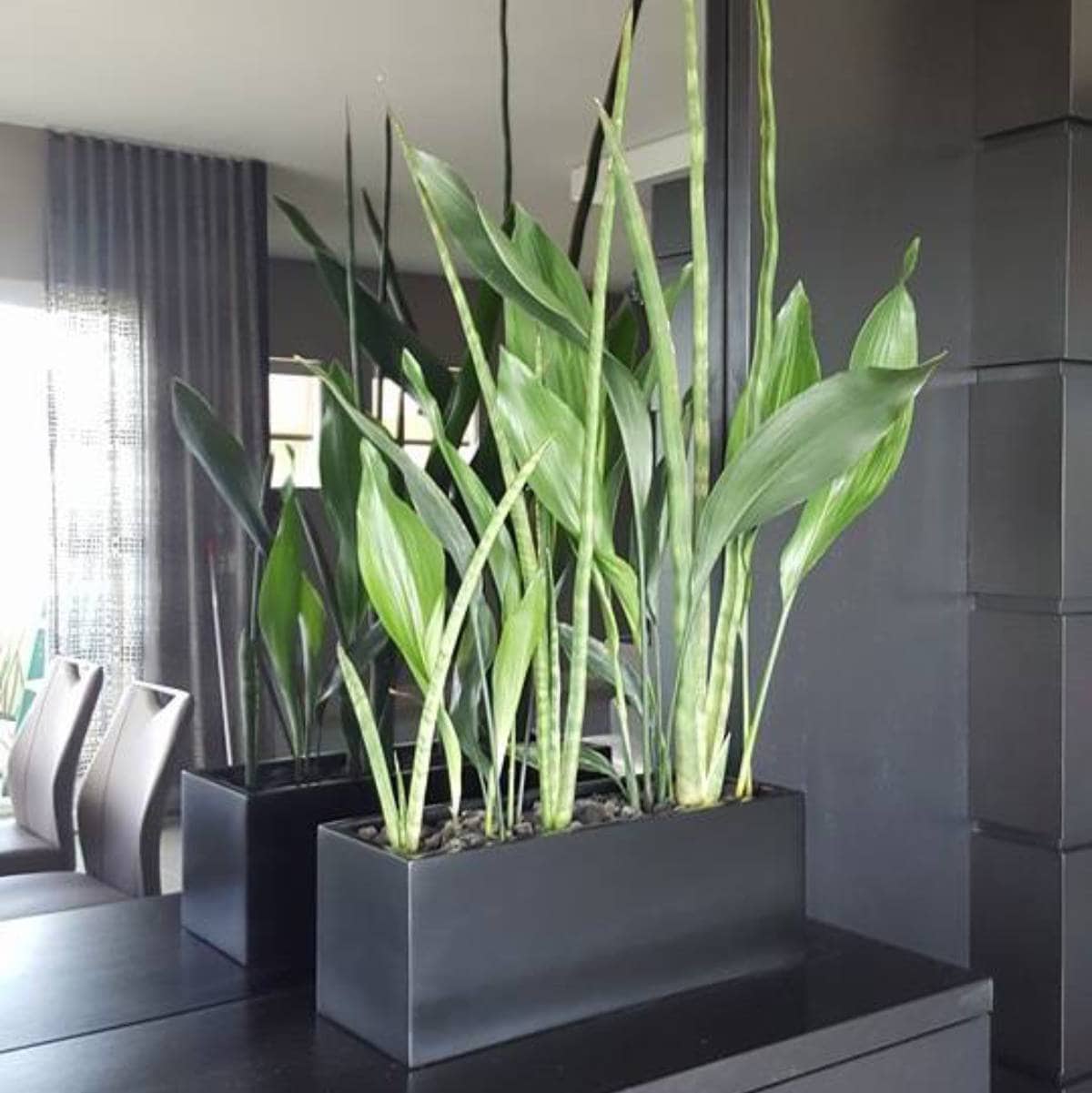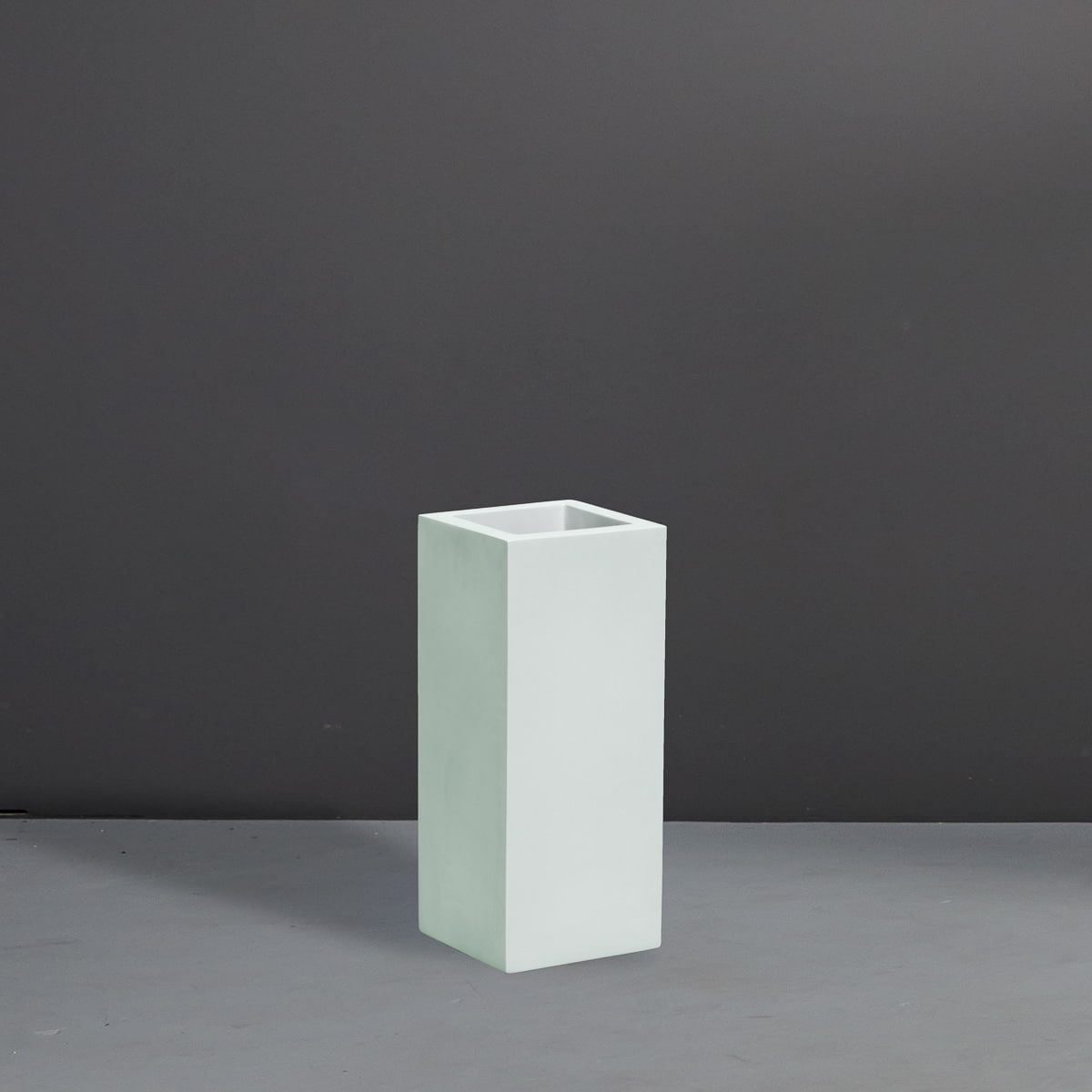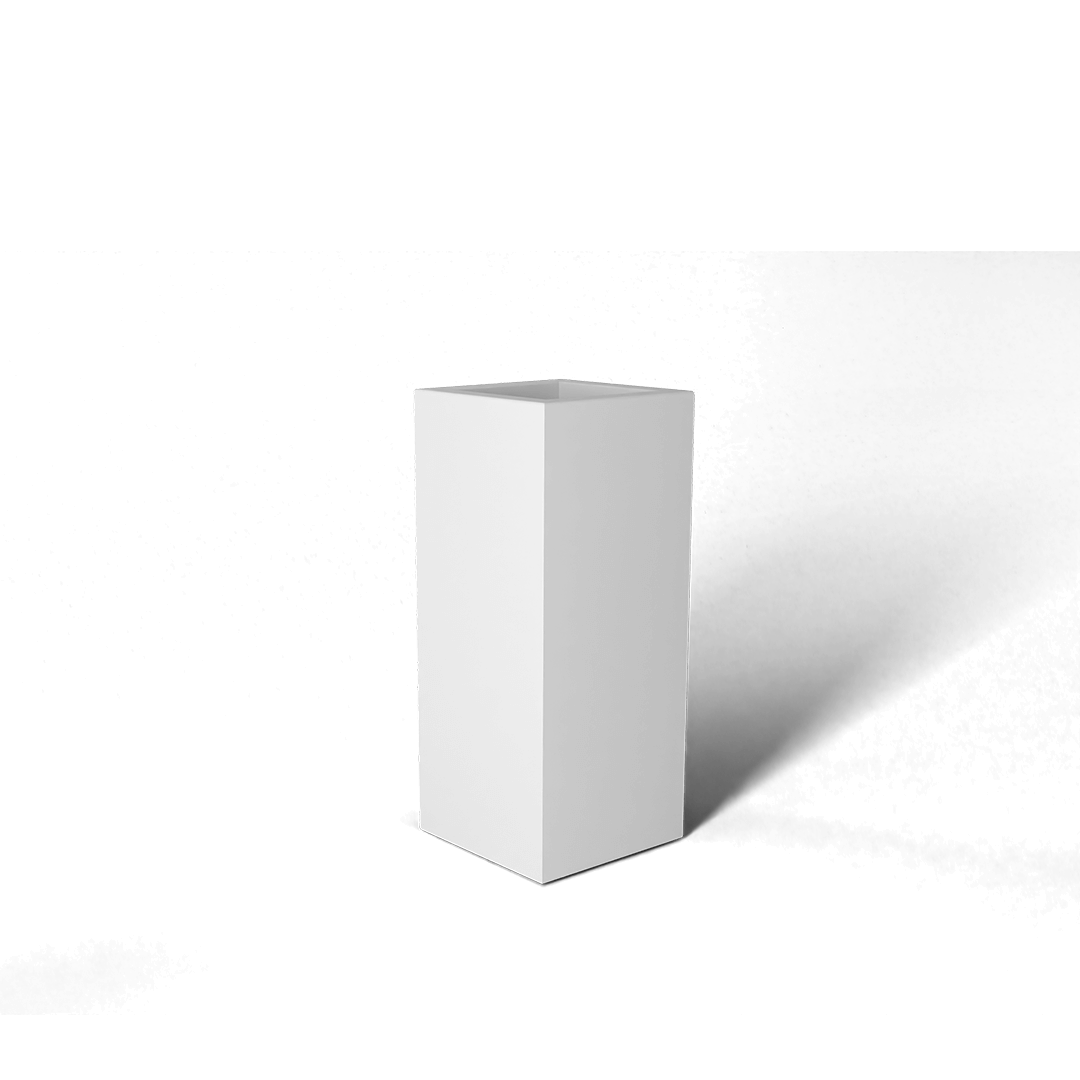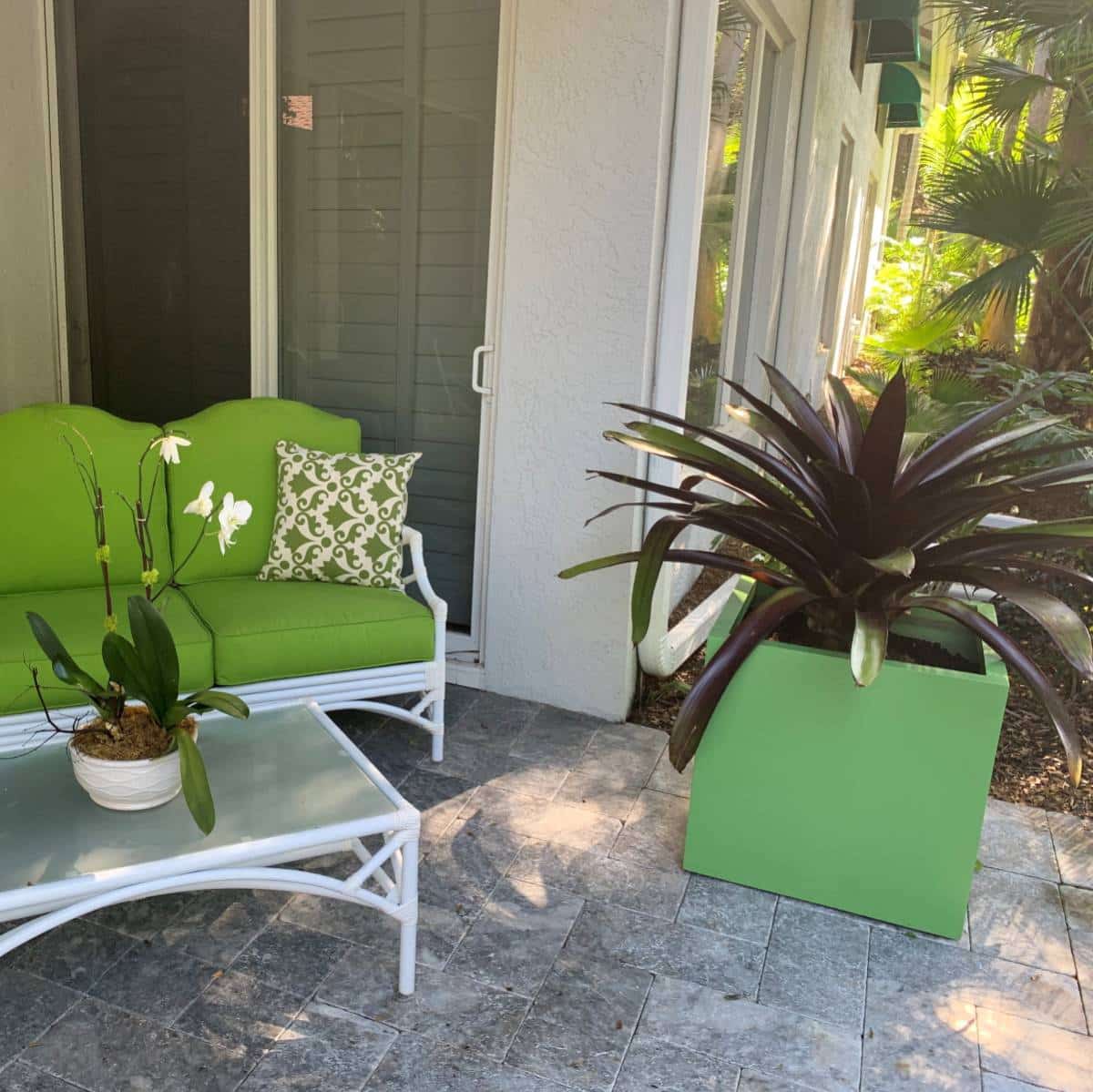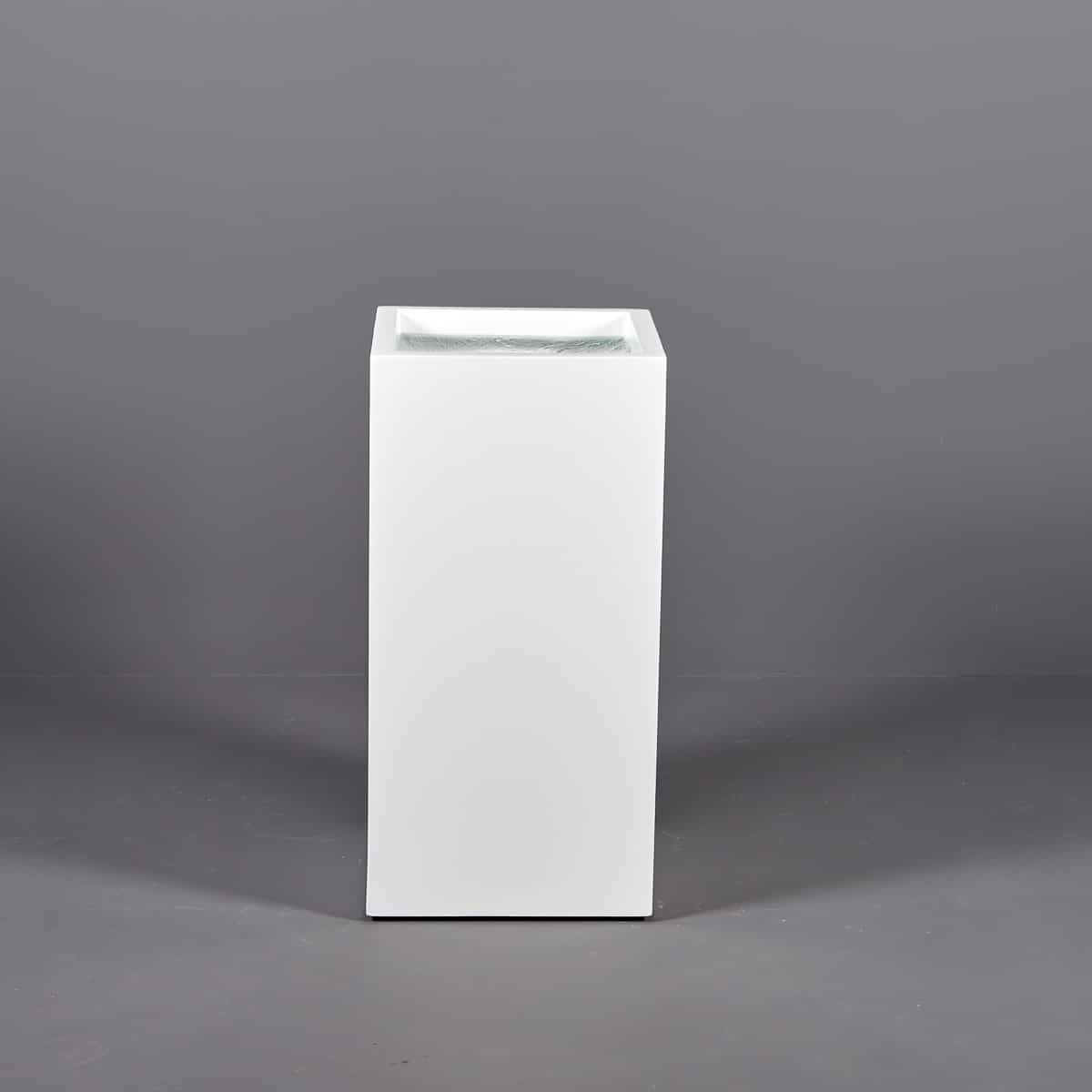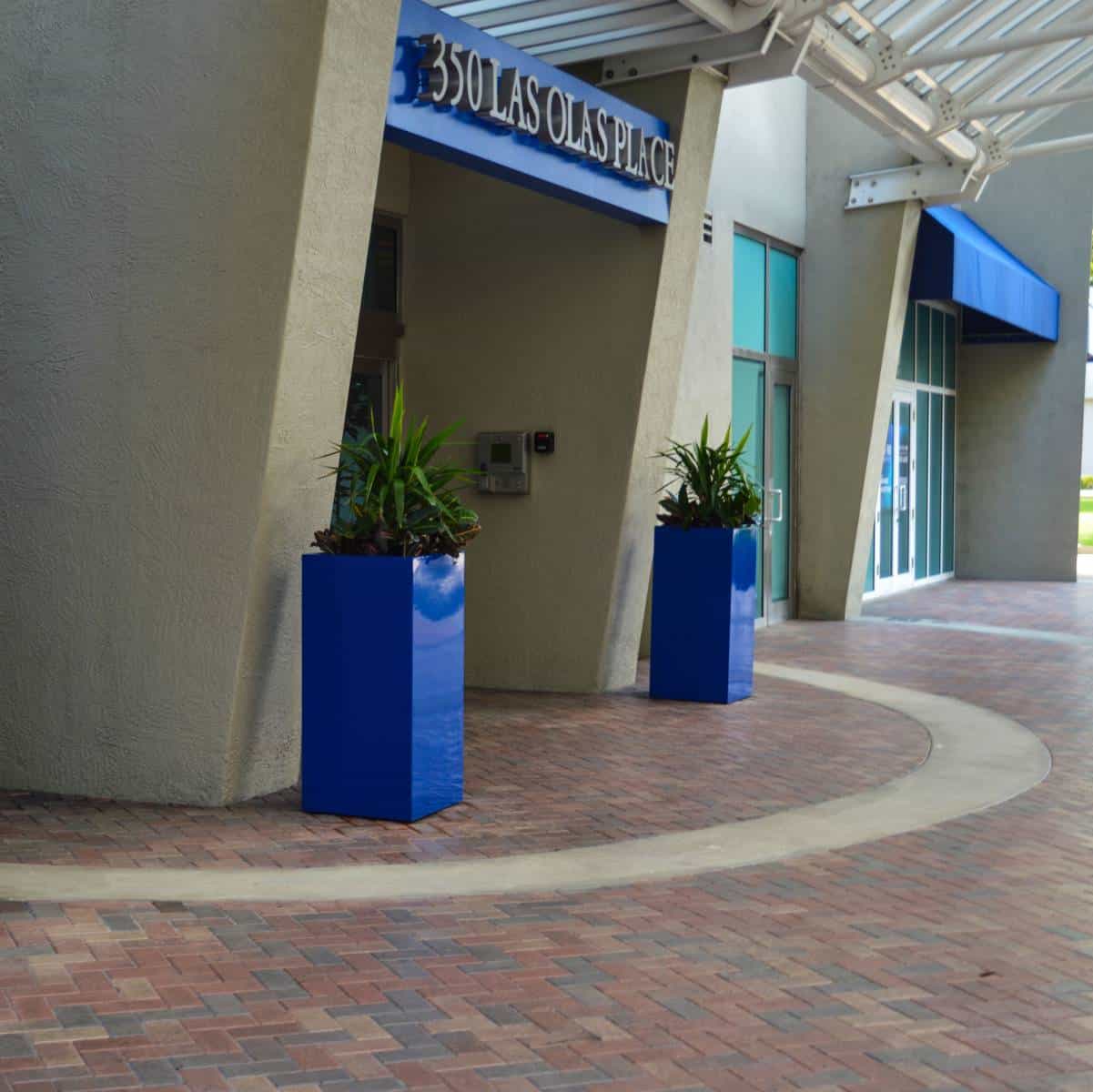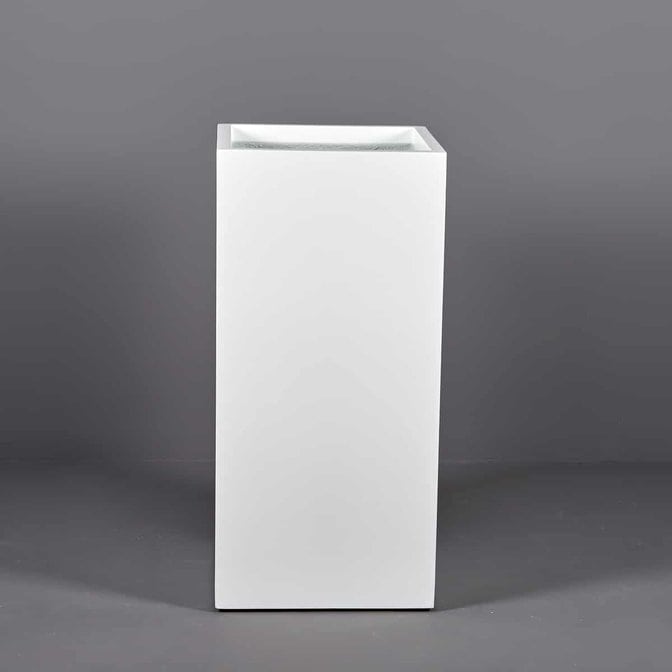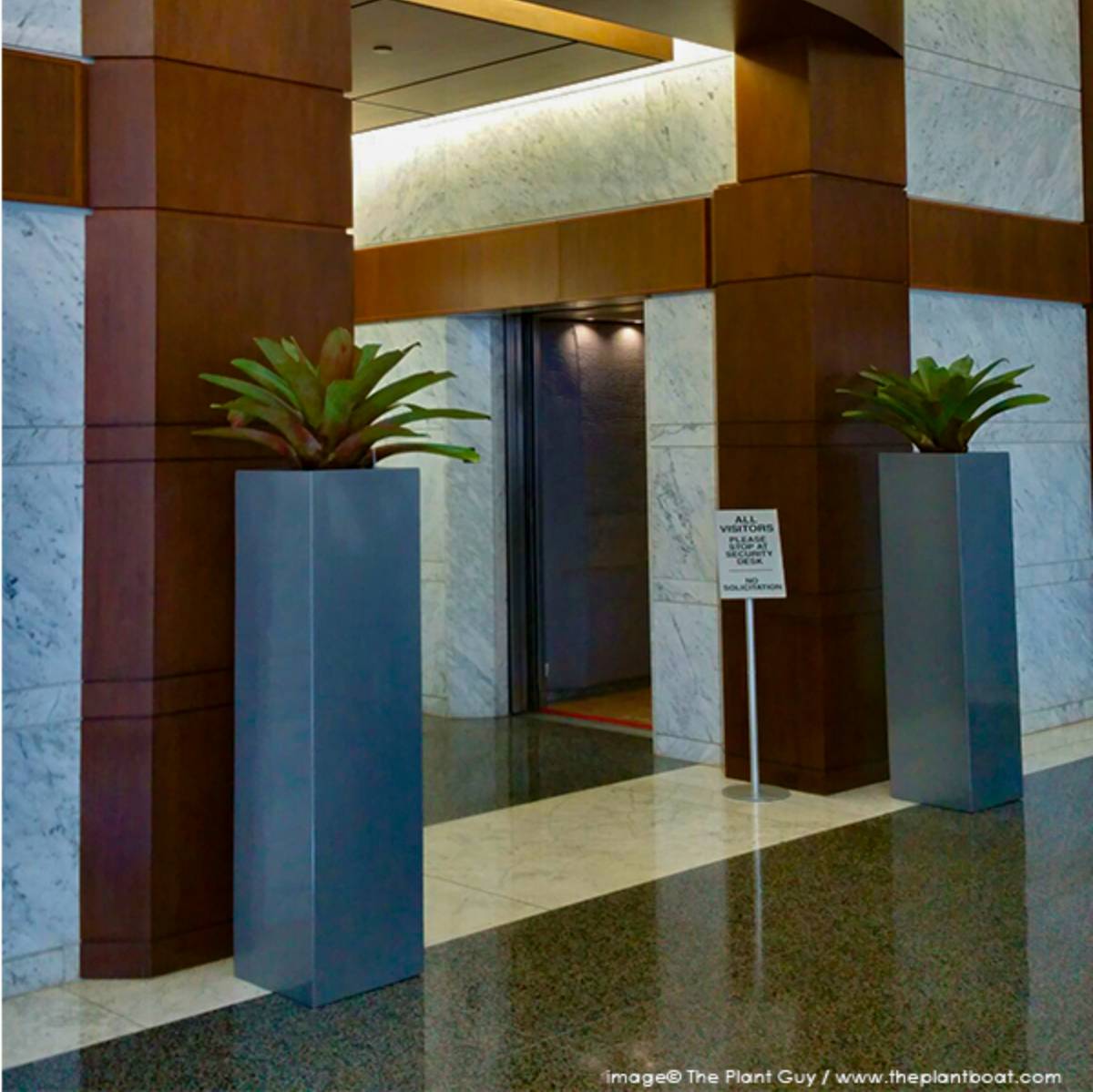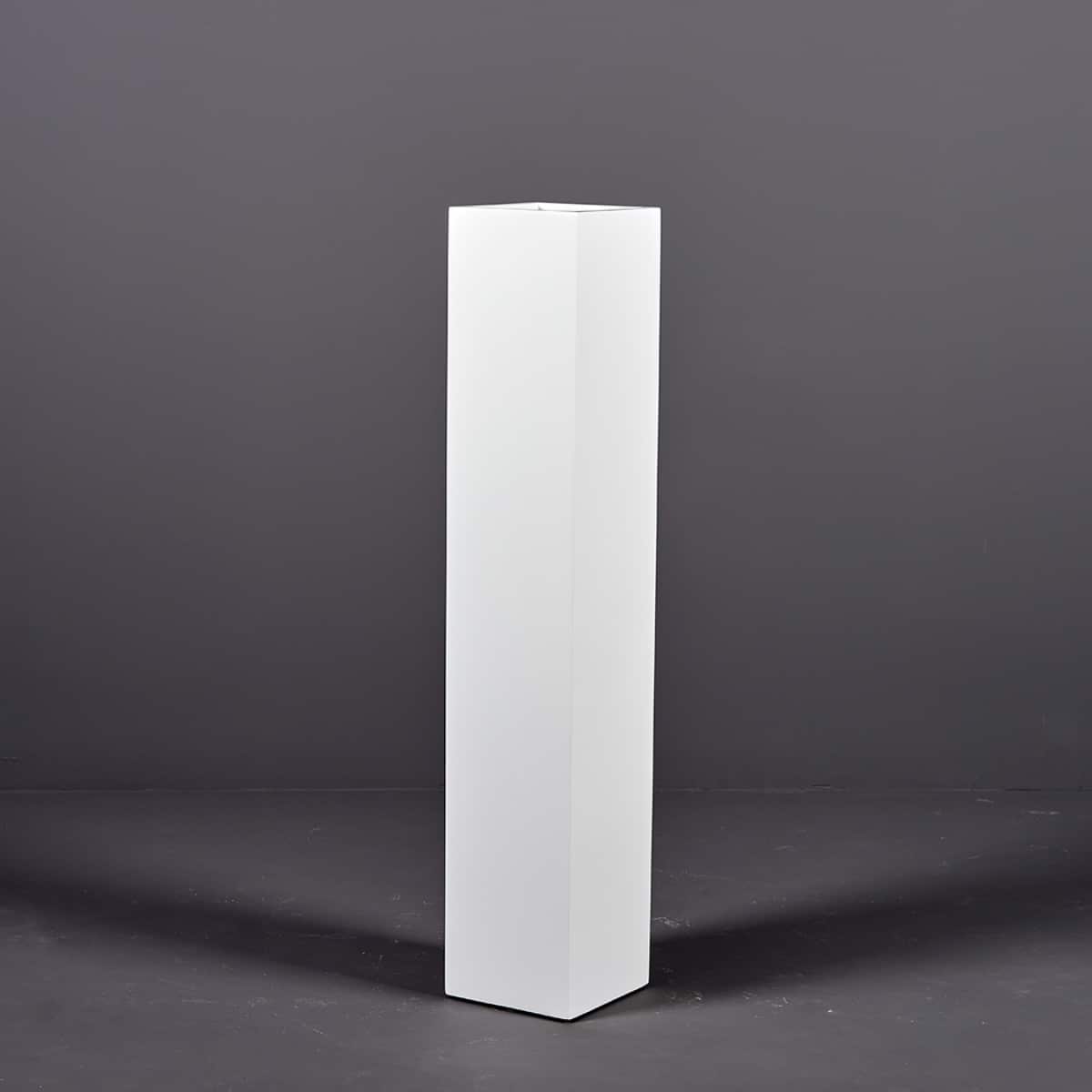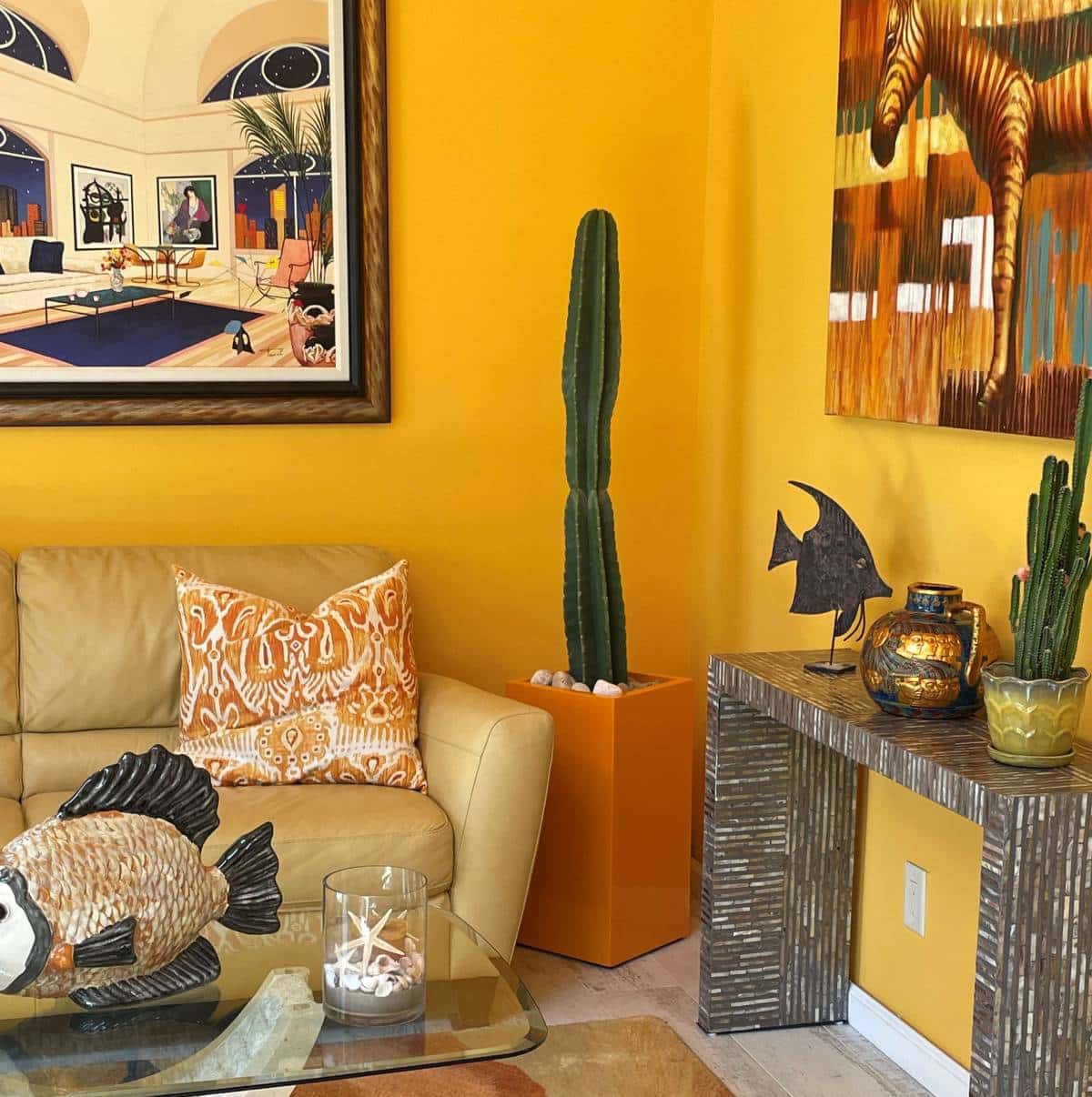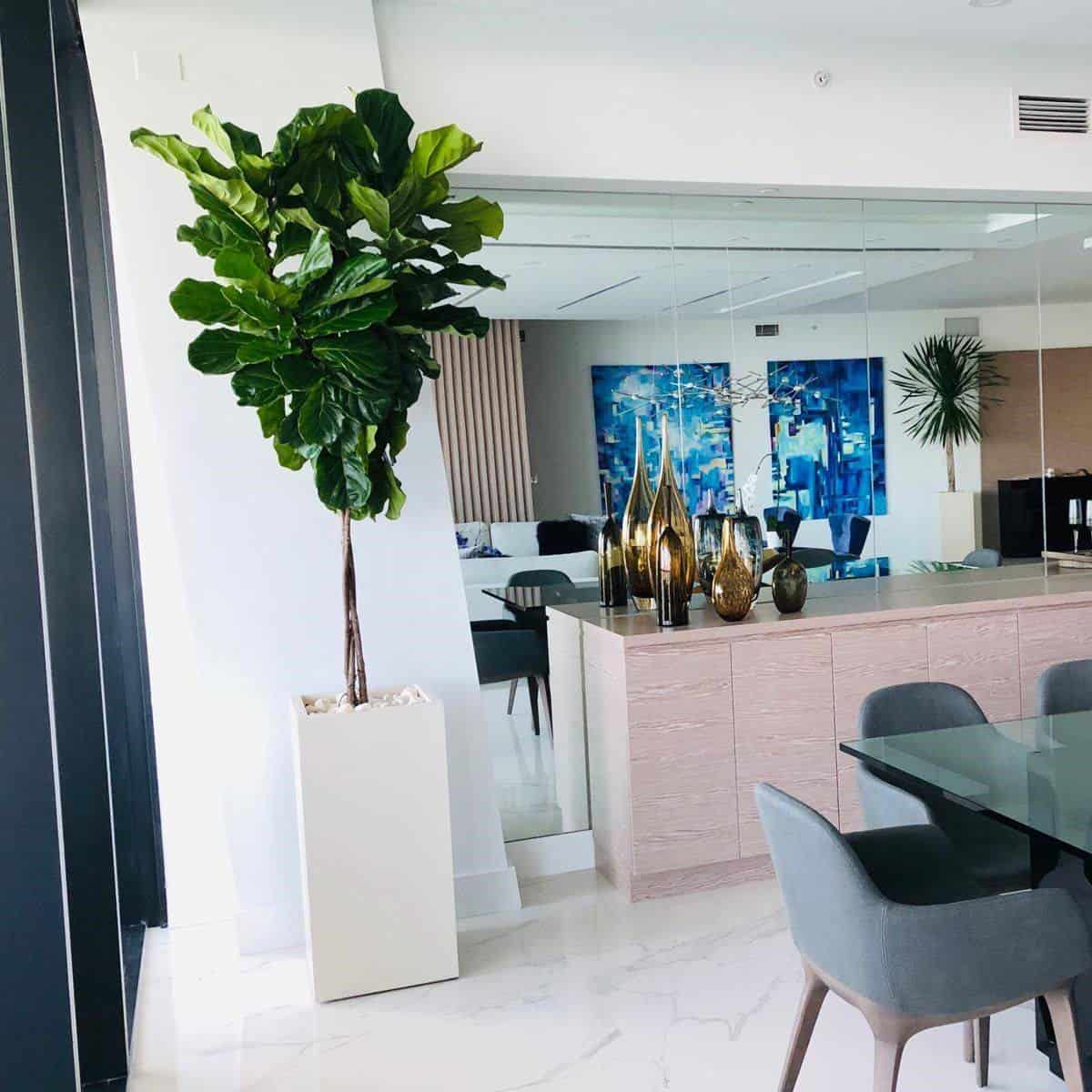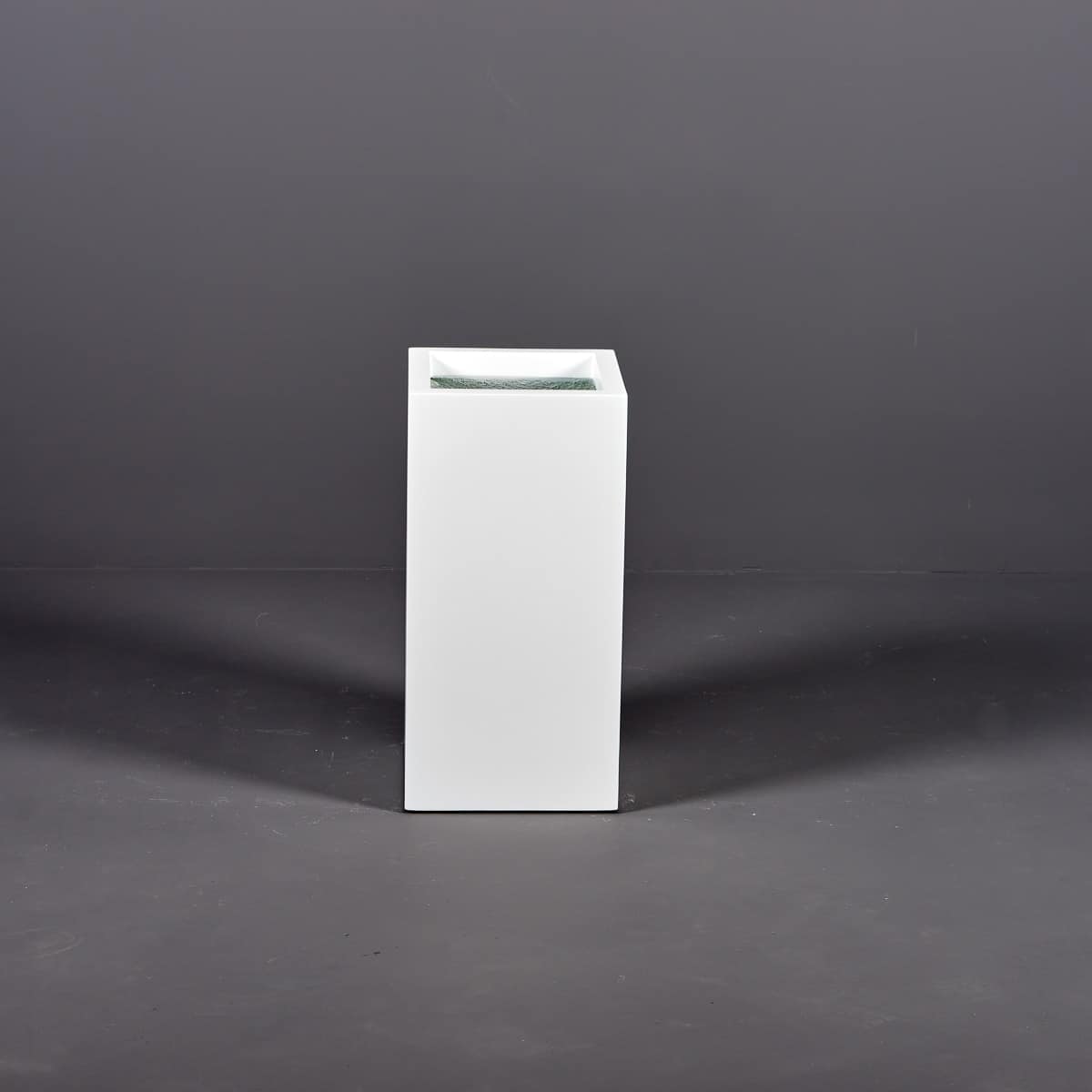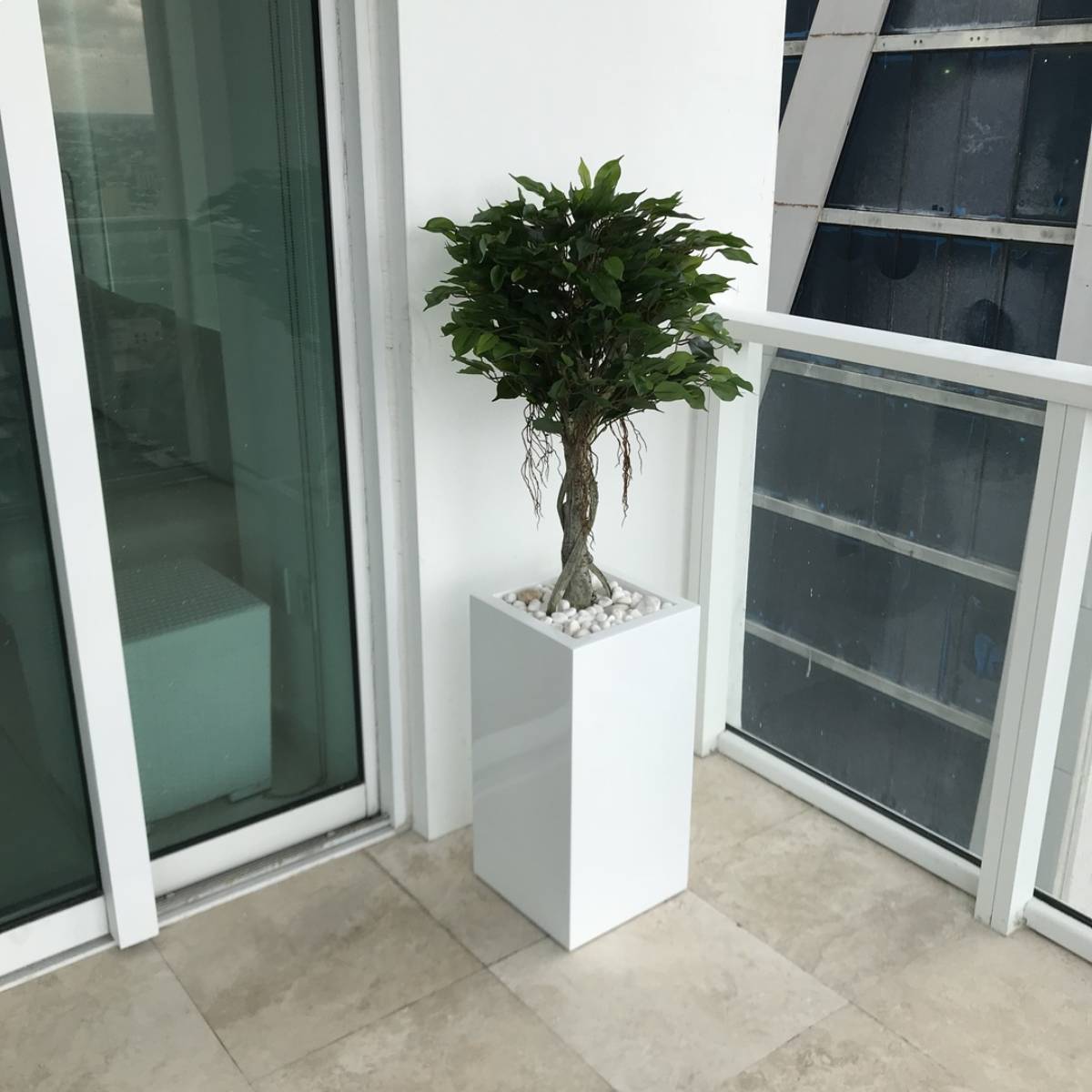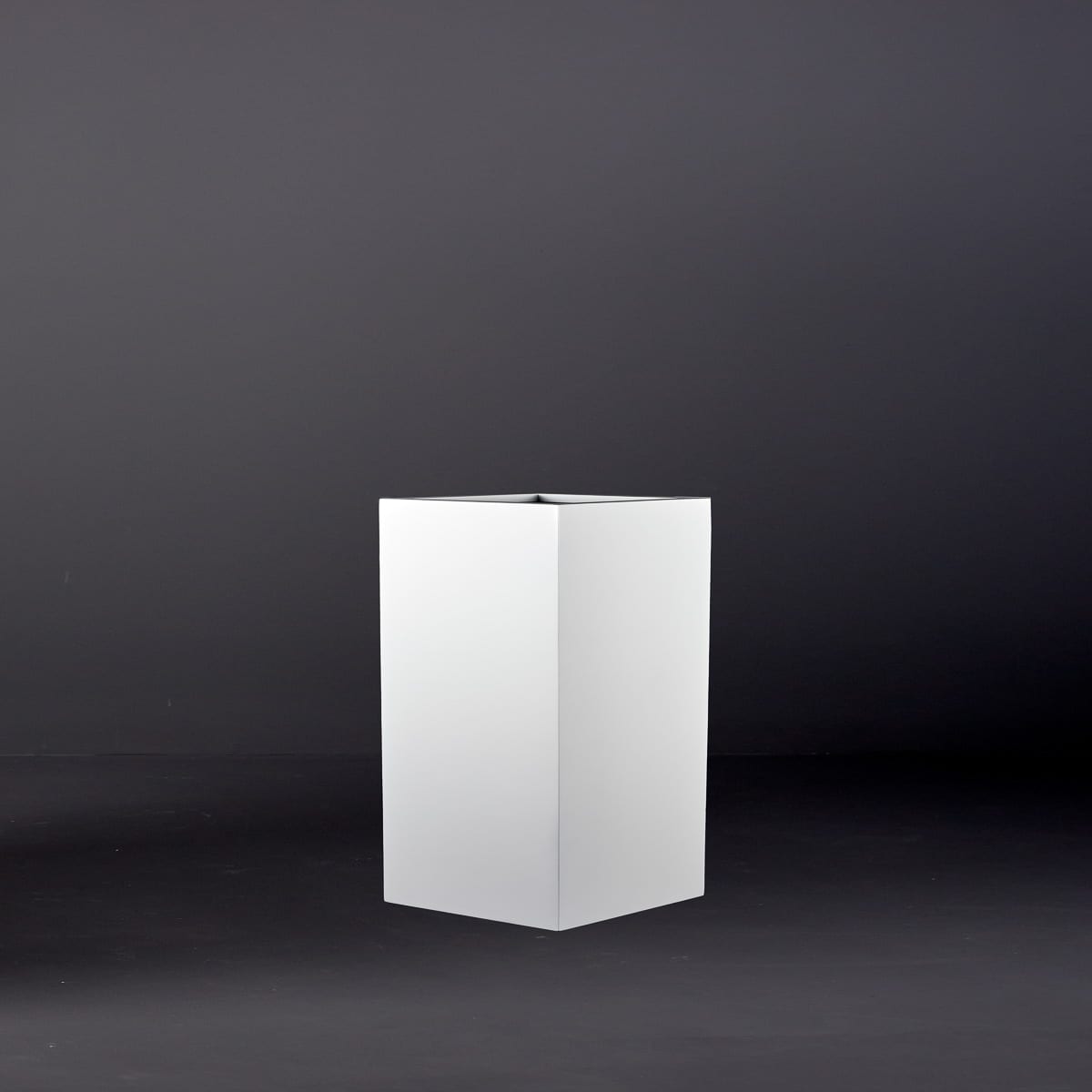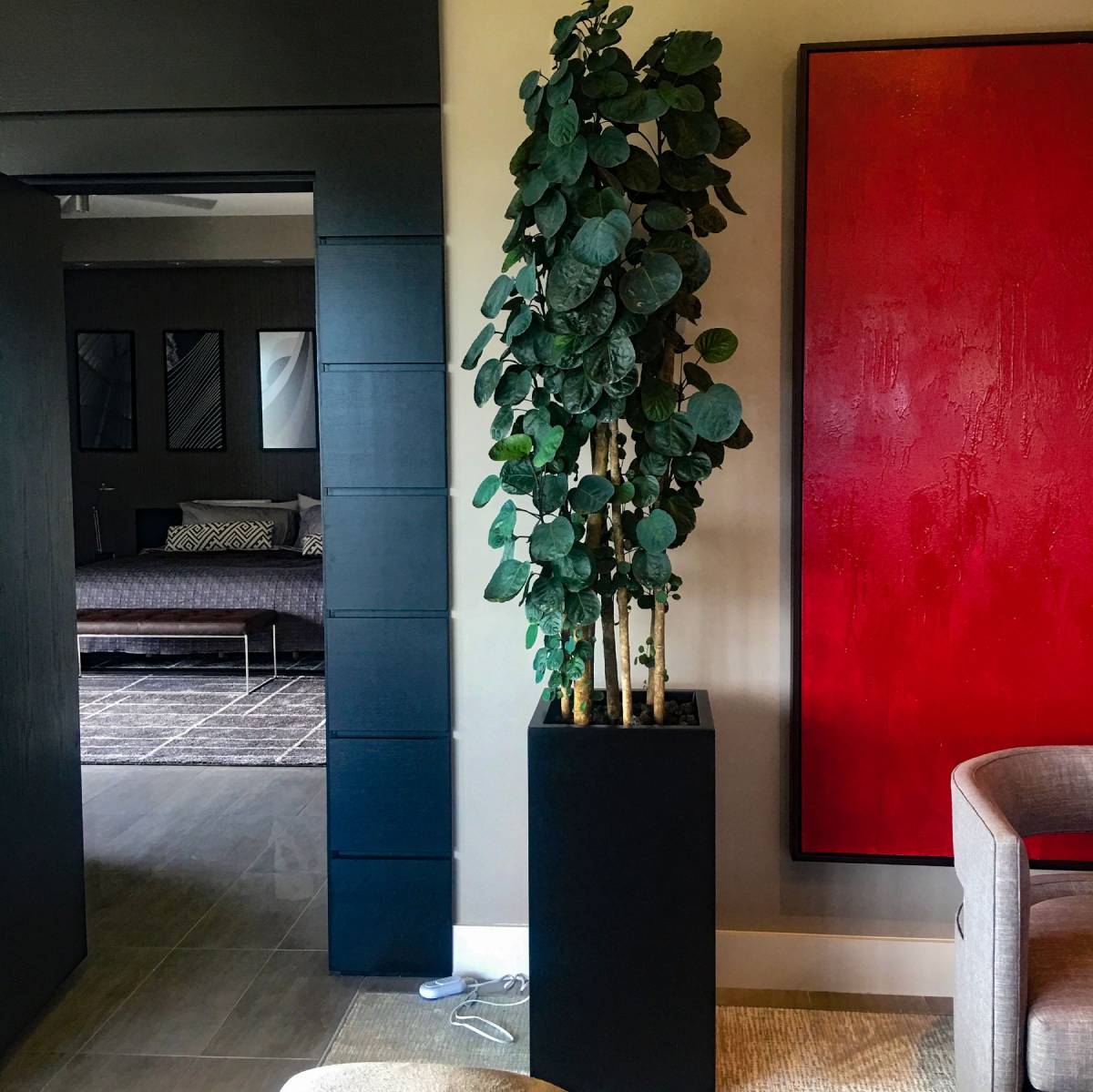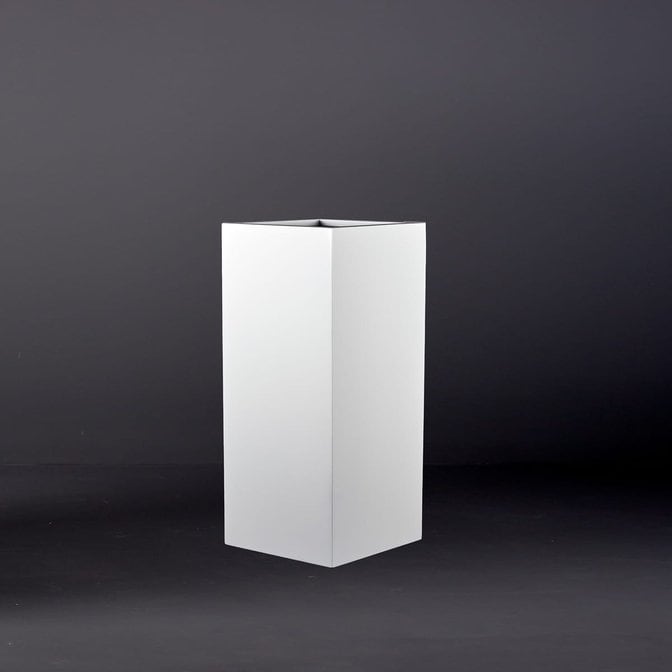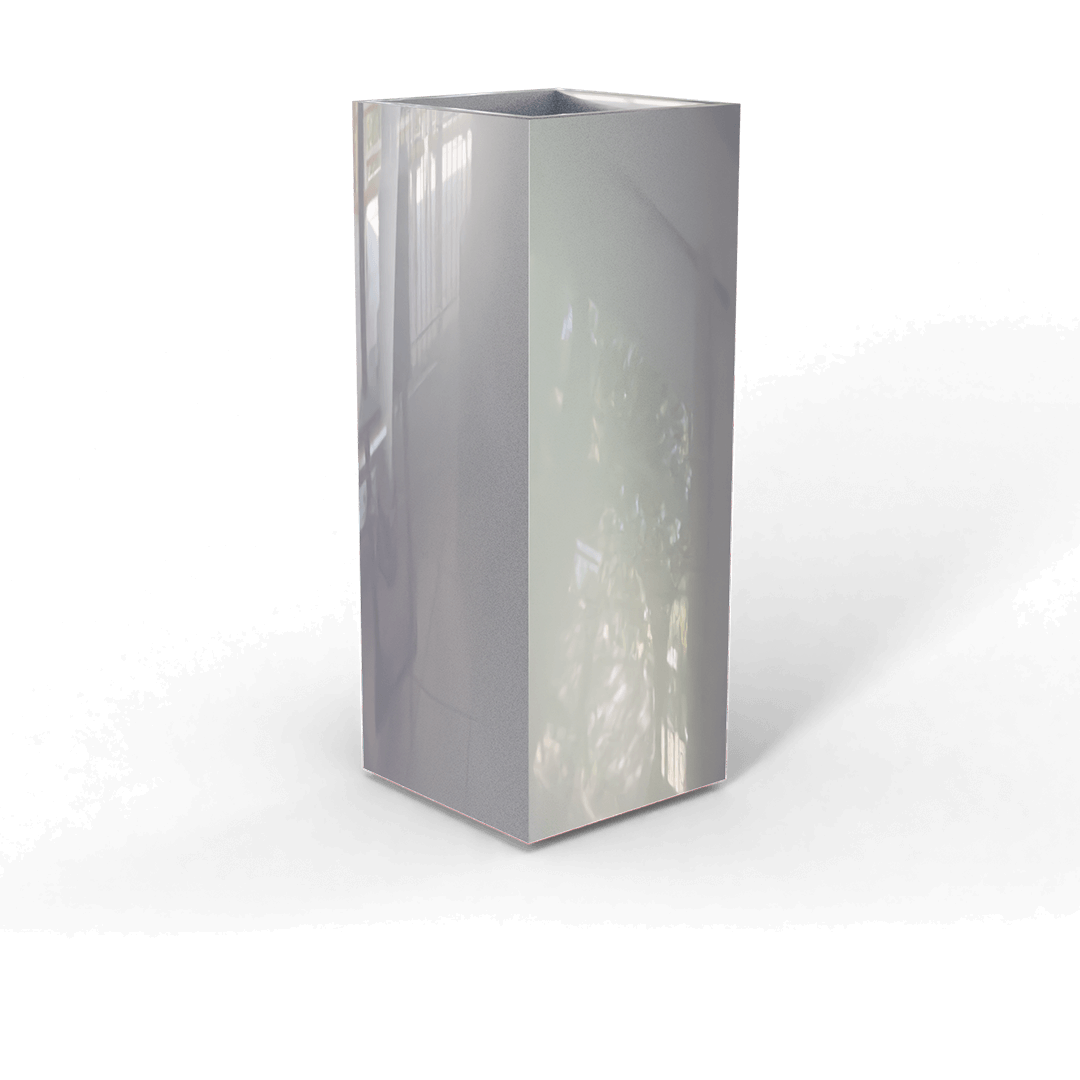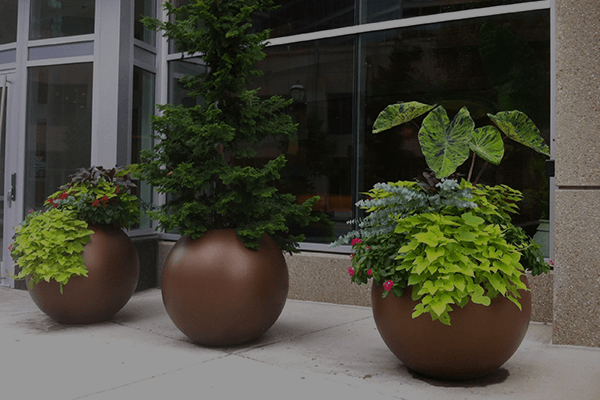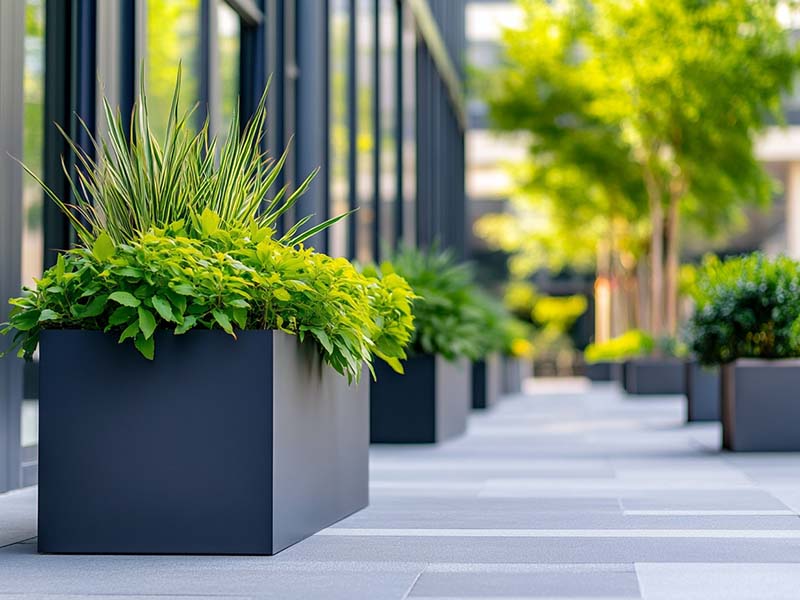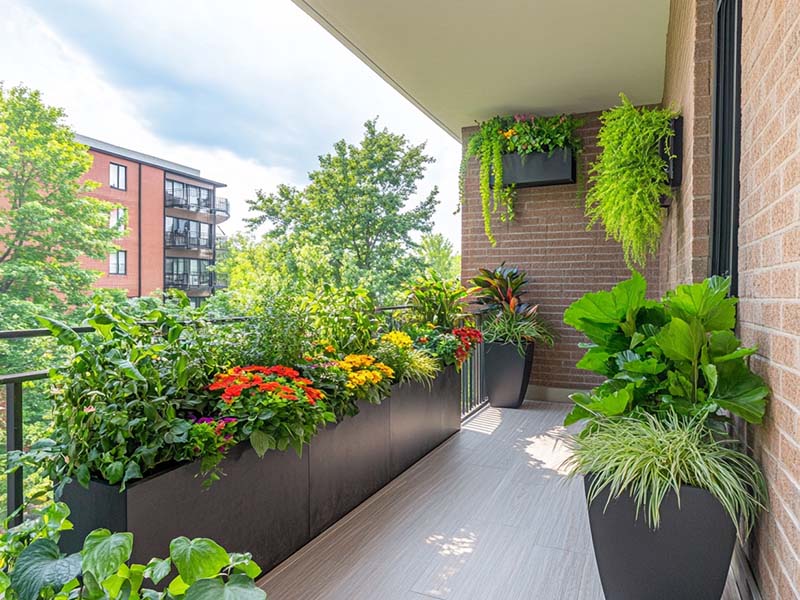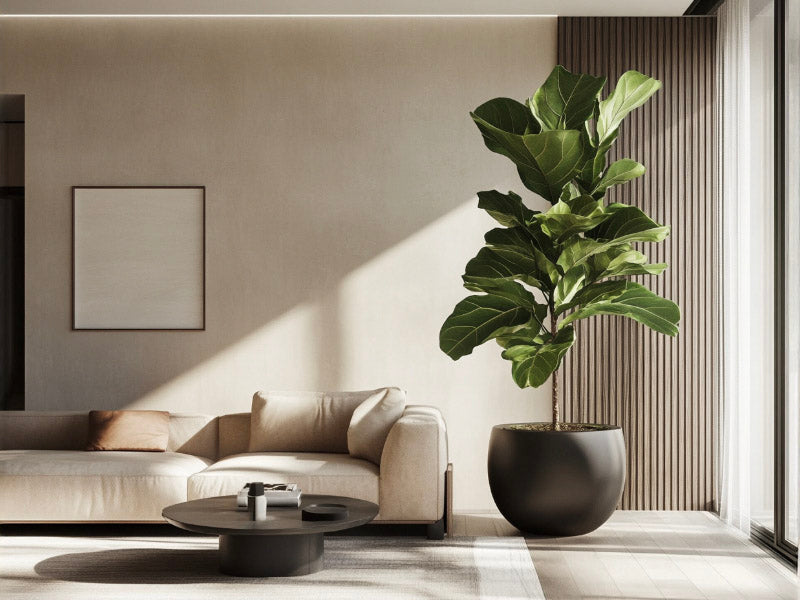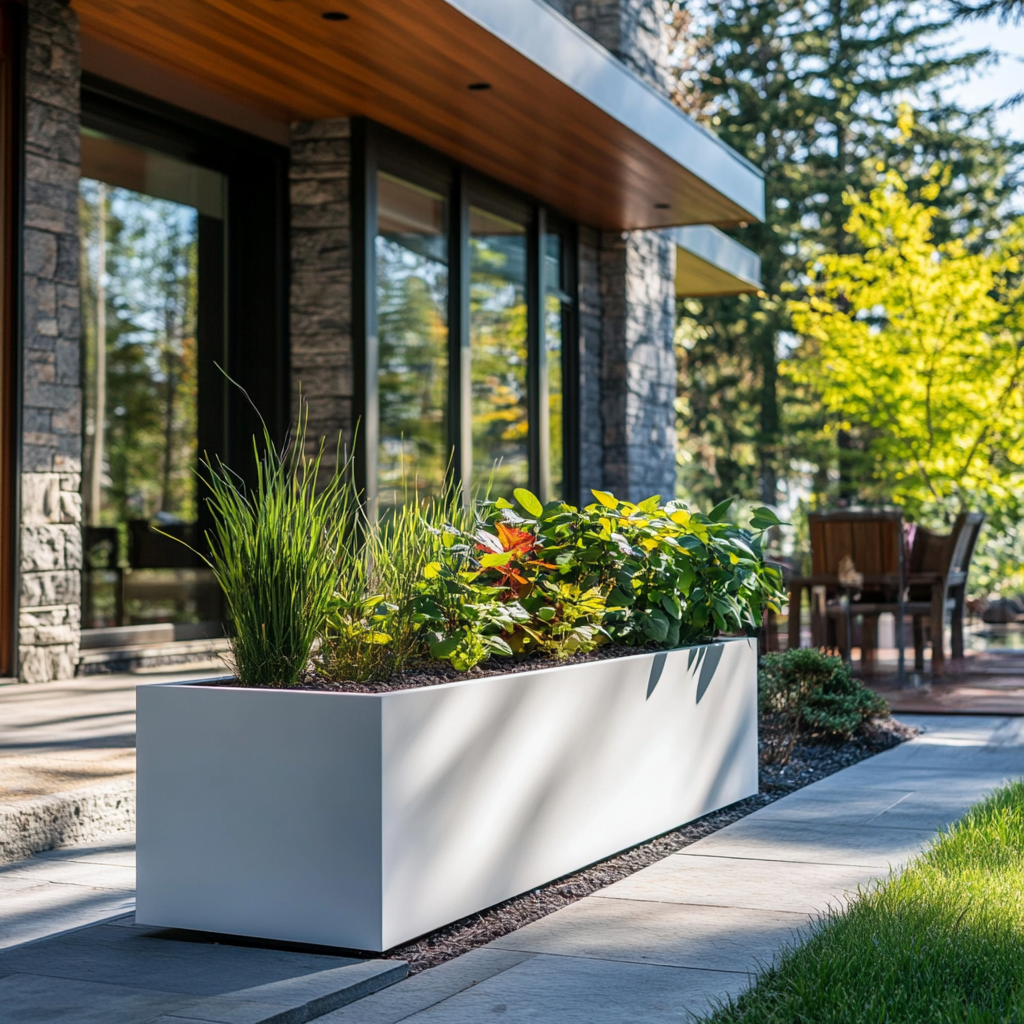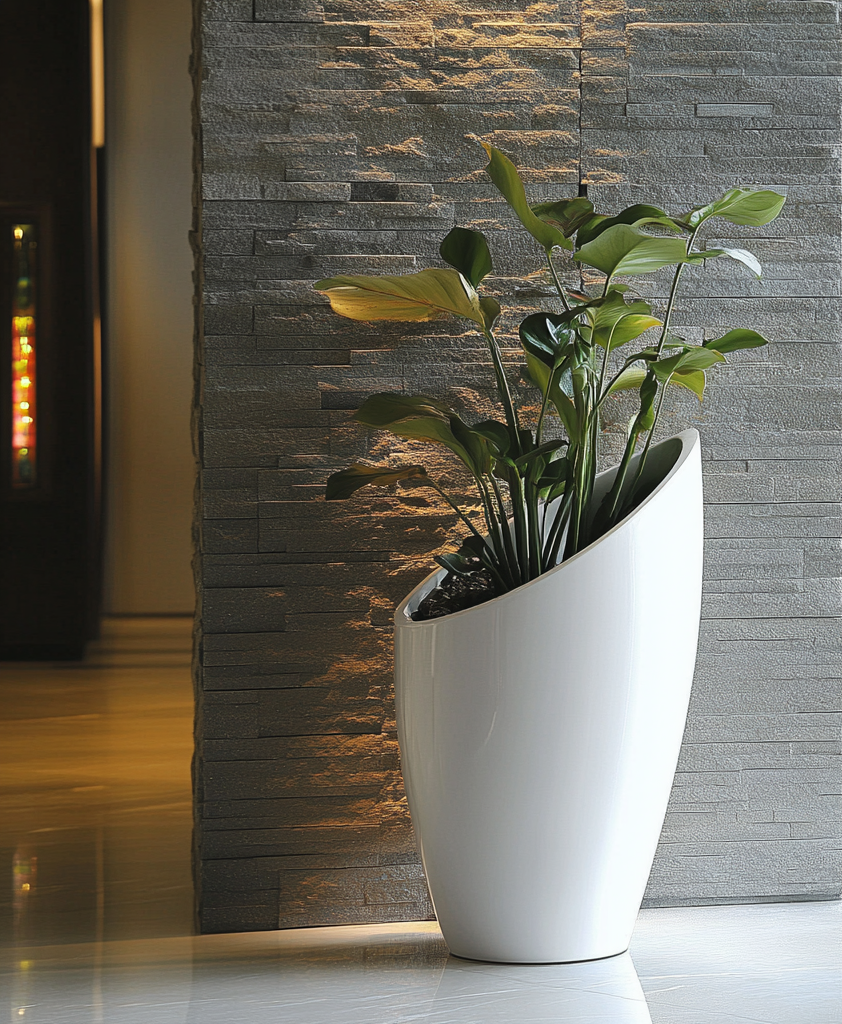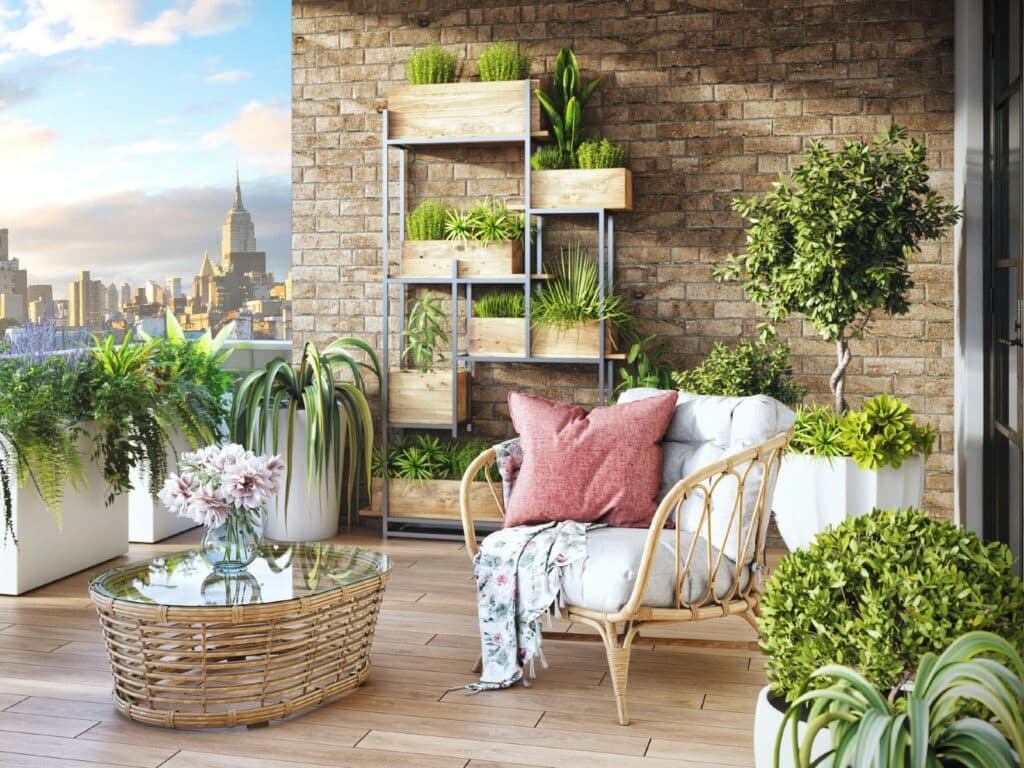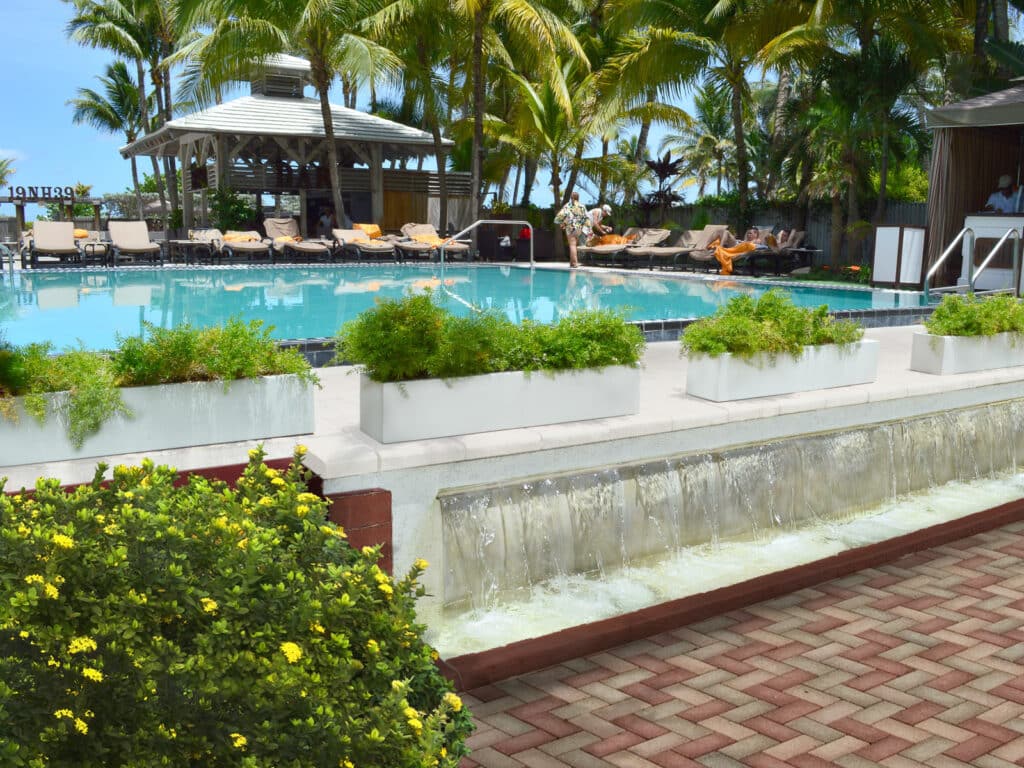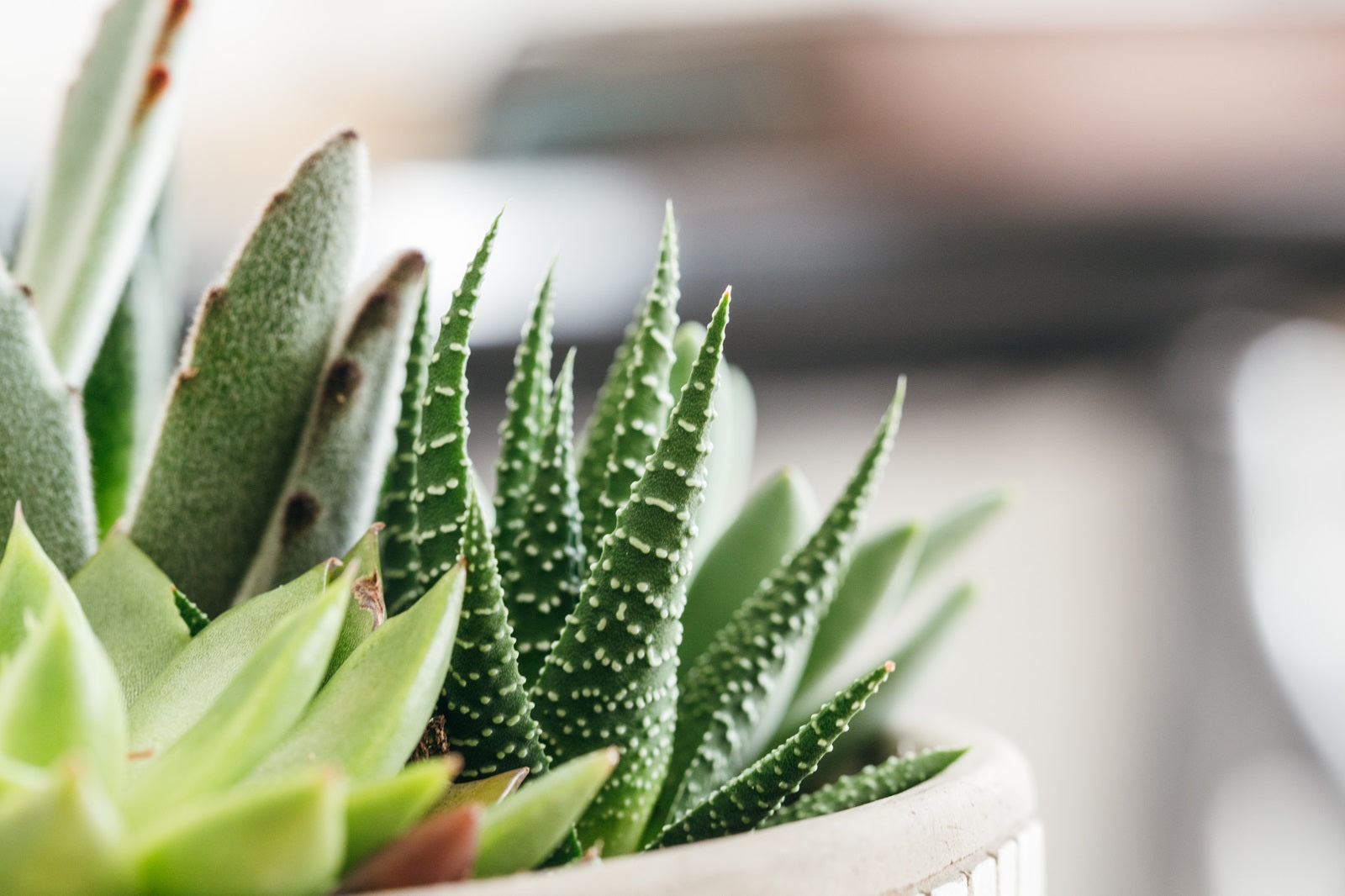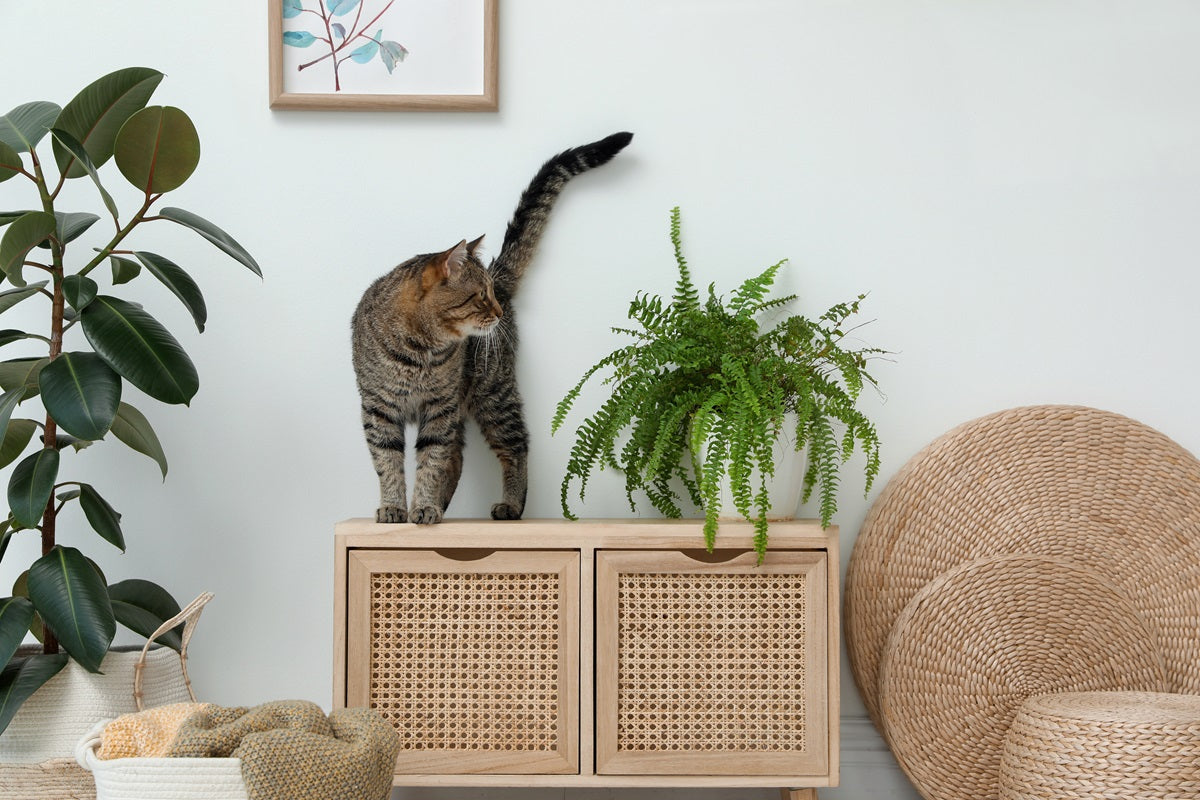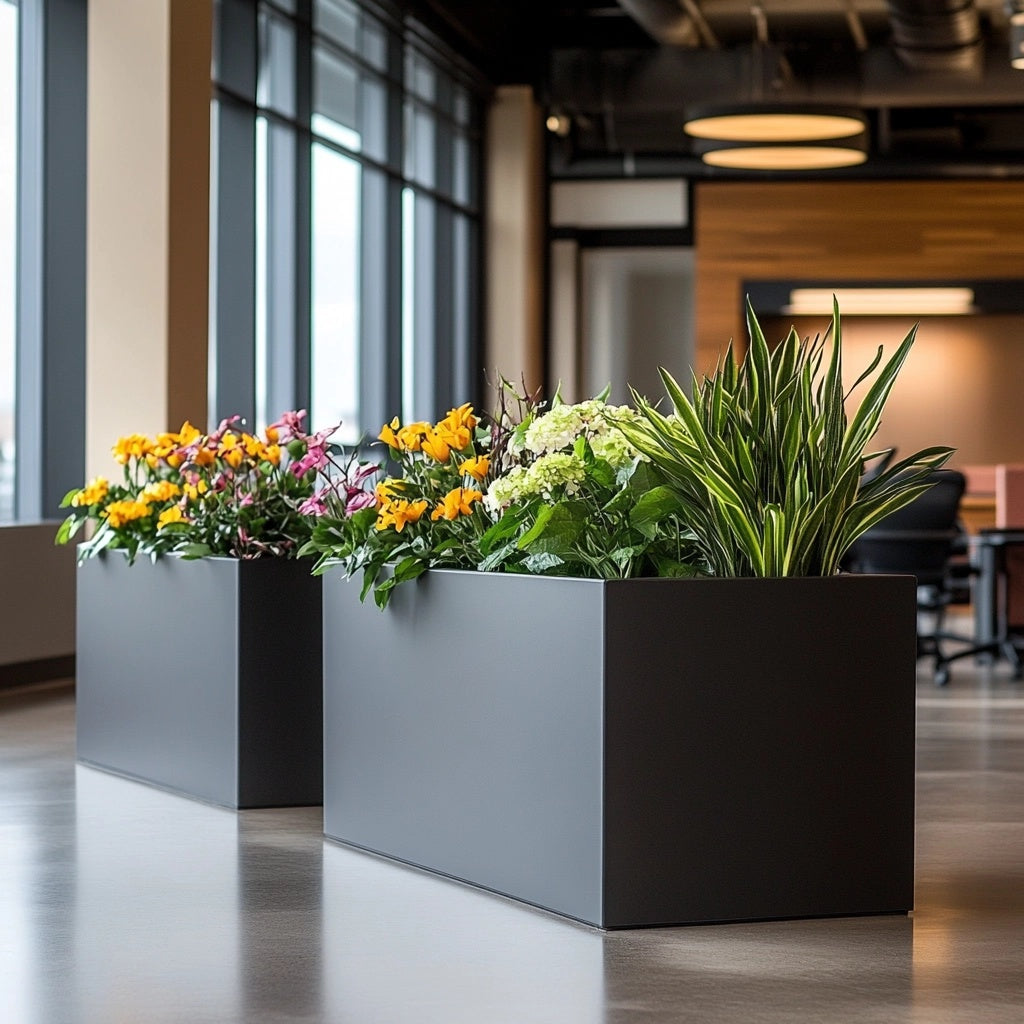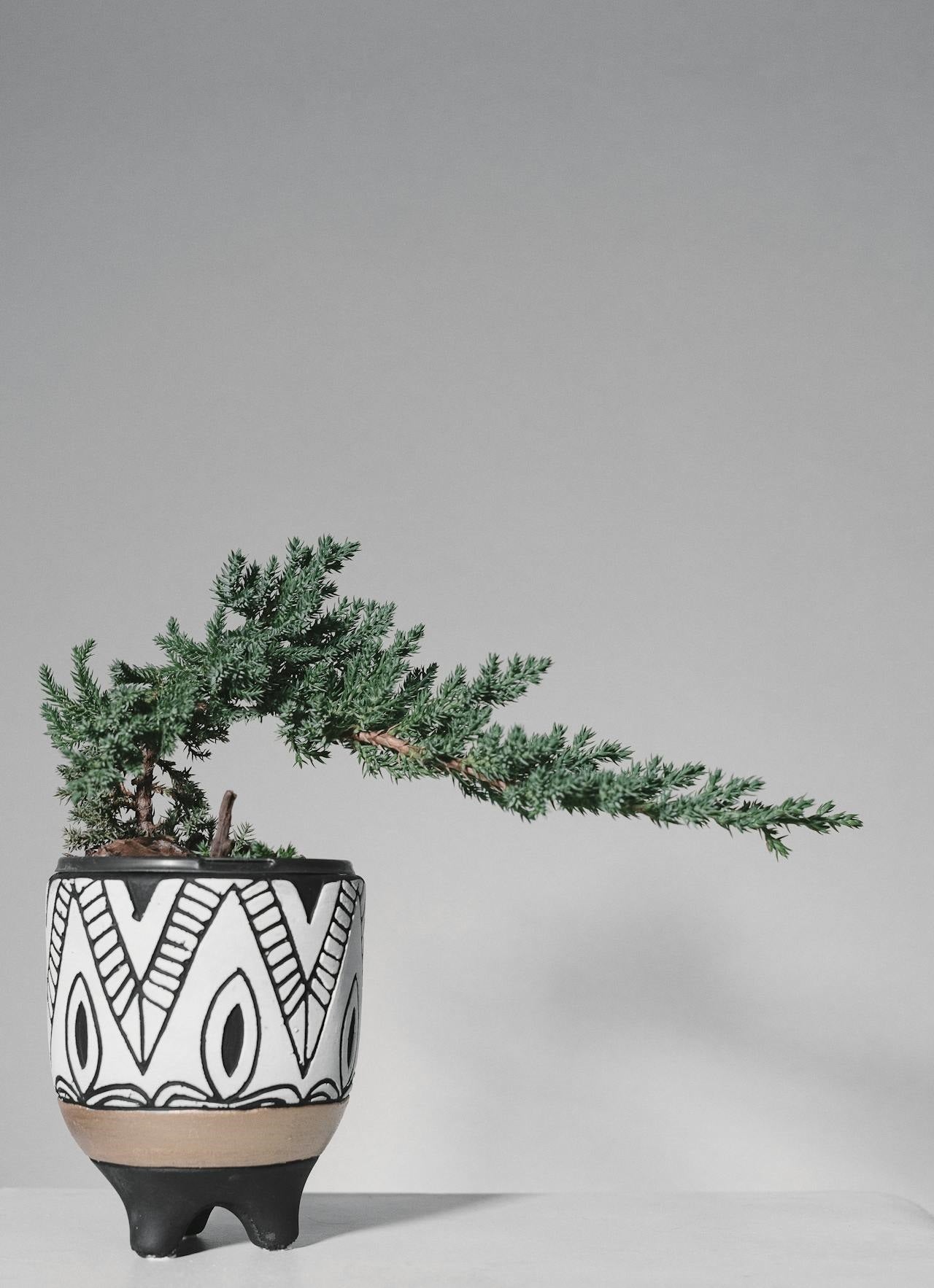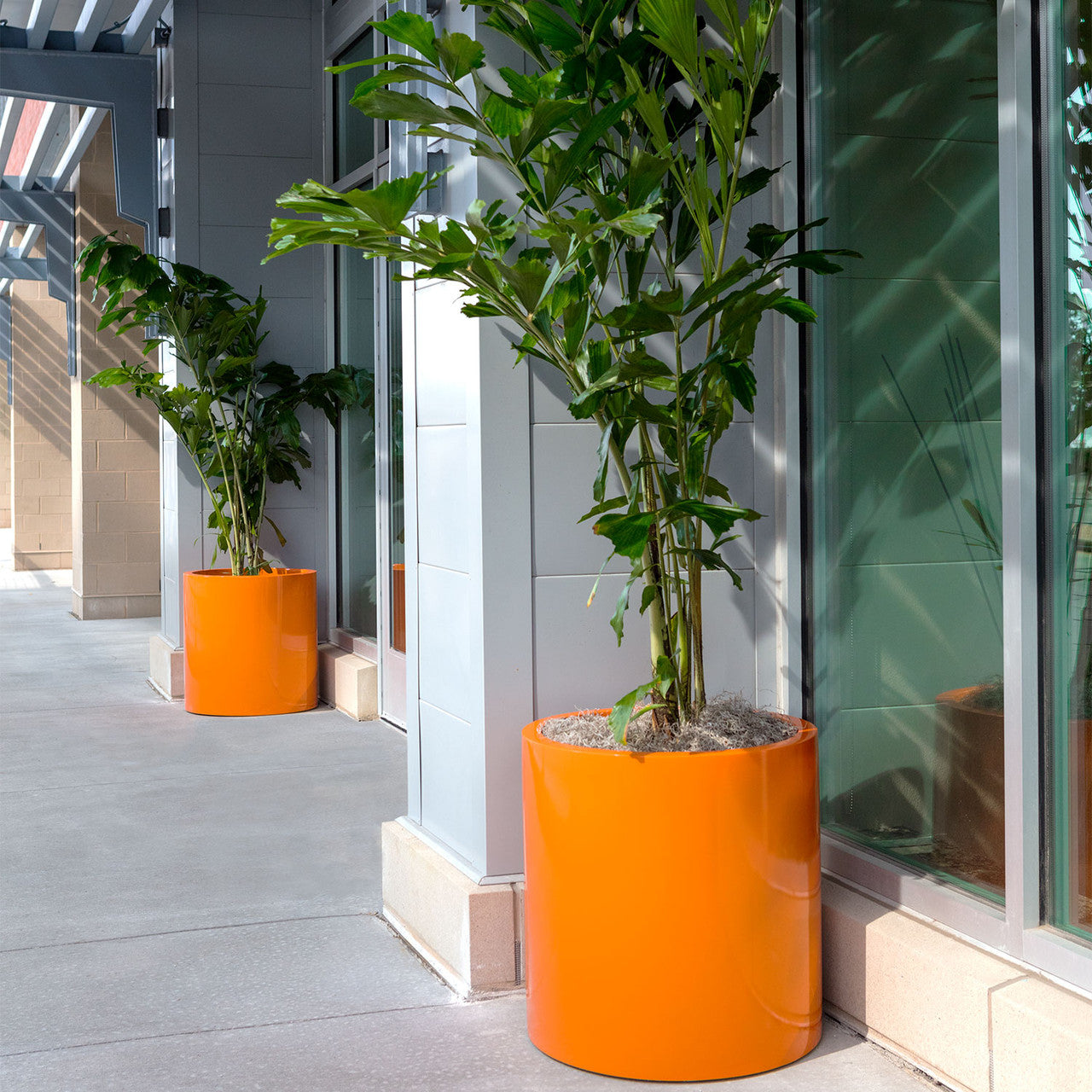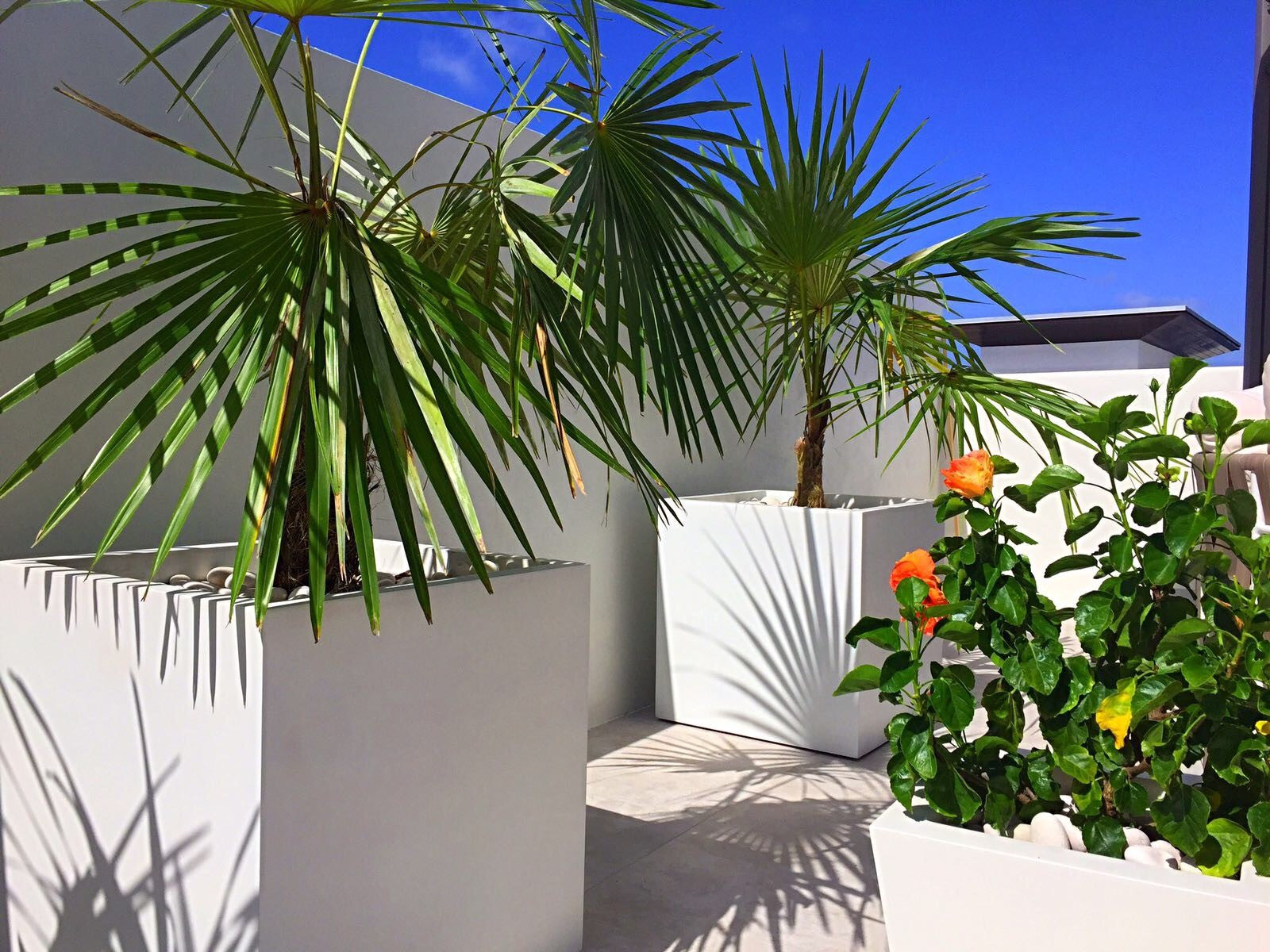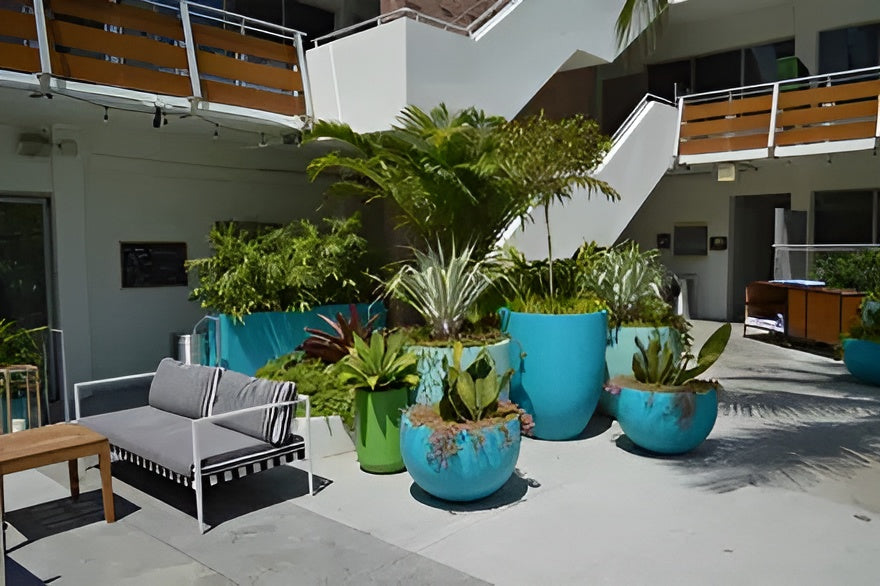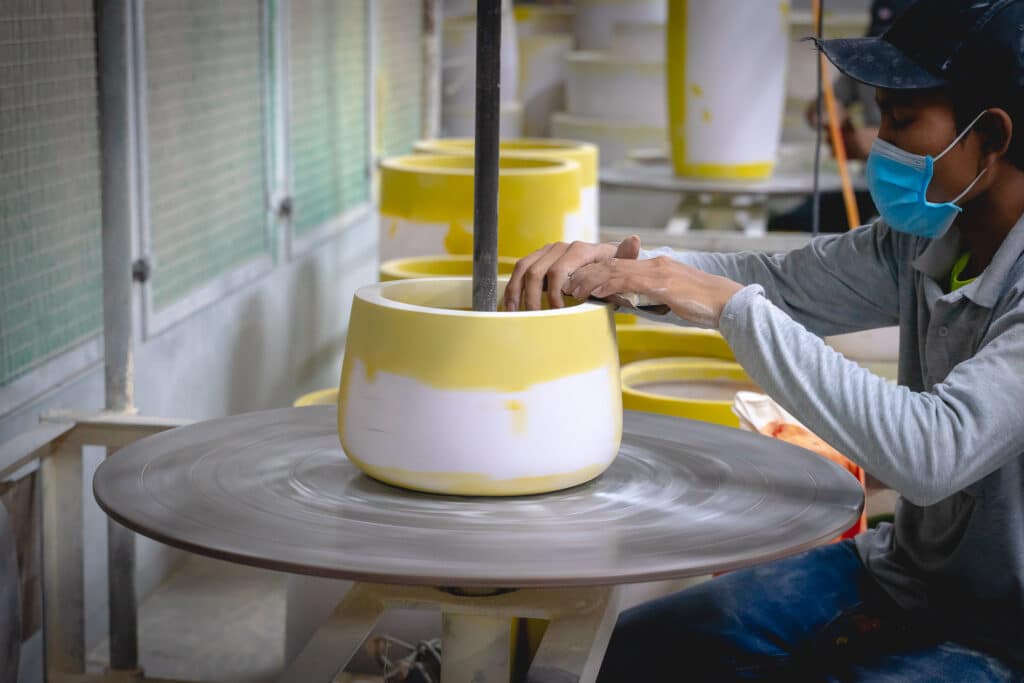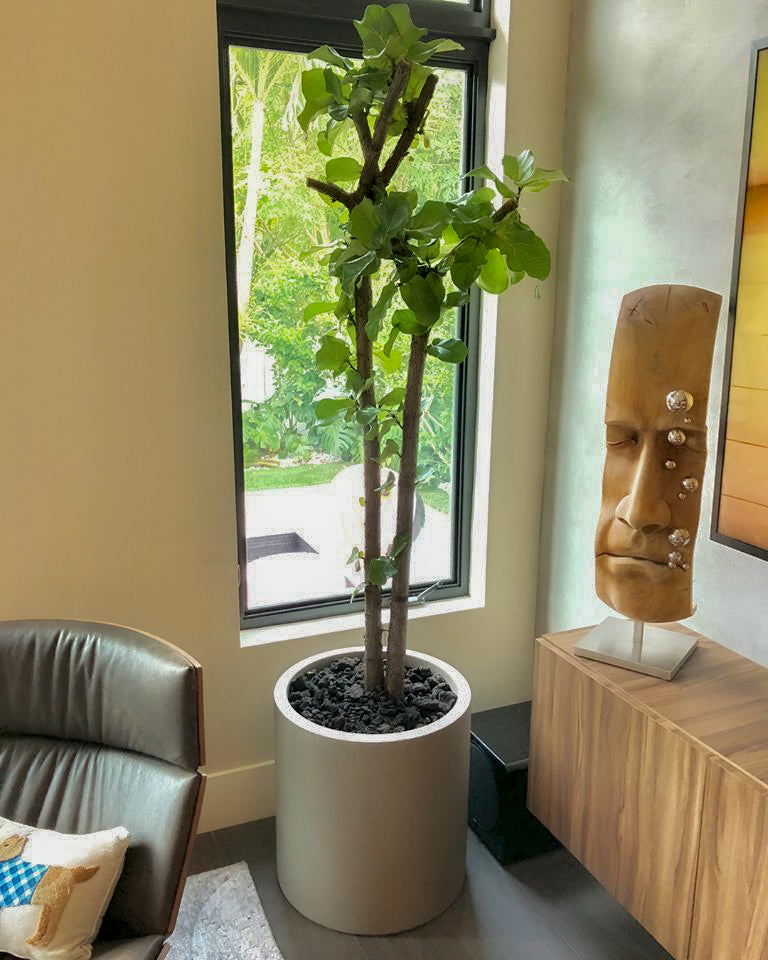- Fiberglass Planters -

Rectangular Planters
41 products

Round Planters
21 products

Tapered Planters
21 products

Oval Planters
2 products

Bowl Planters
8 products

Square Planters
6 products

Cylinder Planters
11 products

Narrow Planters
5 products

Trough Planters
10 products
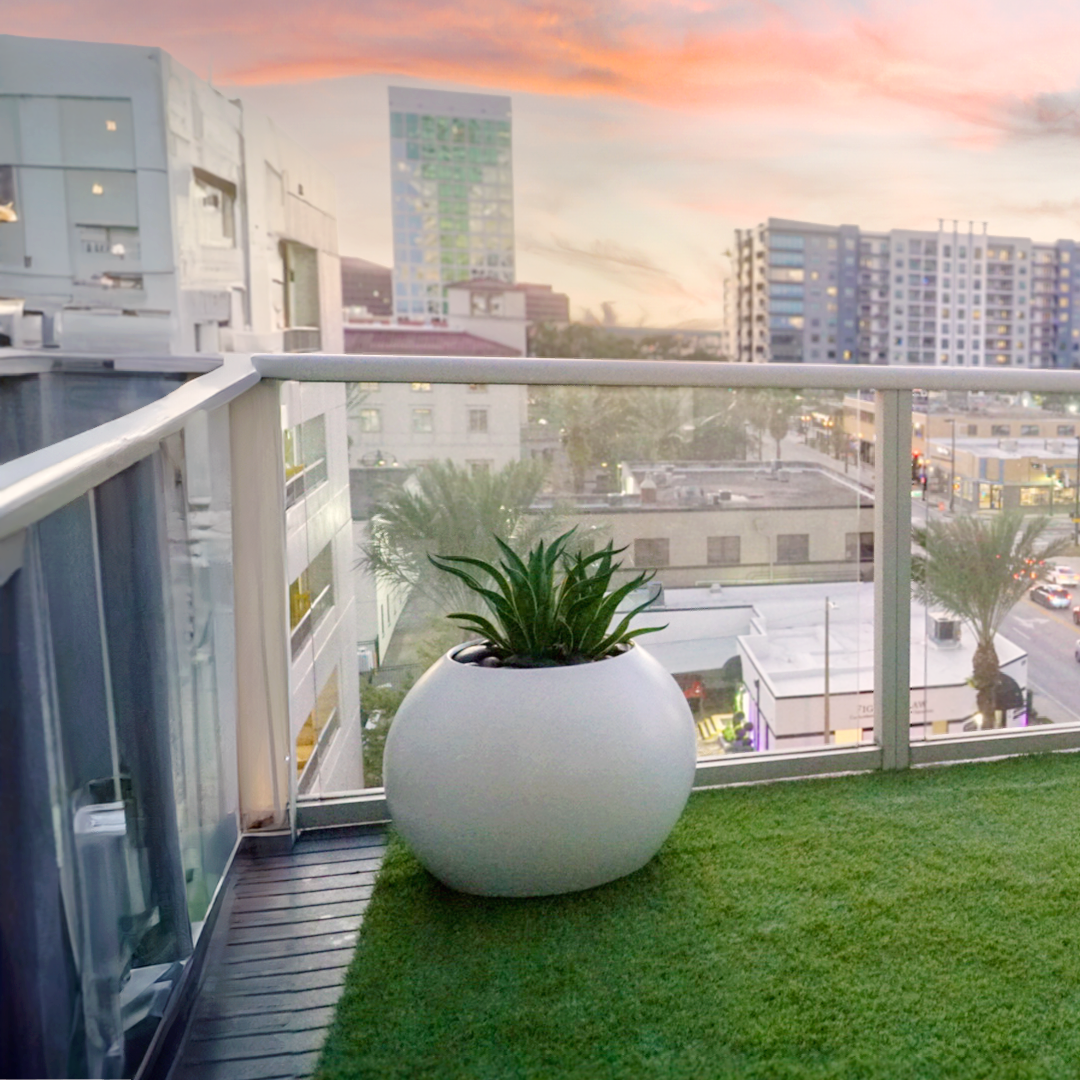
Quality Planters
Quality Service
Here at JBD Concepts, we are passionate about plants, design, and top-notch service. With almost 100 styles, sizes, colors, and finishes - there are endless ways you can make your design truly yours.
Now offering distribution in the West Coast in record time!
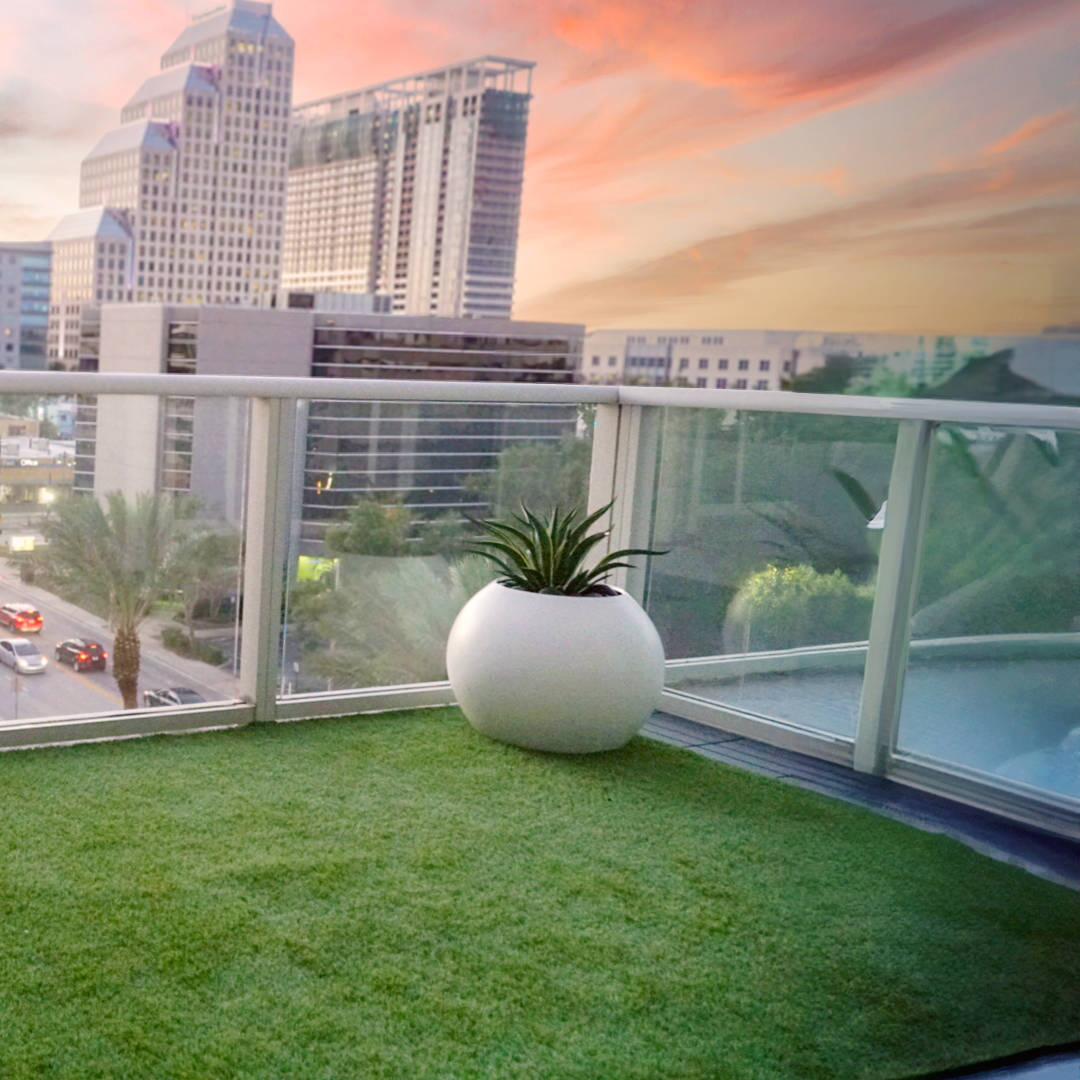
- Planters by Application -
- Words from Satisfied Shoppers -
Thanks!
Excellent Service & Delivery!
No Complaints, Always Compliments!
- Ideas & Inspiration -
Enhancing Curb Appeal: How Planters Increase Property Value and Attract Tenants
Maximizing Small Outdoor Spaces with Planters in Urban Settings
Statement Planters as Focal Points: How to Make an Impact with Greenery
Creating Privacy with Planters: How Restaurants Can Enhance Guest Comfort
Low Maintenance Backyard Design Ideas
A well-designed backyard can be a wonderful outdoor retreat, providing a space to relax, entertain, and connect with nature. However, maintaining a backyard can be time-consuming and costly. For those seeking a beautiful outdoor space without the hassle, low-maintenance backyard design is an excellent option. Ready to transform your backyard into a low-maintenance oasis? Let's get started with those popular backyard garden ideas! Benefits of a Low-Maintenance Backyard A low-maintenance backyard offers numerous benefits, including: Reduced upkeep time: Spending less time on yard work means more time to enjoy your outdoor space. Cost-effectiveness: Low-maintenance designs can save you money on landscaping costs, fertilizers, and water bills. Sustainability and environmental friendliness: Choosing drought-resistant plants and sustainable materials can help reduce your environmental impact. Enhanced outdoor enjoyment: A well-designed exterior space can provide a peaceful and enjoyable outdoor retreat. Balancing Aesthetics and Functionality A low-maintenance backyard is not just about practicality; it's also about creating a visually appealing outdoor space. The key to achieving a successful design is to find a harmonious balance between aesthetics and functionality. Consider your lifestyle and needs when planning your backyard design. For example, if you enjoy entertaining guests, you might want to include a patio or seating area. If you have children, a play area or lawn might be desirable. By understanding your priorities, you can create a backyard that is both beautiful and practical. Choosing the Right Plants Selecting the right plants is crucial for a low-maintenance backyard. Here are some of the best choices to consider: Drought-resistant plants Drought-resistant plants are a valuable asset for low-maintenance backyards. These plants are specifically adapted to thrive in dry conditions, reducing the need for frequent watering. Popular choices include lavender, succulents, rosemary, and ornamental grasses. Not only do they save water, but they also often require less fertilizer and pest control. Native plants Native plants are another excellent option for low-maintenance backyards. These plants are uniquely suited to your region's climate, soil, and pests. Their natural adaptation often means they require less care compared to non-native species. Additionally, native plants support local ecosystems and wildlife. Perennials Perennials offer long-lasting beauty and reduced maintenance. These plants return year after year, eliminating the need for annual replanting. While they might have a higher upfront cost, perennials can save you money in the long run. Examples of low-maintenance perennials Plant Name Common Name Bloom Time Notable Features Lavender (Lavandula) Lavender Summer Fragrant, calming scent; attracts pollinators. Peony (Paeonia) Peony Spring Large, showy blooms in various colors. Catmint (Nepeta) Catmint Summer Repels cats and deer; attracts butterflies. Coneflower (Echinacea) Purple Coneflower Summer Attracts butterflies and birds; medicinal properties. Black-eyed Susan (Rudbeckia) Black-eyed Susan Summer Bold, cheerful flowers; low maintenance. Daylilies (Hemerocallis) Daylilies Summer Wide variety of colors and bloom times. Coral Bells (Heuchera) Coral Bells Spring-Summer Attractive foliage in various colors. Sedum Sedum Summer-Fall Drought-tolerant; comes in various heights and colors. Geranium (Geranium) Cranesbill Spring-Summer Low-growing; variety of colors and foliage. Hosta Hosta Summer Shade-tolerant; comes in various sizes and leaf colors. Design Elements for a Low-Maintenance Backyard When designing a low-maintenance backyard, incorporating the right design elements can significantly reduce your upkeep efforts. Here are some simple backyard landscaping ideas you can consider: Hardscaping Strategically utilizing hardscaping materials like stones, gravel, and pavers can dramatically reduce the amount of lawn area in your backyard. Lawns often require significant maintenance, such as mowing, watering, and fertilizing. By replacing portions of your lawn with hardscape elements, you can create a more sustainable and low-maintenance outdoor space. Hardscaped areas also provide durable and versatile surfaces for patios, pathways, and seating areas. Artificial turf While artificial turf offers a convenient and low-maintenance alternative to natural grass, it's essential to weigh the environmental implications and aesthetic considerations. Artificial turf can be made from various materials, some of which may contain harmful chemicals. Additionally, it may not blend seamlessly with natural surroundings and can impact local ecosystems. If you choose artificial turf, opt for high-quality products with minimal environmental impact and consider integrating them with natural elements like plants and gravel. Mulching Applying mulch around your plants is a simple yet effective way to reduce maintenance and enhance your backyard's appearance. Mulch helps retain soil moisture, reducing the need for frequent watering. It also suppresses weeds, minimizing the time you spend on weeding. Mulch also adds a decorative touch to your garden, creating a more visually appealing space. Choose organic mulches like wood chips or shredded bark, which can decompose over time, enriching your soil. Incorporating Functional Features In addition to design elements, incorporating functional features can further enhance your low-maintenance backyard. Here are some valuable additions to consider: Irrigation systems Implementing an efficient irrigation system is crucial for conserving water and ensuring your plants receive the necessary moisture. Drip irrigation systems deliver water directly to the roots of your plants, minimizing water waste. Smart watering systems can be programmed to adjust watering schedules based on weather conditions and soil moisture levels, further optimizing water usage. Outdoor living spaces Looking for deck ideas for a backyard? Create a comfortable and functional outdoor living space that will transform your backyard into a welcoming retreat. Decks, patios, and seating areas provide ideal spots for relaxation, entertaining guests, and enjoying the beauty of nature. Choose durable materials that require minimal maintenance, such as weather-resistant wood or pavers. Raised garden beds Raised garden beds offer several advantages for low-maintenance gardening. They provide better soil drainage, making it easier to control the growing environment. Raised beds are also more accessible, making gardening easier for those with limited mobility. Additionally, raised beds can help prevent weeds from spreading into your garden. Decorative Elements Decorative elements can transform your low-maintenance backyard into a personalized and inviting space. Here are some ideas for enhancing the look of your backyard: Containers and planters Incorporating containers and high-quality planters throughout your backyard offers a versatile and easy-to-maintain way to add color, texture, and interest. Choose pots that complement the overall style of your backyard, and select plants that thrive in containers. You can easily rearrange planters to create different looks throughout the seasons. Apart from being a decorative element, planters are also very functional - for example, tall planters make for one of the best backyard privacy ideas. Line your backyard fence or property line with tall planters filled with dense shrubs or bamboo to create a natural privacy screen. Water features A water feature can be a captivating focal point in your garden, especially when you’re looking for large rectangular backyard design ideas. It can add a soothing ambiance and attract wildlife to your backyard. Consider a low-maintenance option like a small fountain, birdbath, or recirculating stream. The sound of flowing water can create a peaceful and relaxing atmosphere. Lighting Illuminate your backyard with decorative lighting to create a warm and inviting atmosphere. Solar-powered or LED garden lights are one of the most popular modern backyard ideas. They are also energy-efficient and require minimal maintenance. You can string lights along fences, trees, or pathways to create a magical ambiance. Consider using different colors and styles of lights to reflect your personal taste. Maintenance Tips While a low-maintenance backyard is designed to require minimal upkeep, some basic care is still necessary to ensure its beauty and health. Here are some essential maintenance tips: Proper plant selection Choosing plants that are well-suited to your climate and soil conditions is crucial for long-term success. Research plants that thrive in your region and can tolerate your specific growing conditions. This will minimize the need for excessive watering, fertilizing, or pest control. Regular pruning and deadheading Pruning and deadheading are essential for maintaining the shape, health, and appearance of your plants. Regularly remove dead or diseased foliage to promote growth and prevent the spread of pests and diseases. Pruning can also help control the size and shape of plants, keeping your backyard looking tidy. Seasonal care Follow simple seasonal maintenance routines to ensure your backyard remains healthy and vibrant throughout the year. In spring, fertilize your plants to promote growth and blooming. During the summer, monitor your plants for pests and diseases, and water as needed. In autumn, prepare your plants for winter by pruning and removing dead foliage. In winter, protect tender plants from frost and snow. Seasonal maintenance checklist Spring Summer Fall Winter Prune trees and shrubs Water plants regularly, especially during dry periods Prune back dead or damaged branches Protect plants from frost and snow Fertilize plants Deadhead spent blooms Fertilize trees and shrubs Inspect for damage and make necessary repairs Weed and mulch garden beds Control pests and diseases Rake leaves and dispose of them properly Clean up debris and fallen leaves Plant annuals and perennials Mow the lawn weekly Winterize tender plants Plan for the upcoming season Common Problems and Solutions Even with a well-designed and low-maintenance backyard, you may encounter some common problems. Here are some tips for addressing these challenges: Weed control Weeds can be a persistent problem in any backyard. To minimize weed growth, consider using mulch around your plants to suppress weeds and retain moisture. Landscape fabric can also be used as a barrier to prevent weeds from germinating. Natural weed control methods, such as hand-pulling or using vinegar, can be effective for small areas. Pest management Pests can damage plants and detract from the overall appearance of your backyard. Employ eco-friendly pest control methods to minimize the impact on the environment. Attract beneficial insects like ladybugs and lacewings to your garden to naturally control pests. Organic pest control products can also be used as a safe and effective alternative to chemical pesticides. Soil health Healthy soil is essential for the growth and vitality of your plants. Maintain soil fertility and structure by adding compost or organic matter. This will improve soil drainage, nutrient retention, and overall plant health. Avoid over-tilling the soil, as this can disrupt beneficial microorganisms. Conclusion A low-maintenance backyard can be a beautiful and enjoyable outdoor space that requires minimal upkeep. By carefully selecting plants, incorporating functional features, and following proper maintenance practices, you can create a backyard that you can enjoy for years to come. We encourage you to implement these low maintenance backyard designs and share your experiences in the comments below. If you have any questions, please don't hesitate to ask.
Ideas for Landscaping with Planters
Planters, often overlooked in traditional landscaping, offer a versatile and dynamic way to enhance outdoor spaces. These containers can add a touch of color, texture, and structure to any garden, patio, or balcony. By strategically placing planters, you can create stunning visual displays, optimize space, and even cultivate edible gardens. In this article, we will explore the benefits of landscaping with planters, guide you through the process of choosing the right containers, and provide creative ideas for incorporating them into your outdoor design. Benefits of Landscaping with Planters Outdoor planters provide a flexible and adaptable way to enhance your garden or patio. These containers provide numerous benefits, including: Versatility and Mobility: Planters offer unmatched flexibility in landscaping. They can be easily moved to accommodate seasonal changes, adjust to evolving design preferences, or adapt to new plant requirements. This mobility allows for frequent experimentation and customization of outdoor spaces. Seasonal Flexibility: Garden planters provide a convenient way to showcase seasonal blooms and foliage. By rotating plants throughout the year, you can maintain a vibrant and ever-changing garden. For instance, in the spring, plant colorful annuals and bulbs; in the summer, feature lush tropical plants; and in the fall, display colorful foliage and autumn-themed arrangements. Aesthetic Appeal: Planters are a powerful tool for enhancing the aesthetic appeal of outdoor spaces. They can add a touch of elegance, create focal points, and provide visual interest. By selecting planters with unique shapes, sizes,and materials, you can create a personalized and visually striking landscape. Space Optimization: Planters are particularly beneficial for small gardens, balconies, or patios. They allow you to maximize limited space by growing plants vertically or in compact arrangements. Additionally, planters can be used to divide larger spaces into smaller, more manageable areas. Choosing the Right Planters When selecting planters for your landscape, consider the following factors: Material Options Ceramic: Known for their durability, elegance, and wide range of colors and finishes, ceramic planters are a popular choice. However, they can be heavy and prone to cracking if not handled carefully. Terracotta: Terracotta planters offer a rustic and earthy aesthetic. They are porous, which can help regulate soil moisture. However, terracotta can become stained or cracked over time. Fiberglass: High-quality fiberglass planters are lightweight, durable, and available in a variety of shapes and sizes. They are resistant to cracking and fading, making them a popular choice for outdoor use. Plastic: Plastic planters are affordable, lightweight, and come in a wide range of colors and styles. They are easy to maintain but may not be as durable or aesthetically pleasing as other materials. Metal: Metal planters, such as those made of wrought iron or aluminum, offer a sleek and modern look. They are durable but can rust if not properly maintained. Size and Shape The size and shape of a planter should be chosen based on the plant type, desired aesthetic, and available space. Here are some general recommendations: Plant Type Planter Size Annuals and perennials Small to medium Shrubs Medium to large Trees Large Vines Hanging baskets or wall-mounted planters Creative Landscaping Ideas with Planters Planters offer a wealth of creative possibilities for landscaping. Beyond their practical benefits of adding color, texture, and structure, they can be used to create unique and visually stunning designs. Here are some innovative ideas to inspire your outdoor space: Vertical Gardens Break free from traditional horizontal gardening and embrace the vertical dimension. Wall-mounted planters or hanging baskets are ideal for creating stunning vertical displays. This is not only a space-saving solution but also adds a dramatic and eye-catching element to your landscape. Imagine a cascading wall of vibrant flowers or a lush green tapestry of ferns - those are some of the best outdoor planter ideas that will transform your garden space into a peaceful oasis. Mixed Height Arrangements If you’re looking for unique tall planter ideas, you can introduce depth and dimension to your garden by combining planters of varying heights. Tall, narrow planters can be used as focal points, while shorter planters can fill in gaps and create a balanced composition. Experiment with different combinations of plants and planters to achieve a harmonious and visually interesting effect. Color-Themed Gardens Use planters to create vibrant and thematic gardens. For a bold and striking look, plant only one color of flower in each planter. Alternatively, create a rainbow of colors by using a variety of hues in different planters. It’s one of the classic planter ideas for patio, garden or balcony that can be a visually stimulating way to transform your outdoor space. Seasonal Displays Keep your garden fresh and exciting throughout the year by rotating plants and flowers in your planters. In the spring, plant colorful annuals and bulbs. In the summer, showcase lush tropical plants. In the fall, display colorful foliage and autumn-themed arrangements. This seasonal approach will ensure that your garden always looks its best. Functional Dividers Planters can be used as natural dividers to separate different areas of your garden or patio. This can create a sense of organization and privacy, while also adding visual interest. For example, place a row of planters along a pathway to define a boundary or use planters to create a cozy seating area. Themed Planting Create themed gardens, such as tropical, desert, or cottage gardens, by arranging plants in small or large planters that complement the theme. A tropical garden might feature palm trees, hibiscus, and colorful orchids in large, terracotta planters. A desert garden could include cacti, succulents, and drought-tolerant plants in rustic, stone planters. A cottage garden might feature English roses, lavender, and cottage-style annuals in charming, ceramic planters. Entrance Beautification Looking for porch or front yard planter ideas to make a lasting impression on visitors? Enhance the entrance to your home with thoughtfully placed planters. Symmetrical arrangements of matching planters can create a formal and elegant look, while asymmetrical arrangements can add a touch of whimsy and personality. Experiment with different combinations of plants and planters to find the perfect design for your front porch or entryway. Balcony and Small Space Ideas Even if you have limited outdoor space, you can still create a beautiful garden. Compact planters, hanging baskets, and vertical gardens are ideal for balconies and small patios. Choose plants that thrive in containers and are suitable for your climate. Edible Gardens Grow fresh herbs, vegetables, and small fruit plants in planters to create an edible garden. This is a practical and rewarding way to enjoy homegrown produce and add a functional element to your landscape. Choose plants that are suitable for container gardening and provide the necessary care and maintenance. Water Features with Planters Searching for garden or backyard planter ideas involving water features? Incorporate planters into water features to create a unique and visually stunning focal point. Place planters around a pond or fountain, or use them to create a cascading waterfall. The combination of plants and water can create a peaceful and relaxing atmosphere. Maintenance Tips for Planter Landscapes To ensure the health and beauty of your planter landscape, it's essential to provide proper care and maintenance. Here are some key tips: Watering and Drainage Proper Drainage: Ensure that your planters have adequate drainage holes to prevent root rot. Without proper drainage, excess water can accumulate and suffocate the roots. Consistent Watering: Water your plants regularly, but avoid overwatering. Check the soil moisture by sticking your finger about an inch deep. If it feels dry, it's time to water. Adjust Watering: The frequency of watering will depend on factors such as plant type, container size, and weather conditions. Adjust your watering schedule accordingly. Soil and Fertilization Well-Draining Soil: Use a well-draining soil mix specifically designed for containers. This will help prevent root rot and provide essential nutrients for plant growth. Regular Fertilization: Fertilize your plants regularly to replenish nutrients that are depleted over time. Use a balanced fertilizer that is suitable for the type of plants you are growing. Organic Options: Consider using organic fertilizers to promote healthy soil and reduce environmental impact. Plant Type Recommended Soil Mix Annuals and Perennials Peat moss, perlite, compost Shrubs Peat moss, bark, perlite Trees Potting soil, perlite, compost Vines Peat moss, perlite, coco coir Succulents and Cacti Cactus and succulent mix (low moisture retention) Herbs Well-draining potting mix, enriched with compost Vegetables Vegetable garden mix or custom blend of peat moss, perlite, and compost Pruning and Plant Care Regular Pruning: Prune your plants as needed to maintain their shape, size, and health. Remove dead or damaged branches or leaves to encourage new growth and prevent disease. Deadheading: Deadhead spent flowers to promote continuous blooming and prevent the formation of seeds. Pest and Disease Control: Monitor your plants for signs of pests or diseases and take appropriate action to prevent or treat them. Common Problems and Solutions While landscaping with planters offers numerous benefits, it's important to be aware of potential challenges and how to address them. Here are some common problems you may encounter and their corresponding solutions: Overwatering: Symptoms of overwatering include yellowing leaves, root rot, and mushy stems. Reduce watering and ensure proper drainage. Root Rot: This fungal disease can be caused by overwatering or poor drainage. Remove affected plants and replant them in fresh, well-draining soil. Pests: Common pests that can affect container plants include aphids, spider mites, and mealybugs. Use natural or chemical pest control methods to eliminate infestations. Insufficient Sunlight: Many plants require adequate sunlight to thrive. Ensure your planters are placed in locations that receive the appropriate amount of sunlight for the specific plants you are growing. Conclusion Landscaping with planters offers a versatile and rewarding way to create beautiful and functional outdoor spaces. By carefully selecting planters, choosing the right plants, and providing proper care, you can transform your garden, patio, or balcony into a stunning oasis. Experiment with different ideas, enjoy the process, and share your experiences with others.
Best Indoor Plants for an Office with No Windows
Indoor plants have become increasingly popular in office environments, and for good reason. They offer a multitude of benefits that can enhance both the physical and mental well-being of employees. From improving air quality to boosting mood and productivity, incorporating plants into the workplace can create a more pleasant and inspiring atmosphere. However, offices without windows present unique challenges for plant care. Limited natural light and the potential for decreased airflow can make it difficult to maintain healthy and thriving plants. Nevertheless, with careful selection and proper care, it is possible to create a lush and vibrant indoor garden even in a windowless space. Benefits of Indoor Plants in a Windowless Office Indoor plants offer a multitude of advantages for office environments, particularly those without windows. Their presence can significantly enhance both the physical and mental well-being of employees. Improved Air Quality: Indoor plants naturally purify the air by removing harmful toxins and pollutants. This is especially beneficial in windowless offices, where ventilation can be limited. Enhanced Mood and Productivity: Studies have shown that exposure to greenery can reduce stress, improve mood, and increase concentration. This can lead to higher productivity and job satisfaction. Aesthetic Appeal: Indoor plants add a touch of nature to the office environment, creating a more visually appealing and inviting space. They can also help to break up the monotony of office furnishings. Criteria for Choosing Plants for a Windowless Office When selecting low light office plants, it is essential to consider several key factors that will contribute to their success and overall benefit to the environment: Low Light Tolerance: As offices without windows lack natural sunlight, plants must be able to thrive in low-light conditions. Some plants have evolved to adapt to shaded environments, allowing them to flourish even in spaces with minimal illumination. Low Maintenance: Busy office environments often leave limited time for plant care. Choosing plants that require minimal maintenance, such as infrequent watering or pruning, can help ensure their longevity and reduce the burden on office staff. Air Purifying Qualities: Indoor plants play a vital role in improving air quality by removing harmful toxins and pollutants. In windowless offices, where ventilation can be limited, plants with strong air-purifying properties can help create a healthier and more pleasant working environment. Compact Size (Optional): The available space in a windowless office may be limited, making it important to select plants that are suitable for smaller areas. Compact plants, such as succulents or trailing vines, can add greenery without taking up excessive room. Top 10 Indoor Plants for Offices with No Windows If you’re looking for ways to decorate a windowless office with indoor plants, here are the best plants for office with no windows: 1. Snake Plant (Sansevieria) Description: A succulent with upright, sword-shaped leaves that can vary in color from dark green to variegated with yellow or white stripes. Snake plants are known for their unique appearance and resilience. Light Requirements: Thrives in low-light conditions, making it an ideal choice for offices without windows. It can tolerate periods of neglect and still maintain its health. Watering Needs: Allow the soil to dry out completely between waterings, as overwatering can lead to root rot. Snake plants are drought-tolerant and can withstand periods of drought. Benefits: Not only does the snake plant remove harmful toxins like formaldehyde and benzene from the air, but it also releases oxygen at night, making it a beneficial addition to bedrooms. It's a true air-purifying powerhouse. 2. Dracaena Description: A genus of tropical plants that includes a variety of species and cultivars with diverse appearances. Dracaenas can range from small, shrub-like plants to large, tree-like specimens with long, slender leaves. Light Requirements: While most dracaenas prefer bright, indirect light, many varieties can tolerate low-light conditions. Some popular choices for windowless offices include Dracaena marginata (Madagascar Dragon Tree) and Dracaena reflexa (Janet Craig). Watering Needs: Water dracaenas sparingly, allowing the soil to dry out slightly between waterings. Avoid overwatering, as it can lead to root rot. Benefits: In addition to removing harmful toxins from the air, dracaenas can also help to increase humidity levels in dry office environments. This can be particularly beneficial during the winter months when indoor air tends to be dry. 3. ZZ Plant (Zamioculcas Zamiifolia) Description: A succulent with glossy, dark green leaves that grow in clusters from underground tubers. The ZZ plant is known for its durability and low-maintenance requirements. Light Requirements: Thrives in low-light conditions and can tolerate periods of neglect. It is an excellent choice for offices with limited natural light. Watering Needs: Water ZZ plants infrequently, allowing the soil to dry out completely between waterings. Overwatering can lead to root rot. Benefits: The ZZ plant is a true air-purifying champion, effectively removing harmful toxins like formaldehyde, benzene, and toluene from the air. Its ability to thrive in challenging conditions makes it a reliable choice for any office environment. 4. Pothos (Epipremnum aureum) Description: A versatile vine with heart-shaped leaves that can be trained to climb or trail. Pothos plants come in a variety of colors and patterns, including solid green, variegated with yellow or white, and even variegated with neon colors. Light Requirements: Thrives in low-light conditions and can tolerate periods of neglect. Pothos plants can adapt to a wide range of lighting conditions. Watering Needs: Water pothos plants moderately, allowing the soil to dry out slightly between waterings. Avoid overwatering, as it can lead to root rot. Benefits: Pothos plants are not only effective air purifiers, but they also help to increase humidity levels in dry office environments. This can be beneficial for both plants and people, as dry air can lead to discomfort and respiratory issues. 5. Peace Lily (Spathiphyllum) Description: A flowering plant with white or cream-colored blooms that are surrounded by large, glossy green leaves. Peace lilies are known for their elegant appearance and air-purifying properties. Light Requirements: Prefers bright, indirect light but can tolerate low-light conditions. Peace lilies will bloom more frequently in brighter light. Watering Needs: Keep the soil consistently moist, but avoid overwatering. Peace lilies are sensitive to root rot, so it's important to allow the soil to dry out slightly between waterings. Benefits: In addition to removing harmful toxins from the air, peace lilies can also help to increase humidity levels.This can be particularly beneficial during the winter months when indoor heating can dry out the air. 6. Aglaonema (Chinese Evergreen) Description: A low-growing plant with variegated leaves that come in a variety of colors and patterns. Aglaonema plants are known for their durability and low maintenance. Light Requirements: Thrives in low-light conditions and can tolerate periods of neglect. Aglaonema plants are an excellent choice for offices with limited natural light. Watering Needs: Water aglaonema plants moderately, allowing the soil to dry out slightly between waterings. Avoid overwatering, as it can lead to root rot. Benefits: Aglaonema plants are effective air purifiers that can help to remove harmful toxins from the air. They are also known for their ability to improve indoor air quality by increasing humidity levels. 7. Cast Iron Plant (Aspidistra elatior) Description: A tough plant with large, dark green leaves that grow from underground rhizomes. Cast iron plants are known for their durability and ability to withstand neglect. Light Requirements: Thrives in low-light conditions and can tolerate periods of neglect. Cast iron plants are an excellent choice for offices with limited natural light. Watering Needs: Water cast iron plants infrequently, allowing the soil to dry out completely between waterings. Cast iron plants are drought-tolerant and can withstand periods of neglect. Benefits: Known for their air-purifying properties, these plants help to create a cleaner and healthier breathing space by removing harmful toxins from the air. Their ability to increase humidity levels further enhances indoor air quality. 8. Philodendron Description: A genus of tropical plants that includes a variety of species and cultivars with diverse appearances. Philodendrons can range from small, vining plants to large, tree-like specimens with glossy green leaves. Light Requirements: Varies depending on the variety, but most philodendrons can tolerate low-light conditions. Some popular choices for windowless offices include Philodendron hederaceum (Heartleaf Philodendron) and Philodendron scandens (Vine Philodendron). Watering Needs: Water philodendrons moderately, allowing the soil to dry out slightly between waterings. Avoid overwatering, as it can lead to root rot. Benefits: These plants are nature's air fresheners, effectively removing harmful toxins from the air and improving overall indoor air quality. By increasing humidity levels, they also contribute to a more comfortable and healthy environment. 9. Spider Plant (Chlorophytum comosum) Description: A popular houseplant with long, slender leaves and small plantlets called spiderettes. Spider plants are known for their ease of care and air-purifying properties. Light Requirements: Thrives in low-light conditions and can tolerate periods of neglect. Spider plants are an excellent choice for offices with limited natural light. Watering Needs: Water spider plants regularly, keeping the soil moist but not soggy. Avoid overwatering, as it can lead to root rot. Benefits: These plants are natural air purifiers that help to create a healthier indoor environment by removing harmful toxins and pollutants. Their ability to increase humidity levels further enhances the air quality and can help to alleviate dry skin and respiratory discomfort. 10. Parlor Palm (Chamaedorea elegans) Description: A small palm tree with feathery fronds that adds a touch of elegance to indoor spaces. Parlor palms require relatively low maintenance and can withstand many conditions. Light Requirements: Prefers bright, indirect light but can tolerate low-light conditions. Parlor palms will grow more slowly in low-light conditions. Watering Needs: Water parlor palms regularly, keeping the soil moist but not soggy. Avoid overwatering, as it can lead to root rot. Benefits: These plants are a valuable addition to any indoor space, acting as natural air purifiers and helping to improve overall air quality. By increasing humidity levels, they contribute to a more comfortable and healthy environment. Care Tips To ensure the health and longevity of your plants for windowless office, it's essential to provide them with the proper care. Artificial Lighting Source: https://www.apartmentguide.com/blog/low-light-houseplants/ Types of artificial lights suitable for plants: Fluorescent lights, LED lights, and grow lights are all effective options for providing plants with the necessary light. Each type has its own advantages and disadvantages, so consider factors such as energy efficiency, light spectrum, and heat output when making your selection. Recommended duration and distance from plants: Plants typically require 12-16 hours of light per day to thrive. Place lights at a distance of 6-12 inches from the plants to avoid scorching the leaves. The ideal distance may vary depending on the type of light and the specific needs of the plant. Watering and Humidity Management Importance of proper watering: Overwatering is a common cause of plant death. Allow the soil to dry out slightly between waterings to prevent root rot. The frequency of watering will depend on factors such as the plant species, pot size, and the temperature and humidity of the environment. Tips for maintaining humidity: Indoor plants often benefit from higher humidity levels, especially in dry office environments. Here are some tips for maintaining humidity: Mist plants regularly: Misting the leaves with water can help to increase humidity around the plant. Use a humidifier: A humidifier can be a convenient way to increase humidity levels in a room. Place a pebble tray filled with water under the plant pot: As the water evaporates, it will help to increase humidity around the plant. Watering schedule for different plants Plant Name Watering Frequency Soil Moisture Snake Plant (Sansevieria) Once every 2-3 weeks Dry to slightly moist Dracaena Once every 1-2 weeks Moist but not soggy ZZ Plant (Zamioculcas Zamiifolia) Once every 2-3 weeks Dry to slightly moist Pothos (Epipremnum aureum) Once every 1-2 weeks Moist but not soggy Peace Lily (Spathiphyllum) Once every 1-2 weeks Moist Aglaonema (Chinese Evergreen) Once every 1-2 weeks Moist but not soggy Cast Iron Plant (Aspidistra elatior) Once every 2-3 weeks Dry to slightly moist Philodendron Once every 1-2 weeks Moist but not soggy Spider Plant (Chlorophytum comosum) Once every 1-2 weeks Moist Parlor Palm (Chamaedorea elegans) Once every 1-2 weeks Moist Common Problems and Solutions Indoor plants, even when carefully cared for, can sometimes encounter issues. Identifying and addressing these problems promptly can help to maintain the health and vitality of your plants. Yellowing Leaves: Yellowing leaves can be a sign of various problems, including overwatering, underwatering, or nutrient deficiencies. If the leaves are yellowing from the tips, it may indicate underwatering. If the leaves are yellowing from the base, it may indicate overwatering. Adjust your watering schedule and consider fertilizing the plant if necessary. Overwatering and Root Rot: Overwatering can lead to root rot, a condition that can cause the roots to decay. Signs of overwatering include mushy leaves and root rot. Allow the soil to dry out completely between waterings and repot the plant if necessary. Pest Control: Common pests that can affect indoor plants include aphids, mealybugs, and spider mites. Inspect your plants regularly for signs of pests and take action if necessary. Organic insecticides or neem oil can be effective treatments for many common pests. The Bottom Line Indoor plants can significantly enhance the quality of life in a windowless office. By carefully selecting plants that are well-suited to low-light conditions and providing them with appropriate care, you can create a vibrant and healthy indoor garden. The benefits of improved air quality, enhanced mood, and increased productivity make indoor plants a valuable addition to any workplace. We encourage you to experiment with different plants and find the ones that best suit your office environment. If you have any questions or would like to share your experiences, please leave a comment below.
5 Great Plant Corner Ideas | All You Need To Know About Corner Plants in 2024
Indoor plants are often overlooked in home decor despite the fact that they add a fresh, green quality anywhere they're placed. On top of this visual interest, there are numerous other benefits a plant collection can have on you and your commercial or residential space. However, one might find when they begin gardening that while it's quite simple to introduce new plants to a room, there's a spot that's always quite tricky to figure out. Yes, we're talking about corners. Don't worry though, in this article we'll fix you up with numerous plant corner ideas to get those nit-picky spots popping! Before showcasing our range of plant corner ideas, we'll start off by briefly discussing the best shape, size, and material for filling your empty corner. The reason it's vital to get this figured out first is that oftentimes, it's those aspects that hinder one's ability to garden in a corner. Once that matter is taken care of, you'll be better equipped to learn about all our numerous plant corner ideas. Turn forgotten corners into lush paradises - Discover our Indoor Planters collection for your gorgeous plants today! Contents Best Planters For Growing Plants In Corners What's The Best Shape For A Corner Planter? What's The Best Size For A Corner Planter? 5 Great Plant Corner Ideas Enhance An Otherwise Dull Corner With A Tall House Plant Bring Color To A Corner with plant corner ideas Leverage The Beauty Of Tropical Plants Small Pots With Tall Plants! Show Off With Climbing & Trailing House Plants Put The Finishing Touch To Your Corners With Our Indoor Plant Pots Best Planters For Growing Plants In Corners Let's start off by discussing the best shape for a corner planter. This is the most important factor when you want to grow corner plants and getting this right makes everything else fall nicely into place. What's The Best Shape For A Corner Planter? Square A square planter is your best choice for potting corner plants. The reasoning for this is simple and one you've probably already figured out for yourself. A square planter naturally slots into a corner given their shape and edges. It's also relatively compact, meaning you're not taking too much space in using a square pot. Rectangular A rectangular planter is your next best option with plant corner ideas. Again, these will easily slot inside a corner, but you have to remember that due to their length, one end of the planter will be in one corner while the rest will jut out. If this bothers you, go for a square pot. However, rectangle containers are much better for plant health if you want to plant more than one plant. Furthermore, their size adds interest to small spaces and are a nice contrast to the classic square design. More on pot shape? Check out this Planter Shape Guide for more guides and ideas on home improvement using plant pots! What's The Best Size For A Corner Planter? As opposed with shape, you have a bit more leeway with pot size so long as you stick to a square or rectangular planter. Small Jay Scotts If you're looking to grow smaller plants or you want to see plant babies develop, smaller pots are the right size for you. Most small pots would end up being square shapes as rectangular ones are too long to really be considered 'small'. Something like this Cuba Low Corner Planter is a good example of your plant corner ideas. Given their size, these save space while also allowing for the possibility of serving as the focal point of a room. How would you do that exactly you ask? We'll get more into specifics later but it involves small pots and tall plants - Any ideas? Medium A medium-sized planter is that weird middle ground that's occasionally difficult to define. A safe bet is to consider any pot between 14'' to 24'' in diameter as a medium planter. You can start working with rectangular and square planters with a medium pot. Not only does this allow for more plants if you decide to group plants, but the increased size of the pot will also serve as attention-grabbing decor. Simply place plants inside and watch a space bloom with green! Large A large pot in a corner is a surefire way to eliminate even the thought of those empty spaces and create a plant corner that is an integral part in the overall makeup of a commercial or residential space. When you opt for a large planter like the Darwin Tall Rectangular Planter, you're giving yourself the option of planting pretty much anything, from tropical plants to trailing plants to different textures of flowers! Such a large size makes for the perfect addition to any grand resort, as it really gives guests the sense of being immersed in nature, which is the perfect recipe for a relaxed weekend getaway. Looking for a collection of big plant containers? We supply the best large planters for both businesses and homeowners! 5 Great Plant Corner Ideas Enhance An Otherwise Dull Corner With A Tall House Plant Kicking off our list of plant corner ideas, how about using tall corner plants to enhance those otherwise dull spaces? This is simple to pull off and occasionally you don't need to even think about doing it, it'll just happen on its own. However, if you are looking to work with this style, choosing a plant like the Fiddle Leaf Fig, Snake Plant, or Bamboo Palm will give you the best results. These indoor plants can grow to nice sizes without being overbearing and are also amongst the most popular plants in the world. To complete the design, simply pair the plant of your choice with a fiberglass pot like the Darwin Tall Corner Planter and you should be good to go. Want to see a collection of tall pots? Check out these Tall Planters (over 32''!) Bring Color To A Corner with plant corner ideas If you want to take decorating with indoor corner plants to the next level, how about a gardening corner filled with color? Bringing color to a corner is a simple way to show off your plant collection while simultaneously making corners burst to life--Let's find out how you can do this! To start off, all you have to do is think about the color of the plant that's going to go in the corner. How does it work in relation to the rest of the room? Or, on the other hand, will you have is stand out as a statement piece? These are some questions you'll want to think about when you begin decorating your corner. If you want more than just using plants for this idea, you can also add color with the planter itself! A company like JBD Concepts is your best friend if you want to try this out, as all there fiberglass planters come in a host of colors so you'll be sure to find the shade you desire. Want to know more about fiberglass? Check these 5 Fiberglass Planter Benefits out! Leverage The Beauty Of Tropical Plants Another fun way to eliminate boring corners is to leverage the beauty of tropical plants. This plant corner idea is great for indoor and outdoor use, and if you're blessed enough to be working with a pool space, this is the idea for you! Given their name, tropical plants will want to be in locations that receive a good amount of sunlight to flourish. While corners don't exactly seem like the places to receive much light, so long as there's a window nearby, you're sure to be fine. If you're still worried, plant these tropical plants in the corners outside--Think the corner of a patio, the corner of an outdoor garden, or, like we mentioned, the corner of a pool space. For an actual plant to pot, how about a Fiddle Leaf Fig? These plants are from the tropical rainforests of West Africa and love a bit of sunlight and humidity. Their leafy shape are sure to be a prized asset to your plant collection so go ahead and get decorating! Interested in planting outside? Check out this guide on Patio Planters Small Pots With Tall Plants! We briefly discussed the possibility of using small pots to serve as the focal point of a room, but never got into exactly how to go about doing this. Let's find out! Simply put, this plant corner idea works by putting together two componenets: a small pot and a tall plant--Self explanatory, right? The reason this idea is so great is because of the fact that by using a smaller sized pot, you can save money while effectively hiding your pots in the corner. What do we mean by this? Well, what if the corner is behind a couch or next to a wooden table? The view of the pot in such situations is obstructed so all that you and your guests really end up seeing is the tall plant shooting out from it--Pretty neat, eh? To get started, choose flower pots like the Montroy Cube Planter. Once you have the pot, choose a tall plant to go inside! You could use small trees like the Japanese Maple for a stunning display of green! Show Off With Climbing & Trailing House Plants Climbing and trailing house plants are some of the best ways of using up corner space. Each offer their own distinct look that will be sure to provide some much needed visual interest to a room. Climbing Plants Climbing plants do just what their name suggest. Some notable mentions would be the Wisteria, Clematis, or various species of the Ivy. By planting these in a pot in a corner, or on a trellis, you'll not only be able to fill a corner, but also bring about some green to the vertical space above said corner. With proper maintenance and care, you'll be able to decorate the walls of a room with a natural jungle look that is sure to impress anyone who comes around. Trailing Plants Compared to climbing plants that go up, trailing plants spill outwards and down. However, you can simply pot some trailing plants and have them spill onto the floor, a much more stylish choice would be to use wall planters or a pot sitting atop a plant shelf. For a wall planter, try something like the Nile Wall Planter. On the other hand, with a plant shelf you can simply place a pot atop the shelf and then have the trailing plants growing out from there. Regardless of your choice, trailing plants will surely provide you with a beautiful design that will introduce varying heights to your interior design! What if you have space on the roof? Learn all about Rooftop Planters Put The Finishing Touch To Your Corners With Our Indoor Plant Pots Transform your living spaces with the enchanting allure of indoor plants, especially those tucked away in the often-forgotten corners. In our blog post, we've unveiled creative solutions to make every corner in your home come alive. "But what truly brings these ideas to life? The answer lies in the perfect planters. That's where our Indoor Planters collection steps in. We understand that the right planter can make all the difference. That's why we offer a range of planters designed to elevate your indoor gardening experience. Explore our collection today, and you'll discover the ideal companions for your corner plants. Our fiberglass planters, in particular, stand out as the ultimate choice for indoor planting. Not only do they offer unmatched durability and easy maintenance, but they also bring a touch of elegance to your decor. Whether you're a seasoned gardener or just starting, our Indoor Planters collection has something for everyone. Make those neglected corners bloom with life and style in no time with JBD Concepts' fast shipping! Cuba Low Corner Planter Transform any space with the sleek design of the Cuba corner planter box, crafted for both style and endurance.With these square planters, you can create a linear arrangement that goes around corners – the perfect complement to your rectangle planters. View Product Darwin Tall Rectangular Planter True to this planter’s namesake, the Darwin has evolved from the success of our favorite tall rectangles like the Perth and Brisbane. View Product Montroy Cube Planter A fitting complement to both traditional and modern designs, the Shanghai Fishbowl Planter will adorn any type of interior with its timeless elegance. View Product
Large Planters For Pool Area Perfection | Pool Planter Ideas For Resorts & Homeowners 2024
Nothing really speaks as much to the good life as a swimming pool. Immediately, you start thinking of calm, cool waters, children giggling as they splash in their parent's arms, and a nice, temperate sun gleaming in the sky. The thought alone is enough to make you start planning your next vacation, or, if you're lucky, getting up from your chair and diving into your backyard pool. Regardless of whether you own your own swimming pool or are looking to install a hotel or resort pool area for guests to enjoy, one surefire way to increase the level of enjoyment and relaxation in this outdoor space is by growing your favorite plants there. So how can you do this? Well, large planters for pool area, like our extensive collection, are key in any outdoor living space or backyard garden. In this article, we'll provide a rundown on all your questions about plants around swimming pools. After a brief summary of everything you need to know, we'll give a few concrete ideas for how you can actually bring greenery to pool areas. By the end of this, you'll know just how to achieve that tropical paradise feel, whether in the backyard of your house or in a luxury resort! Before you begin, take a moment to explore our extensive collection of large planters and experience the luxury of having these beautiful additions by your poolside! Contents All You Will Know About Swimming Pool Planters Why Are They Important? What Should You Be Wary Of When Putting Planters Around A Pool? What Are The Best Plants For Around A Pool? 3 Practical Swimming Pool Large Planter Ideas 1. Fiberglass Resort Pool Planters For Modern Elegance 2. Pool Planters That Play With Shapes And Sizes 3. Privacy In Any Outdoor Space What Swimming Pool Planters Should You Avoid? Ceramic Pots Metal Planters What's The Best Swimming Pool Planter? Fiberglass Planters - Supreme Planters For Poolside JBD Concepts Offer You Or Your Customers The Best Planter Solutions Available All You Need To Know About Swimming Pool Large Planters Why Are They Important? How about an irrefutable fact to get us started? According to statistics in 2015, "26% of US citizens cited a swimming pool as a must-have amenity for accommodation." That's over one-fourth of the whole American population--How could you argue with that? By then adding greenery to pools, you can really create a gorgeous outdoor space that anyone would love to spend time in. Taking a step away from the statistics though, the benefits of a swimming pool area are far-ranging. Let's now take a look at what makes pool areas so great. Exercise It shouldn't come as a surprise how good swimming is for exercise. As opposed to going to the gym day in and day out, the full-body benefits of swimming can do wonders for your body in terms of cardiovascular health which also promotes muscle gain and weight loss. On top of this, swimming is plain fun--How could you think it's exercise when you're in a tropical paradise with all your favorite plants? Learn about using large planters around your pool! Build A Beautiful Outdoor Space Following the forever-popular container garden trend, there is so much value in adding plants and planters to a house, resort, or any other kind of property. While pools are the ultimate status symbol on top of being fantastic gathering grounds for parties or long hours of relaxing, they are rather bland and uninviting without a backdrop of luscious plants. By choosing the right selection of plants and planters to go with a pool, you can bring natural style to any landscape without too much hassle! Happiness Perhaps the most important thing when talking about the benefits of pool areas, no one can deny the sense of happiness they feel every time they see a pool. Really, pools tap into something primal, as these outdoor spaces remind us of the great blue ocean or summer days as a teenager when the world seemed like one big beautiful garden. So for anyone looking to create a sense of bliss, swimming pools are a great choice. Add some large plants to these outdoor spaces and you're taking landscaping to a whole other level. What are the best pot sizes for use by a swimming pool? Read up on the Best Plant Pot Sizes What Should You Be Wary Of When Putting Planters Around A Pool? Though so far we've only raved about the benefits of swimming pools and pool planters, there are a few things you need to take into account to ensure you don't go wasting time and money. Chlorine If you're worried about chlorine affecting the health of your plants and flowers, fear not. In small doses, chlorine isn't harmful to greenery! If you're still unconvinced, go ahead and use a fiberglass planter for maximum protection. Compared to growing plants in the ground, you're free to move these planters around to locations where splash damage is minimal. On top of this, they're light as can be ensuring easy transport! Weather The areas around a swimming pool are notorious for heating up in the middle of summer, particularly if the floor is made of concrete. In order to ensure your plants stay safe from such weather conditions, choose a planter with wheels on the bottom so there's a bit of separation between its base and the floor. For the best results, we cannot recommend fiberglass planters enough, as they are built to withstand even the most extreme weather conditions. What Are The Best Plants For Around A Pool? Being so close to water, the plants you choose to grow near a pool area need to be able to thrive under those conditions. Here are some options. Succulents like Aeonium, Echeveria, and the Century Plant (for hotter climates). Large potted trees like Bay trees Flowers like the Golden Iris or Broadleaf Lad’s Slipper (for colder climates). Citronella and Basil (great insect repellents). Hedges, Ferns, Shrubs (for privacy). Vines like the Sweet Potato Vine (great for hiding the ground or areas like a shed). Evergreen Trees, Olive Trees, or Palm Trees. Read more about the best plants for large pots! 3 Practical Swimming Pool Large Planter Ideas 1. Fiberglass Resort Pool Planters For Modern Elegance If the style is what you're after with your pool planters, you can't really beat fiberglass planters. These make a great choice for resorts, where you want to create an ambiance of relaxed luxury for guests to really unwind on their holiday. To start, take a moment to think about the overall theme of your property. Is it bohemian chic? Cool minimalist? After deciding on the sort of landscape you want to maintain, you can then begin to choose the pots and plants to fill the outdoor space. A modern fiberglass planter like the River Rock Planter (available in small, medium, or large) is a wonderful planter that can function as a standalone piece in a corner or something to be combined with a collection of planters. Drainage holes ensure less maintenance so you can simply focus on potting the plants and letting your guests enjoy the fruits of your labor! For an even more gorgeous display, choose from one of twenty colors to really let your resort stand out! More on fiberglass? Check out this Fiberglass Planter Guide 2. Pool Planters That Play With Shapes And Sizes If you're blessed to be working with a larger space, what you can then begin to do is start playing with various shapes and sizes of planters to give your swimming pool area a real boost. What this can then lead to is the possibility of growing all sorts of plants--from small trees, shrubs, to flowers! To get started with this, choose a selection of different size and shaped planters. How about a Hollywood Rectangular Planter to go along the sides of the pool, and then a Toulan Modern Tall Tapered Square Planter to fill what would otherwise be an empty corner? The options are endless because you can mix and match as you please. Once you really start having fun, you'll have the know how to level up the look of your swimming pool, whether it's in a backyard or a swanky resort. Another great thing about all these planters is that they're made from fiberglass. This means that no matter the shape or size of the actual pot, you can rest assured that it'll function as the perfect home for your plants! Want more on pot shape? Find out all you need in this Planter Guides By Shape 3. Privacy In Any Outdoor Space A pool area, though a center of enjoyment and relaxation, can also evoke an initial sense of worry because of the fact that you're going to dress in a pair of trunks or a bikini. In such places, privacy is of paramount importance so you can really forget about everything and unwind. While creating privacy might sound like a difficult maintenance task, planters are a quick and easy way to go about doing this. So let's now find out how! To begin, you're going to want to choose a large-sized planter. As we're trying to create privacy, smaller sizes just aren't going to do you much good. Rectangle planters are ideal. If you don't know what to pick, try out something like the Darwin Tall Rectangular Planter. Though there are many large planter ideas, this one is simple. Once you have chosen your planters, simply install them on the outer edge of the swimming pool area and begin the potting process. This means adding the soil and fertilizer, then the plant of your choice. Again, as we're going for privacy, choose plants like trees, shrubs, or bushes. Unfortunately, though pretty, flowers just won't cut it. At that point, you're pretty much done. Ensure proper maintenance of your plants so you can start to see them grow (this means more privacy!). Whether you're a homeowner looking for backyard privacy or a hotel manager looking for resort pool planters for a natural means of giving guests a sense of security, these tips are sure to help out. Need privacy in your patio or another outdoor space? Read up on these Privacy Planters for Patio, Porch, and Garden What Swimming Pool Planters Should You Avoid? Ceramic Pots Though extremely common, ceramic pots don't do well near swimming pools because of the risk of getting wet. This can lead to the planters cracking and breaking over extended periods of use, forcing you to purchase replacements. Metal Planters One of the least functional planters both indoors and in any outdoor space, a metal planter is horrible for the health of plants. What happens is that the metal can seep into the plant's soil, causing any number of diseases that can ultimately lead to the untimely death of the plants. Furthermore, when using these planters by a swimming pool area, the risk of the pot overheating is much higher, given how well they absorb heat. What's The Best Swimming Pool Planter? Fiberglass Planters - Supreme Planters For Poolside One of the best pots on the market, fiberglass planters are perfect for use in indoor and outdoor spaces. Not only are they durable, but these planters are also lightweight, and weather-resistant, and they come in a variety of different shapes, sizes, and colors so you can get that jungle feel of your dreams--As we said, we can't recommend them enough! Want to learn more about fiberglass planters? Find out all you need with these 5 Fiberglass Planter Benefits JBD Concepts Offer You Or Your Customers The Best Planter Solutions Available All of our planters come with an industry-leading warranty for both residential and commercial use giving you peace of mind that your investment is safe, and the form, function, and beauty of your new planter will last beyond expectations. Are you a landscape architect or designer and want to get more customers with our planters? Contact us today to learn more about the exciting opportunities our wholesale range can deliver! Not only large planters for pool area, but other planters are also available for retail customers too. Simply visit our store, select your planters, size, and finish and enjoy the incredible value at affordable prices! Shop now and begin improving your space! Mentioned products: Hollywood Rectangular Planter The Hollywood, is an exciting and welcomed addition to our slim series of planters that have the 12” depth. As part of the narrow collection, the Hollywood is a unique and decorative tall planter that is ideal for those who have challenging spaces that requires a slender footprint while adding a hint of luxury. View Product Toulan Modern Tall Tapered Square Planter When in doubt, we recommend you go with our Toulan planters. Due to their simple design and clean lines, these planters are a favorite among minimalists, commercial designers and everyday homeowners. View Product Darwin Tall Rectangular Planter True to this planter’s namesake, the Darwin has evolved from the success of our favorite tall rectangles like the Perth and Brisbane. These planter boxes were fashioned to create privacy while enhancing the beauty of your favorite hangout spots, like roof top gardens, restaurants or pool decks. View Product
4 Front Porch Trends + Best Front Porch Ideas For Lush Patio Living
The front porch is one of the best ways to boost a home's curb appeal and give guests a warm welcome whenever they visit. Still, because the front porch is one of the first things visitors see when they come to your house, you can put a lot of unnecessary pressure on yourself when thinking of various porch decorating ideas. This is why understanding porch design, porch decor, and front porch trends are so valuable. With this guide, we'll help you transform your home's exterior into a dazzling display that will have guests returning year-round! According to Jennifer Hunter, owner of Jennifer Hunter Design in New York, a front porch is a place where, "you can express yourself and your creativity." What this means is that interior design doesn't need to start once you make it through the front door - You can start at a front porch! In this post, we'll explain the basic porch designs before getting into a few front porch trends that can really take an outdoor space to the next level. On top of that, we'll also provide a few tips for what type of planters to use with each style, as we all know a home without greenery is like a garden without flowers. Now let's have a rundown of basic porch designs. Explore our Outdoor Planters Collection now for the perfect planters to complement your front porch ideas and start creating a warm and welcoming outdoor space that will leave a lasting impression! What Are Some Examples Of Front Porch Design? Though it's possible to compile a larger list when discussing basic porch design and decor, there are a few classic and popular styles that are sure to stand the test of time. These are... 1. The Wraparound Porch As the name suggests, this type of porch design is made to wrap around the front or sides of a home. These are commonly found in Victorian-style homes, but it's possible to also find them in old New England homes. In such cases, they tend to be referred to as a Farmer's Porch or Open Porch. Outdoor furniture such as a porch swing, rocking chairs, and tables make it possible for residents to enjoy outdoor spaces from the comfort of their homes. 2. The Portico Also known as a front-entry porch, a portico isn't much of an outdoor seating area as it is a porch entrance. Though simple, portico design can either be bold or subdued, with a kind of built in beauty that serves as a focal point for the eye when approaching a house. These are a few ideas for common front porches. Again, there are much more and after a while, it seems like they all sort of overlap - Now let's get into a few front porch trends! 3. The Screened-In Porch Once again, as the name suggests, a screened-in porch utilizes a screen to keep the outside, outside. Also called an Enclosed Porch when using panels instead of screens, these types of porches function as a sort of outdoor living room. Great because they allow for outdoor seating minus pesky insects and bugs, you can also enjoy the natural surroundings around your own home without having to worry too much about the season or weather - A porch ceiling will keep the rain out! 4. The Bungalow Porch A small porch when compared to the aforementioned designs, a Bungalow Porch is the kind that contains a few chairs and potted plants, just enough to serve as quaint front porch decor by the front door. Though small, the bungalow porch has a lot of potential when complemented with landscaping features like planters and plants to provide privacy. What's Trending In Patio & Porch Decorating Ideas? Front Porch Idea #1: The Reader Nothing more evokes the sense of front porch comfort than the combo of morning coffee and a nice book to keep you company. For this reason, we will call this porch design, The Reader,as it evokes the quaint image that many associate with a front porch. As one of the best front porch ideas, this look is best suited for a wraparound porch or a screened in porch, but for a simpler version, it works with a bungalow porch as well. For the simple style, all you really need are a few chairs and a side table by your front door. Add a few hanging plants and voila, you've brought new life to an otherwise small space. How about enhancing your entrance with these 9 Dynamic Ideas For Tall Front Door Planters? You can really start playing with porch features when you have the space of a wraparound porch or screen in the porch. In such cases, throw pillows onto the outdoor furniture for comfortable seating while you enjoy your coffee and book. Why not a wicker chair? Or a few rugs to keep your feet warm in the winter? In the hot summers, install ceiling fans so you can enjoy your iced coffee and book in peace. Large planters like the Darwin Tall Corner Planter in one corner of the porch can add greenery and show off your green thumb. How about contrasting this with wooden flooring? The green and wood blend together seamlessly and this will be sure to impress even the most experienced interior designer. The Perfect Planter For This Porch Trend Large planters like the Darwin Tall Corner Planter in one corner of the porch can add greenery and show off your green thumb. How about contrasting this with wooden flooring? The green and wood blend together seamlessly and this will be sure to impress even the most experienced interior designer. Want to know more about the possibilities of square planters? Learn of a few square planter ideas here! Front Porch Idea #2: The Grandparents This front porch trend takes the previous one a step further and opts for maximum comfortability. Regardless of who you are, the idea here is that whenever you spend time on this front porch, you feel as if you're at your grandparents' place, melting in their warm embrace. This house porch style requires a lot of space to really be comfortable, so the porch has to be a wraparound porch or screened in porch design to work. Once again, the emphasis here is on comfortability and a sense of loving homeliness. Think clean lines throughout, with wicker or wooden furniture and plush pillows all around. A hanging swing will take this to the next level - Can't you already imagine watching your grandparents reading your sons and daughters' bedtime stories on it? The Perfect Planter For This Porch Trend Once more, hanging plants with colorful blooms spilling out add those fine touches that really elevate the design, but if you're after something than can fill up space, why not a Delray Tall Rectangular Planter ? These allow for multiple plants to be grown, and going off of the fact that grandma loves to cook and bake, fruits, vegetables, and herbs would be perfect for this! These porch decor ideas are good starting points for this front porch trend. Just try to imagine what grandma and grandpa would like, and you'll have a space to enjoy any outdoor area in no time. Curious about what you can do with a rectangular planter? Read about these 6 amazing rectangle planter ideas ! Front Porch Idea #3: The Entertainer Heading in a different direction from the aforementioned front porch trends, The Entertaineris all about having a front porch for hosting the many family and friends you have. This is the type of front porch design that transforms this outdoor space into more than just a home entrance, as might be the case with a portico. Here, entertainment and enjoying the good life are paramount virtues, and one might describe the overall porch design as boho chic, with textures, curves, and bursting colors! Again, a wraparound porch or screened in porch is necessary for this - How are your guests to enjoy themselves if they don't have space to move? French doors could be a good alternative to the regular panels that are used in an enclosed porch - Nothing provides more of a modern farmhouse look than see-through glass windows! This also means you'll be able to enjoy the scenery outside without ever having to worry about the tides of the changing seasons. Moving on, how about a fire pit? Nothing really makes more of a statement than that! Have furniture arranged around the fire pit with patterned throw pillows with designs that pop so you can enjoy the warmth in style? If you add sconces, you can provide mood lighting to work with the flames for when the sun goes down and it gets darker. The Perfect Planter For This Porch Trend To really improve curb appeal and tap into your inner interior designer, introducing greenery is a quick and rewarding way to improve your porch for yourself, and for your guests. As an entertainer, don't be afraid to make a bold move - How about this Tarragona Bowl Planter for style personified in a pot? Perfect for hassle-free landscaping, or easily move this lightweight planter inside during winter and exercise your interior decorating skills! Want more round pots for your front porch design? Check out these round planter ideas ! Front Porch Idea #4: The Gardener Last but not least, The Gardener takes a step away from the more large-scale front porch styles of the first three. This porch design is best suited for a bungalow porch or portico. Think small, think subdued, think about a person or a couple who simply enjoy gardening, but see no reason to be flamboyant. More in the style of a front porch entrance, hanging plants are perfect for these gardeners and can be used with all manner of flowers, herbs, or vines to give a front door a quainter sense of life. With a bungalow porch, it's possible to have outdoor furniture like a chair and table, but don't go too overboard, the idea with this front porch design is to keep things simple. If hanging plants don't interest you, there are other pot shapes and sizes at your disposal. A round one? A square one? A rectangular one? What about small? Medium? Large? The Perfect Planter For All cases Is Fiberglass While there are many planters that manage to support plants, no other planter material is as well-suited to the discerning homeowner as fiberglass. These lightweight, durable, and low-maintenance planters are just what you should be looking for as someone with a green thumb. With UV protection, resilience to frost and wear and tear, and a 3-year warranty to back it up, these planters are also beautiful - perfect for those interested in the aesthetics of their porch container garden too! Need more information on fiberglass planters? Read about the benefits of fiberglass planters ! Elevate Your Front Porch with JBD Concepts' Outdoor Planters Collection Enhance your front porch with JBD Concepts' Outdoor Planters Collection . After exploring these front porch trends and ideas, it's time to bring your vision to life with the perfect planters. Whether you aspire to create a cozy reading nook, a welcoming space for gatherings, or a garden oasis, our collection offers a range of styles, sizes, and shapes to suit your porch decor. JBD Concepts' planters are precision-crafted to elevate any space to new heights. Rest assured with a 3-year warranty. With JBD Concepts' quality and craftsmanship, you can trust that your outdoor space will thrive. Don't miss the opportunity to elevate your front porch – visit our shop page now and discover the ideal planters for your lush patio living!
- Planter Guides -
7 Catchy Outdoor Succulent Planter Ideas
Succulents are a fantastic choice for outdoor spaces due to their low-maintenance nature and versatility. These hardy plants thrive in various conditions, from full sun to partial shade, and can be grown in a variety of containers. Whether you have a small balcony or a spacious backyard, there's a succulent planter idea to suit your style and space. These projects are not only easy and budget-friendly but also beginner-friendly. So, explore some creative ways to incorporate succulents into your outdoor decor! 7 Catchy Outdoor Succulent Planter Ideas From repurposing everyday objects to crafting unique structures, these projects offer a variety of options to suit your style and space. Transform your outdoor space into a botanical oasis with these creative and easy-to-follow succulent planter ideas: 1. Upcycled Wooden Box Planter Give a new life to an old wooden box by turning it into a rustic succulent planter. This is a great way to add a touch of character to your outdoor space while reducing waste. Materials you need: Old wooden box Drill Screws Succulent soil Succulents (e.g., Echeveria, Sedum) Step-by-step instructions: Drill drainage holes: Use a sturdy drill to create several holes in the bottom of the wooden box. This will allow excess water to drain away, preventing root rot. Line with moss or newspaper: To prevent soil leakage and create a stable base for the succulents, line the box with a layer of moss or crumpled newspaper. Moss can also help retain moisture. Fill with succulent soil: Use a well-draining succulent soil mix. This type of soil is specifically formulated to meet the needs of succulents, which require excellent drainage to prevent root rot. Fill the box with soil, leaving a few inches of space at the top for planting. Plant succulents: Carefully remove the succulents from their nursery pots. Gently loosen the roots and remove any excess soil. Place the succulents in the wooden box, spacing them apart to allow for growth. Fill in the gaps with more succulent soil, ensuring that the base of the succulents is covered. Press the soil firmly around the plants to secure them in place. Bonus Tip: Wooden planters are ideal for succulents that enjoy well-draining soil and plenty of sunlight. 2. Hanging Birdcage Succulent Planter Add a touch of whimsy to your outdoor space with a hanging birdcage planter. This unique container is perfect for displaying trailing succulents or air plants. Materials you need: Old birdcage S-hook Chain or rope Succulent soil Succulents (e.g., String of Pearls, Tillandsia) Step-by-step instructions: Attach the S-hook: Securely fasten the S-hook to the top of the birdcage. Make sure it's firmly attached so the planter doesn't accidentally fall. Hang the birdcage: Choose a suitable location to hang your birdcage planter. A tree branch or the ceiling are popular options. Attach the chain or rope to the S-hook and carefully hang the birdcage. Adjust the length of the chain or rope to achieve your desired height. Fill with succulent soil: Gently fill the birdcage with succulent soil. Be careful not to overfill, as this can make the planter too heavy. Leave some space at the top for planting. Plant succulents: Carefully select your succulents. Trailing succulents or air plants are ideal choices for hanging birdcage planters. Gently place the succulents in the soil, ensuring that their roots are covered. Fill in any gaps with more soil. Bonus Tip: Consider using air plants or trailing succulents like String of Pearls for a unique and cascading effect. Air plants don't require soil, so you can simply attach them to the sides or bottom of the birdcage using wire or fishing line. 3. DIY Cement Succulent Bowl Create a sleek and modern planter with a DIY cement bowl. This project is a bit more involved but yields a stunning result. Materials you need: Cement mix Mixing bowl Rubber gloves Silicone mold or bowl Succulent soil Succulents (e.g., Sempervivum) Step-by-step instructions: Prepare the cement mix: Follow the instructions on the cement mix package carefully. This typically involves mixing the cement powder with water in a specific ratio. Stir the mixture thoroughly until it reaches a smooth, creamy consistency. Pour the cement mixture: Carefully pour the prepared cement mixture into the silicone mold or bowl. Make sure to distribute the mixture evenly to avoid any air pockets. Let the cement dry completely: Allow the cement to dry undisturbed for the recommended time period, usually 24-48 hours. Drying times may vary depending on factors like temperature, humidity, and the thickness of the cement layer. Remove the mold or bowl: Once the cement is completely dry, gently remove the mold or bowl. If you're using a silicone mold, the cement should easily pop out. If you use a bowl, you may need to run a knife around the edges to loosen the cement. Fill with succulent soil: Fill the finished cement planter with a well-draining succulent soil mix. Leave some space at the top for planting. Plant succulents: Carefully select your succulents and plant them in the planter. Ensure that the roots are covered with soil and that the succulents are firmly planted. Bonus Tip: For a step-by-step guide on making a cement planter, check out this handy DIY cement planter guide. 4. Vintage Teacup Succulent Planters Repurpose vintage teacups into adorable mini planters. These charming containers will add a touch of nostalgia to your outdoor decor. Materials you need: Vintage teacups Saucers Pebbles Succulent soil Succulents (e.g., Echeveria, Sedum) Step-by-step instructions: Add a drainage layer: Place a layer of pebbles or small stones at the bottom of the teacup. This will help improve drainage and prevent the roots from sitting in standing water, which can lead to rot. Fill with succulent soil: Fill the teacup with a well-draining succulent soil mix. Leave some space at the top for planting. Plant a succulent: Carefully select a small succulent that will fit comfortably in the teacup. Gently remove the succulent from its nursery pot and loosen the roots. Place the succulent in the center of the teacup and fill in the gaps with more soil. Place on saucer: Place the teacup on the saucer to catch any excess water that drains out. This will help protect surfaces from stains and moisture damage. Bonus Tip: For improved drainage, consider adding a layer of pebbles or small stones at the bottom of the teacup before filling it with soil. This will help prevent the roots from sitting in standing water, which can lead to rot. 5. Cinder Block Succulent Wall Create a vertical garden with stacked cinder blocks. This unique planter is perfect for small spaces and adds a modern touch to your outdoor decor. Materials you need: Cinder blocks Succulent soil Succulents (e.g., Agave, Aloe) Step-by-step instructions: Stack the cinder blocks: Arrange the cinder blocks in a desired pattern or shape. You can create a simple vertical wall, a staggered design, or a more intricate structure. Experiment with different configurations to find the look you like best. Fill the gaps: Once you've arranged the cinder blocks, fill the gaps between them with succulent soil. Use a trowel or your hands to pack the soil firmly into place. Make sure there are no large gaps or voids that could cause drainage problems. Plant succulents: Carefully select your succulents and plant them in the gaps between the cinder blocks. Choose succulents that are suited to the amount of sunlight your cinder block wall will receive. Consider using a variety of succulents with different sizes, shapes, and colors to create a visually interesting display. Bonus Tip: For a more durable and weather-resistant cinder block wall, consider using construction adhesive to secure the blocks together. This will help prevent the wall from shifting or collapsing over time. 6. Repurposed Tire Succulent Planter Give an old tire a new purpose by turning it into a large succulent planter. It’s one of the best front porch large succulent planter ideas that will add a bold statement to your outdoor space. Materials you need: Old tire Drill Succulent soil Succulents (e.g., Agave, Aeonium) Step-by-step instructions: Drill drainage holes: Use a sturdy drill with a bit appropriate for the thickness of the tire. Drill several holes in the bottom of the tire to allow excess water to drain away. This is crucial to prevent root rot, a common problem for succulents. Line the tire with newspaper or fabric: This layer will help prevent soil from leaking out the drainage holes and create a more stable base for your succulents. Newspaper or fabric can also help retain moisture. Fill the tire with succulent soil: Use a well-draining succulent soil mix. This type of soil is specifically formulated to meet the needs of succulents, which require excellent drainage to prevent root rot. Fill the tire with soil, leaving a few inches of space at the top for planting. Plant your chosen succulents: Carefully remove the succulents from their nursery pots. Gently loosen the roots and remove any excess soil. Place the succulents in the tire, spacing them apart to allow for growth. Fill in the gaps with more succulent soil, ensuring that the base of the succulents is covered. Press the soil firmly around the plants to secure them in place. Bonus Tip: Choose succulents that are suited to the size of the tire. Opt for larger succulent varieties like Agave or Aeonium for a bold look. 7. Driftwood Succulent Display Create a natural and coastal-themed planter using driftwood. This rustic display will add a touch of beachy charm, for example, to your patio area. Materials you need: Driftwood Succulent soil Succulents (e.g., Sedum) Step-by-step instructions: Arrange the driftwood: Gather a variety of driftwood pieces in different sizes and shapes. Arrange them on a flat surface to create your desired design. You can create a simple linear arrangement, a curved shape, or a more intricate structure. Experiment with different combinations to find the look you like best. Fill the gaps: Once you're satisfied with the arrangement, fill the gaps between the driftwood pieces with succulent soil. Use a trowel or your hands to pack the soil firmly into place. Make sure there are no large gaps or voids that could cause drainage problems. Plant succulents: Carefully select your succulents and plant them in the gaps between the driftwood pieces. Choose succulents that are suited to the amount of sunlight your driftwood display will receive. Consider using a variety of succulents with different sizes, shapes, and colors to create a visually interesting display. Bonus Tip: Use hardy succulents like Sedum for best results in this design. Sedum varieties are well-suited to the conditions of driftwood planters, as they are drought-tolerant and can thrive in well-draining soil. Tips for Maintaining Outdoor Succulent Planters To keep your outdoor succulent planters thriving, it's important to provide them with proper care. By following these simple maintenance tips, you can ensure that your succulents remain healthy and vibrant throughout the year: Factor Ideal Conditions Watering Frequency Allow soil to dry out completely between waterings. Sunlight Needs Most succulents require at least 6 hours of direct sunlight per day. Soil Type Use well-draining succulent soil. Fertilization Tips Fertilize once or twice a year with a balanced fertilizer. Tip: To protect your outdoor succulents from extreme weather, cover them with a blanket or move them indoors during cold spells to prevent frost damage. During hot summer days, provide shade to prevent sunburn. This will help your succulents thrive and maintain their healthy appearance year-round. Choosing the Right Succulents for Your Planters Selecting the right succulents for your outdoor planters is essential for creating a beautiful and thriving display. Here are some popular options to choose from: Succulent Light Requirements Growth Habit Echeveria Full sun to partial shade Rosette-forming Sedum Full sun to partial shade Low-growing, spreading Sempervivum Full sun Rosette-forming, hardy Agave Full sun Large, rosette-forming Aloe Full sun Rosette-forming String of Pearls Bright light Trailing Tillandsia (Air Plants) Bright, indirect light Epiphytic (do not require soil) Where to Place Your Succulent Planters To place your succulent planters in the ideal location, consider the amount of sunlight they require. Place full sun succulents in areas that receive at least 6 hours of direct sunlight per day, such as south-facing patios or balconies. For those that prefer partial shade, consider placing them under trees or near east- or west-facing walls. To create a focal point in your outdoor space, consider placing your succulent planters on patios, balconies, or near entryways. The size of the planter should be proportionate to the overall space. A large planter can be a focal point in a spacious area, while smaller planters can add interest to a more intimate space. Conclusion With a little creativity and imagination, you can create stunning outdoor succulent planters that add beauty and interest to your space. These low-maintenance plants are perfect for beginners and experienced gardeners alike. So, get started and enjoy the rewarding experience of growing succulents outdoors!
Low Maintenance Indoor Plants Safe for Cats and Dogs
Indoor plants have become increasingly popular for their ability to enhance the aesthetic appeal of living spaces while offering numerous health benefits. Beyond their decorative value, plants play a crucial role in improving air quality, reducing stress, and boosting overall well-being. However, when living with pets, it's essential to prioritize selecting non-toxic house plants that are safe for cats and dogs. In this article, we will explore a variety of low-maintenance indoor plants that are non-toxic to both cats and dogs. By choosing these pet-friendly options, you can create a lush and inviting home environment without compromising the safety of your furry friends. Benefits of Indoor Plants Plants for indoor use offer a multitude of benefits for both your physical and mental health. They can help to improve air quality, enhance the aesthetic appeal of your living space, and boost your overall well-being. Air purification One of the most significant benefits of indoor plants is their ability to purify the air. Plants naturally filter pollutants from the air, removing harmful toxins such as formaldehyde, benzene, and trichloroethylene. This can be particularly beneficial for individuals with respiratory issues or allergies, as improved air quality can help to reduce symptoms and improve overall breathing. Aesthetic appeal Indoor plants can also add a touch of nature to your living space, creating a more visually appealing and relaxing atmosphere. They can help to break up large, empty spaces, add depth to your interior design, and create a sense of calm and tranquility. Studies have shown that spending time in nature can reduce stress and anxiety, and indoor plants can help to bring a sense of the outdoors into your home. Mental health benefits In addition to their air-purifying and aesthetic benefits, indoor plants can also have a positive impact on your mental health. Studies have shown that interacting with plants can reduce stress, anxiety, and depression. The presence of greenery can also help to improve mood and overall well-being. Spending time caring for plants can also provide a sense of accomplishment and satisfaction. Criteria for Selecting Safe Indoor Plants for Cats and Dogs When choosing indoor plants for your home, it's crucial to consider the following criteria: Non-toxic to pets Many common houseplants can be harmful or even fatal if ingested by cats or dogs. It's crucial to research pet-safe plants and avoid those that contain toxins. Some of the most common toxic plants for pets include lilies, oleander, and cast iron plants. By selecting non-toxic plants, you can create a safe and inviting environment for your pets. Low maintenance Indoor plants require regular care to thrive, but opting for low-maintenance varieties can make it easier to maintain a healthy and vibrant indoor garden. Low-maintenance plants generally require less frequent watering, pruning, and fertilization. This is especially beneficial for busy individuals or those who may not have extensive gardening experience. Adaptability to indoor conditions Consider the lighting conditions and humidity levels in your home when selecting plants. Some plants prefer bright, indirect light, while others can tolerate low-light conditions. Additionally, certain plants thrive in humid environments, while others prefer drier conditions. By choosing plants that are well-suited to your home's environment, you can increase their chances of survival and minimize the need for excessive care. Top 10 Low Maintenance and Non Toxic Indoor Plants So what are the best dog and cat friendly plants (indoor)? Check out these 10 low light indoor plants safe for cats and dogs: 1. Areca Palm (Dypsis lutescens) This elegant palm tree, with its slender, feather-like fronds, adds a touch of the tropics to any indoor space. Its graceful appearance and low-maintenance nature make it a popular choice for home and office environments. Light Requirements: Prefers bright, indirect light. Avoid placing it in direct sunlight, as this can scorch the leaves. Watering Needs: Moderate watering; allow the soil to dry slightly between waterings. Avoid overwatering, as this can lead to root rot. Benefits: The Areca Palm improves air quality, regulates humidity, and adds a touch of greenery to any space. Care Tips: Keep humidity high by misting regularly or using a pebble tray. Fertilize once a month during the growing season with a balanced liquid fertilizer. 2. Boston Fern (Nephrolepis exaltata) A classic fern with delicate, feathery fronds, the Boston Fern brings a sense of tranquility and elegance to any room. Its cascading growth habit and lush green foliage create a soothing atmosphere. Light Requirements: Thrives in bright, indirect light. Avoid placing it in direct sunlight, as this can burn the leaves. Watering Needs: Requires regular watering; keep the soil moist but not soggy. Check the soil moisture regularly and water when the top inch is dry. Benefits: The Boston Fern purifies the air, reduces noise pollution, and adds humidity. Care Tips: Increase humidity by misting regularly or placing the plant on a pebble tray filled with water. Fertilize once a month during the growing season with a balanced liquid fertilizer. 3. Calathea Known for their vibrant colors and intricate patterns, Calathea plants are a striking addition to any home. Their unique foliage, often featuring stripes, polka dots, or geometric designs, can add a touch of personality to any space. A small planter with a glazed finish would enhance the vibrant colors of Calathea foliage. Light Requirements: Prefers indirect light; avoid direct sunlight. Too much direct sunlight can cause the leaves to fade or become scorched. Watering Needs: Moderate watering; allow the soil to dry slightly between waterings. Avoid overwatering, as this can lead to root rot. Use lukewarm water to water Calathea plants, as cold water can shock the roots. Benefits: Calathea plants reduce stress, improve mood, and add a pop of color to any space. Care Tips: Avoid overwatering, as this can lead to root rot. Keep humidity high by misting regularly or using a humidifier. 4. Haworthia These succulent plants, with their thick, fleshy leaves and rosette-like growth habit, offer a miniature desert landscape in a pot. Their hardy nature and low-maintenance requirements make them ideal for beginners. Light Requirements: Prefers bright, indirect light. However, they can also tolerate low-light conditions. Watering Needs: Low-maintenance; allow the soil to dry completely between waterings. Overwatering is a common problem with Haworthias, so it's important to let the soil dry out completely before watering again. Benefits: Haworthia succulents are low-maintenance, thrive in low light, and add a touch of texture to any room. Care Tips: Avoid overwatering, as this can lead to root rot. Fertilize once a month during the growing season with a balanced succulent fertilizer. 5. Money Tree (Pachira aquatica) Believed to bring good luck and prosperity, the Money Tree is a popular houseplant with its braided trunks and glossy green leaves. Its unique appearance and ease of care make it a popular choice for those seeking a touch of the exotic. Light Requirements: Prefers bright, indirect light. Avoid placing it in direct sunlight, as this can burn the leaves. Watering Needs: Moderate watering; allow the soil to dry slightly between waterings. Avoid overwatering, as this can lead to root rot. Benefits: The Money Tree is known for its ability to remove toxins from the air, such as benzene and formaldehyde. Care Tips: Avoid overwatering, as this can lead to root rot. Fertilize once a month during the growing season with a balanced liquid fertilizer. 6. Peperomia A diverse genus of plants with a wide variety of leaf shapes, sizes, and colors, Peperomia offers endless possibilities for creative displays. It can be placed almost anywhere in your home, from bathrooms and kitchens to balcony spaces. Light Requirements: Can tolerate low light conditions, but prefers bright, indirect light. Watering Needs: Low-maintenance; allow the soil to dry completely between waterings. Overwatering is a common problem with Peperomia plants, so it's important to let the soil dry out completely before watering again. Benefits: Peperomia plants are relatively tolerant of different light conditions and watering schedules, making them easy to care for. Care Tips: Avoid overwatering, as this can lead to root rot. Fertilize once a month during the growing season with a balanced liquid fertilizer. 7. Phalaenopsis Orchid With its large, showy flowers and elegant appearance, the Phalaenopsis Orchid is a popular choice for orchid enthusiasts. Its long-lasting blooms and relatively easy care make it a rewarding addition to any collection. Light Requirements: Flourishes in bright, indirect light, but you need to avoid exposing it to direct sunlight to prevent leaf burn. Watering Needs: Moderate watering; allow the soil to dry slightly between waterings. Use lukewarm water to water orchids, as cold water can shock the roots. Benefits: Orchids in general are known for their ability to remove toxins from the air, including benzene and formaldehyde. Care Tips: Use orchid potting mix and water by immersing the pot in water. Fertilize once a month during the growing season with a balanced orchid fertilizer. 8. Pilea Known for their unique leaf shapes and patterns, Pilea plants are a charming addition to any home. From the popular Pilea peperomioides with its coin-shaped leaves to the vibrant Pilea involucrata with its colorful foliage, there's a Pilea to suit every style. Light Requirements: Does well in bright, indirect light; direct sunlight is too intense for its leaves. Watering Needs: Moderate watering; allow the soil to dry slightly between waterings. Avoid overwatering, as this can lead to root rot. Benefits: In addition to their beauty, Pilea plants can also help to improve air quality by removing toxins from the air. Care Tips: Avoid overwatering, as this can lead to root rot. Fertilize once a month during the growing season with a balanced liquid fertilizer. 9. Parlor Palm (Chamaedorea elegans) This elegant palm tree, with its slender, feather-like fronds, adds a touch of the tropics to any indoor space. Its graceful appearance and low-maintenance nature make it a popular choice for home and office environments. Light Requirements: Prefers a location with bright, indirect light; direct sunlight can be detrimental to its health. Watering Needs: Moderate watering; allow the soil to dry slightly between waterings. Avoid overwatering, as this can lead to root rot. Benefits: The Parlor Palm helps to increase humidity levels in your home, which can be beneficial for skin health and respiratory comfort. Care Tips: Keep humidity high by misting regularly or using a pebble tray. Fertilize once a month during the growing season with a balanced liquid fertilizer. 10. Fittonia With its vibrant foliage in shades of green, pink, and red, Fittonia plants add a splash of color to any room. Their low-growing habit and dense foliage make them ideal for ground covers or as a focal point in terrariums. Light Requirements: Grows best in a location with ample, indirect light. Direct sunlight can be harmful to its leaves. Watering Needs: Moderate watering; allow the soil to dry slightly between waterings. Avoid overwatering, as this can lead to root rot. Benefits: The vibrant colors and patterns of Fittonia plants can help to reduce stress and improve mood. Care Tips: Avoid overwatering, as this can lead to root rot. Keep humidity high by misting regularly or using a pebble tray. Plant Care Tips To ensure the health and longevity of your indoor plants, it's important to provide them with proper care. This includes attention to watering, lighting, fertilization, and pruning, as well as addressing common plant problems. Watering and Soil: Proper watering is essential for the health of your indoor plants. Use a well-draining potting mix and water only when the top inch of soil is dry. A table can be provided to outline the watering frequency for each plant. Lighting: Ensure that your plants receive the appropriate amount of light. Some plants prefer bright, indirect light, while others can tolerate low light conditions, for example, in spaces with no windows. Fertilization and Pruning: Fertilize your plants regularly during the growing season to provide essential nutrients. Pruning can help to maintain shape and promote growth. Common Problems and Solutions: Be aware of common plant problems, such as pests, yellowing leaves, and overwatering. Identify the causes and take appropriate action to resolve these issues. Low Light Plants Safe for Cats and Dogs - The Bottom Line By incorporating pet-safe, low-maintenance indoor plants into your home, you can create a healthier, more vibrant, and more inviting environment for both yourself and your furry friends. These plants offer numerous benefits, including improved air quality, reduced stress, and enhanced aesthetic appeal. Remember to choose plants that are non-toxic to your pets and that are well-suited to your home's lighting and humidity conditions. With a little care and attention, you can enjoy the beauty and benefits of indoor plants while ensuring the safety and well-being of your animals.
What to Put in the Bottom of a Planter?
Struggling with soggy soil and root rot? Your plants deserve better. Proper drainage is the key to healthy, thriving greenery. By understanding the importance of drainage and implementing effective techniques, you can ensure your plants flourish. So, what to put in bottom of planter for drainage? In this comprehensive guide, we'll explore various materials and methods to create a well-draining environment for your beloved plants. Let's dive in and discover the secrets to healthy plant growth! Why Proper Drainage is Important Healthy plants require a balance of moisture and oxygen. When a planter lacks adequate drainage, excess water can accumulate, creating a waterlogged environment. This can suffocate roots, depriving them of oxygen and making them susceptible to diseases. Root rot is a common problem caused by poor drainage. It occurs when fungi thrive in moist, oxygen-deprived conditions, attacking and decaying plant roots. Symptoms of root rot include wilting, yellowing leaves, and stunted growth. Materials to Use for Filling the Bottom of a Planter When filling the bottom of a planter, it's essential to choose materials that promote drainage while providing support for the potting mix. Here are some effective options: Lightweight Options Empty Plastic Bottles and Milk Jugs What to put in bottom of planter without drainage holes? Empty plastic bottles and milk jugs are one of the most effective ways to create a drainage layer in your planter. By crushing the bottles and jugs, you create air pockets that allow excess water to drain away. This method is not only the cheapest way to fill planters but is also environmentally friendly, as it reduces waste and helps conserve resources. However, it's important to ensure that the crushed plastic pieces are not too small or irregularly shaped, as this can potentially clog drainage holes and impede water flow. ✅ Pros ❌ Cons Recyclable and eco-friendly Potential for clogging Lightweight and easy to handle Aesthetic concerns Cost-effective Limited durability Effective drainage Air-Filled Packing Pillows and Bubble Wrap Air-filled packing pillows and bubble wrap work as an excellent filler for large planters as well as smaller alternatives. Their unique structure, filled with countless air pockets, provides exceptional drainage, allowing excess water to flow freely through the soil. This helps prevent root rot and ensures your plants receive adequate oxygen. These materials offer a soft and protective cushion for your plant's roots. While they may be slightly more expensive than some other options, their superior drainage properties and durability make them a worthwhile investment for your plants' health. ✅ Pros ❌ Cons Excellent drainage Cost Lightweight and durable Environmental concerns Versatile use Aesthetic concerns Protection against roots Pool Noodles Pool noodles, a popular pool accessory, can also be a practical and effective drainage material for planters. By cutting pool noodles into small pieces, you can create a drainage layer that allows excess water to flow freely through the soil. This helps prevent root rot and ensures your plants receive adequate oxygen. Pool noodles provide a soft and supportive base for plant roots, reducing the risk of damage during repotting or handling. While they may not be the most aesthetically pleasing option, pool noodles offer excellent drainage properties and can be a cost-effective choice for gardeners. ✅ Pros ❌ Cons Lightweight and durable Potential for decomposition Excellent drainage Limited aesthetic appeal Versatile use Cost Support for roots Common Household Items Kitchen Colander A kitchen colander can also be a practical solution for improving drainage in your planters. Its perforated design allows excess water to drain away efficiently, preventing root rot and ensuring your plants receive the oxygen they need to thrive. This simple and budget-friendly option is a great way to enhance drainage in your planters without breaking the bank. However, it’s important to consider the size of your planter and the potential for clogging when using a colander as a drainage layer. ✅ Pros ❌Cons Readily available Limited drainage area Effective drainage Aesthetic concerns Versatile use Potential for clogging Cost-effective Empty Plastic Pots Empty plastic pots, often discarded after use, can be repurposed to create a drainage layer in your planter. By placing smaller pots upside down at the bottom of a larger planter, you create drainage channels that allow excess water to flow freely through the soil. This method is not only cost-effective but also eco-friendly, as it reduces waste and helps conserve resources. Additionally, using plastic pots can provide a stable and supportive base for your planter, preventing soil from shifting or compressing. However, it's important to ensure that the pots are arranged properly and that they do not obstruct drainage holes or impede water flow. ✅ Pros ❌Cons Recyclable and eco-friendly Potential for clogging Lightweight and easy to handle Limited drainage area Cost-effective Aesthetic concerns Effective drainage Versatile use Recyclable Items Whole or Crushed Soda Cans Empty soda cans are also a great material that can be given a new life as a drainage layer in your planter. By flattening them, you create air pockets that allow excess water to drain away, preventing root rot and ensuring your plants thrive. This eco-friendly and budget-friendly solution helps reduce waste and provides a stable base for your planter. Just be sure to flatten the cans completely and avoid blocking drainage holes to ensure optimal performance. ✅ Pros ❌Cons Recyclable and eco-friendly Potential for clogging Lightweight and easy to handle Limited drainage area Cost-effective Aesthetic concerns Effective drainage Versatile use Natural Options Large Rocks Wondering how to fill large planters? Large rocks can be used as a drainage layer in a sizable indoor or outdoor planter, providing a natural and visually appealing alternative to other materials. The porous structure of rocks allows excess water to drain away efficiently, preventing root rot and ensuring your plants get enough oxygen. Additionally, rocks can provide a stable base for the soil in your planter, preventing it from moving. While they are a great trick to fill large planter, it's important to consider the weight and size of the rocks, as well as the potential for clogging, when using them as a drainage layer. ✅ Pros ❌ Cons Natural and aesthetically pleasing Heavy and difficult to handle Durable and long-lasting Limited drainage area Effective drainage Potential for clogging Support for soil What Materials to Avoid? When choosing materials for your planter's drainage layer, it's important to be mindful of certain materials that can actually hinder drainage or cause other problems. Rocks and Gravel While rocks and gravel may seem like a natural and effective drainage solution, smaller pieces can actually impede drainage. When used as a drainage layer, these materials can create a dense, compacted layer that prevents water from passing through, leading to waterlogging and root rot. It's essential to use larger rocks or alternative materials that provide adequate air pockets for water to flow freely. Styrofoam Styrofoam is a harmful material that should be avoided at all costs. Not only does it contribute to environmental pollution, but it also does not provide adequate drainage. Styrofoam can float in water, disrupting the stability of your planter and potentially causing damage to your plants. Additionally, it can decompose over time, releasing harmful chemicals into the soil. Other Inappropriate Materials Avoid using materials like newspaper, fabric, or cardboard as drainage layers. These materials can decompose, creating a messy and potentially harmful environment for your plants. Decomposition can also clog drainage holes, leading to waterlogging and root rot. Instead, opt for materials that are specifically designed for drainage, such as those mentioned earlier in this guide. How to Drill Drainage Holes If your planter doesn't have pre-drilled drainage holes, you can easily create them yourself using a few simple steps. Choose the right drill bit: Select a masonry drill bit that is slightly smaller than the desired diameter of the holes. This will help prevent the bit from slipping or causing cracks in the planter. Mark the location of the holes: Using a pencil or marker, mark the location of the holes near the bottom of the planter. Ensure they are evenly spaced to allow for optimal drainage. Drill the holes: Place the planter on a stable surface and start drilling slowly and carefully. Apply gentle pressure to avoid cracking the planter. If you encounter resistance, stop drilling and reassess the angle of the bit. Clean the holes: Once you have drilled the holes, use a small brush or toothpick to remove any debris or dust that may have accumulated inside. This will help prevent clogs and ensure proper drainage. The Bottom Line Proper drainage is essential for the health and vitality of your plants. By carefully selecting the right materials and following the steps outlined in this guide, you can create a well-draining environment that will help your plants thrive. Remember to consider the specific needs of your plants and the type of planter you are using when choosing drainage materials. Experiment with different options to find what works best for you. If you have any questions or experiences to share, please leave a comment below! FAQs How many drainage holes should I drill? Generally, two to four drainage holes are sufficient for most planters. However, the number of holes may vary depending on the size of the planter, the type of soil being used, and the specific needs of your plants. If you're unsure, it's better to err on the side of caution and drill a few extra holes. Can I use coffee grounds as a drainage layer? While coffee grounds can improve soil structure and add nutrients to the soil, they can also retain moisture. This can be counterproductive for drainage, as you want to ensure excess water can drain away freely. If you do want to use coffee grounds, consider mixing them with other materials that promote drainage, such as perlite or vermiculite. Should you put rocks in the bottom of a planter? Yes, you can put rocks in the bottom of a planter to improve drainage. Large rocks can create a porous layer that allows excess water to flow freely, preventing root rot and ensuring your plants receive adequate oxygen. However, it's important to use rocks that are large enough to prevent clogging and to avoid using small rocks or gravel, which can actually impede drainage. What if my planter is already filled with soil? If your planter is already filled with soil, you can still add a drainage layer. Carefully remove the soil from the planter, being careful not to disturb the roots too much. Place the drainage layer at the bottom of the planter, add a layer of fresh potting mix, and then carefully replant your plants. This process may be more time-consuming, but it can significantly improve drainage and the health of your plants.
Best Evergreen Plants for Pots and Planters
Evergreen plants for planters offer year-round interest to your outdoor spaces, and growing them in pots and planters adds versatility and flexibility to your garden design. With the right choices, you can create stunning displays that thrive throughout the year. Best Evergreen Potted Plants If you're looking to add plants that stay green all year to your outdoor space without the hassle of constant care, these low-maintenance evergreen plants for pots are perfect choices: Conifers Conifers are a standout choice for potted evergreens. These resilient plants offer a wide range of shapes, sizes, and textures, from the classic pyramidal form to creeping groundcovers. Their year-round foliage provides structure and interest to any outdoor area. Whether you opt for a dwarf variety for a compact container or a larger specimen as a focal point, conifers bring a touch of evergreen elegance to your pot or planter. Some of the most popular coniferous plants include: Dwarf conifers: Dwarf evergreens for containers, such as Alberta spruce, dwarf mugo pine, and dwarf Japanese cedar, are perfect for smaller pots. Columnar junipers: These tall and narrow conifers create a striking focal point. Juniper varieties: Many juniper cultivars, such as Blue Star Juniper, are low-maintenance and add texture to your container garden. Broadleaves While conifers often steal the show as the best plants for pots all year round, broadleaf evergreens also offer a diverse range of foliage colors, textures, and growth habits. From the glossy leaves of hollies to the leathery foliage of rhododendrons, these plants add depth and interest to container gardens. Many broadleaf evergreens also boast beautiful flowers, extending their appeal beyond their evergreen foliage. These versatile plants can be used as focal points, hedges, or groundcovers, providing endless possibilities for your container creations. Among the most popular broadleaf plants are: Rhododendrons: Renowned for their beautiful flowers, these shrubs boast evergreen foliage. Holly (Ilex): With glossy leaves and often vibrant berries, hollies add a touch of elegance to any container garden. Boxwood (Buxus): A classic choice for topiaries and hedges, boxwood is one of the most favorite evergreen container plants for shade. Tips for Growing Evergreen Plants in Pots Growing evergreen plants in containers can be a rewarding experience, but it requires a little extra care compared to planting them in the ground. Here are some essential tips: Choose the right pot: Opt for a pot that is at least twice the width of the root ball, allowing ample space for growth. Opt for a sturdy material like fiberglass, which offers good drainage and aesthetic appeal. Avoid plastic pots for long-term use as they can retain too much moisture. Keep consistent moisture: While evergreens are relatively drought-tolerant, consistent moisture is essential for optimal health. Water thoroughly, allowing the top inch of soil to dry before refilling. Fertilize: Feed your evergreens with a balanced liquid fertilizer during the growing season. Follow product instructions for dosage and frequency. Protect from frost: In colder climates, protect your potted evergreens from harsh frost by moving them to a sheltered location or covering them with frost cloth. Choose JBD Concepts’ Fiberglass Planters for Your Evergreen Plants To truly showcase the timeless beauty of your evergreen plants, a high-quality planter is an essential element of your garden design. Fiberglass planters from JBD Concepts offer the perfect blend of style, durability, and functionality. Crafted from high-quality materials, these evergreen planters are built to withstand the elements, ensuring your precious plants thrive year-round. The lightweight nature of fiberglass makes handling and placement effortless, allowing you to experiment with different arrangements and create stunning focal points. With a diverse range of sizes, shapes, and colors available, you can find the perfect planter to complement your evergreen collection. Explore our collection of premium fiberglass planters today and transform your garden into a year-round oasis.
Planter Shape Guide | Why Pot Shapes Matter
You may have read in our previous blog post on planter size and learned that size does matter and it does affect the health of the plant. However, container size is also determined by shape, and some shapes create a large pot, whereas others may be tall, but from the perspective of the plant, these styles may be too small! The general issue is that a larger pot can allow the plant to grow even bigger than it normally would. A smaller pot may damage the plant's roots, and hinder its growth. That's why it is important to measure both the plant and the container, to ensure you choose the right pot. Explore our guide to planters; sizes, and styles. Luckily, JBD Concepts fiberglass planters are available in a variety of sizes, to suit your every need. But we aren't here to talk about size, let's talk about the shapes of your containers! Does Pot Shape Matter? The answer is yes, pot shapes matter just as much as size. This is really for two reasons: The shape of the pot affects the container volume. The amount of soil your pot contains is dependent on the volume of the pot. If the pot contains more, your plant will have access to more nutrients. This will, in turn, benefit the health of your plants. The shape will determine if it is a wide or narrow pot, similarly, if they are shallow containers or tall pots. This is an important consideration because if the container is too short and narrow, the roots of a plant may become damaged as they are restricted or don't have adequate space to grow. If the container is too wide for the plant, it will struggle to absorb the water from the soil. This may stunt growth as the plant wouldn't get enough nutrients. It is commonly thought that the shape of the pot also affects drainage, this is not strictly true as the drainage is dependent on what is inside the pot. A good place to start with this is always to choose a pot with a drainage hole. Another thing to educate yourself on is the perched water table. Perched Water Table Okay, so in a nutshell, gravity affects everything, and your container is no exception. When you water a plant, the water is pulled to the bottom of the container, and eventually through the drainage hole. The only thing is, is that at the same time, the soil in your pot is trying to suck the water back up. The result of these opposing forces is that the bottom layer of soil is always saturated, this is known as the perched water table. This is where shape comes into play. If you take various sizes of containers, water them equally, and fill them with exactly the same growing medium, the perched water table will be at the same height. A short container will have one at the same height as a large container, and therefore, a greater volume will be taken up with saturated soil. It is important when choosing a container to consider how close the roots will be to the bottom. If the roots are too close to the perched water table, it is possible that they will develop root rot. Root rot can occur when the roots are overly moist for a long period of time and it can ultimately lead to the death of your plants if it isn't diagnosed early. Minda Daughtry from the agricultural education organization NCSU, suggests these problems can be minimized through proper irrigation, fertilization, and the use of well-aerated soil and other amendments. How Different-Shaped Containers Affect Your Plants Square Pots Square pots such as the Cuba Low Corner Planter have the aesthetics of something neat and tidy, and they embody that image in their functionality also. Square containers are extremely practical as they are well-suited to whatever location you wish to place them in. This is because they can fit into the natural corners of any indoor space, like a room, shop, office, or even restaurant. This functional trait also suits growing outdoor plants. Their straight edges create an excellent container garden as the pots can sit perfectly together, making watering them an easy task. Not only that, but their evenly proportioned sides can add to their stability. For example, square containers are more sturdy in the wind, compared to pots with tapered bases, which tend to tip over easily with a head-heavy size. In terms of plant health, square pots can hold up to 8% more soil than traditional round flower pots, providing more nutrients for your plants, and giving them increased longevity. Learn these square planter ideas to really take your planter project to the next level! Cuba Low Corner Planter Transform any space with the sleek design of the Cuba corner planter box, crafted for both style and endurance.With these square planters, you can create a linear arrangement that goes around corners – the perfect complement to your rectangle planters. View Product Montroy Cube Planter Tired of fussing around with those square plastic planters that seem to only look good and remain crack-free for a single planting season? If so, the Montroy Cube Fiberglass Planter will quickly become your new favorite decorative, yet functional plant pot. View Product Rectangle Pots Rectangle planters like the Hollywood Rectangular Planter make an excellent container for a variety of plants whilst only using one pot! Rectangular-shaped containers allow for planting in rows, which is perfect when planting a variety of flowers or small plants. You can even grow shrubs and small trees in these containers as the width and volume are suited to such endeavors. This category of containers also encompasses tall pots, for example, the Darwin Tall Rectangular Planter , which has both a large width and height. This can be good for growing plants with deep roots, which some vegetables such as tomatoes and pumpkins have. Pots that are wide, and rectangular shapes are also optimum for plant watering needs as they can be tended to in one go. Read more about amazing rectangle planter ideas to liven up your property. Darwin Tall Rectangular Planter True to this planter’s namesake, the Darwin has evolved from the success of our favorite tall rectangles like the Perth and Brisbane. These planter boxes were fashioned to create privacy while enhancing the beauty of your favorite hangout spots, like roof top gardens, restaurants or pool decks. View Product Hollywood Rectangular Planter The Hollywood, is an exciting and welcomed addition to our slim series of planters that have the 12” depth. As part of the narrow collection, the Hollywood is a unique and decorative tall planter that is ideal for those who have challenging spaces that requires a slender footprint while adding a hint of luxury. View Product Round Pots Round planters most often have tapered bases, as seen with the Brannan Tapered Round Planter, and offer a wide growing size at the top with an elegant design moving down. This shape is most synonymous with traditional flower pots and is often used in decor to look cute while adding pops of color and botanic beauty to almost any setting or location - commercial or residential. The main benefits of these small pots is that they look aesthetically pleasing with many different plants, and as they have less volume, you can save money on soil, and time on watering. Not all round pots have narrower bases, however, and this can be seen with the more modern cylindrical shapes, such as the Rio Grande Cylinder Planter . These cylindrical containers, tend to be more sturdy, as the bottom is not narrow or easily swayable. This makes them more suitable for outdoor use or anywhere where they could be subject to windy conditions. They also allow for more space in the pot, contributing to the increase in nutrients from the extra soil. Check out these amazing round planter ideas to ace your next gardening or decor project. Brannan Tapered Round Planter The Brannan is fairly similar in shape to our popular Valencia pot planters, only bigger and much more dramatic. With a smoothly curved body that gradually tapers and an extra wide mouth, this round planting pot makes the perfect patio accent, decorative indoor planter or industrial planter. View Product Rio Grande Cylinder Planter Garden pots and planters really don't get much more simplistically elegant than our Rio Grande Round Fiberglass Planter. Featuring a cylindrical shape with a smooth finish, these modern planters are the perfect choice for those who are looking for the best all purpose round garden planter. View Product Tall Pots And Short Pots Due to the aforementioned perched water table phenomenon, it's important to consider the type of plants you want to grow in order to determine what height planter to purchase. Short Pots For plants like succulents, bonsai trees, and leafy vegetables like spinach, a short planter is needed for the plant's rootball to reach a depth where water is available. Tall Pots However, if your looking to plant a large tree, for example, choosing a tall planter is recommended as your tree's rootball will be able to reach much lower into the planter to seek nutrients, etc. Ready to plant? Check out our collection of Tall Planters and let your plants thrive! Watering Schedule Potted plants tend to need watering more often than plants that are in the ground, it is therefore best practice to check them for dehydration at least once per week. If it is summer and the weather is hot, it is possible you will need to tend to them twice a week. This is because water is lost through evaporation from the heat. If you find that this is the case, try watering your plants in the early morning or evening when the weather is a bit cooler. The easiest way to see if your plants need watering is to check if the top layer of soil is dry. You can do this by sticking your finger about 1 inch into it. If the soil is dry, go ahead and pour. If it is still wet or damp, hold off, as overwatering can be just as detrimental as underwatering to a plant's health. You can read our guide to installing fiberglass planters - from watering to filling! How Planter Thickness Can Make Or Break Your Plant Finally, another thing to watch out for is the thickness of your container. This also affects the health and well-being of your plants. If you live in areas with cold, freezing temperatures, it is a good idea to choose a thicker pot or a pot that uses sophisticated planter materials. This will protect your plants from the harsh outdoors by providing some insulation. They also tend to be less likely to get damaged or cracked in these weather conditions. JBD Concepts only uses high-quality fiberglass and resin for all of its products. These materials are extremely well insulated and the fiberglass resin sheets are so strong that they are also frost resistant and won't crack from the freezing and throwing cycle. This is important as it will give you peace of mind that your plants will be protected in all weather conditions. This is just one of the many benefits of using fiberglass ! If your fiberglass planter does get a little wear and tear over the years, don't worry, it's easy to maintain your planter and bring it back to perfection! JBD Concepts Offer You Or Your Customers The Best Planter Solutions Available All of our planters come with an industry-leading warranty for both residential and commercial use giving you peace of mind that your investment is safe, and that the form, function, and beauty of your new planter will last beyond expectations. Are you a landscape architect or designer and want to get more customers with our planters? Contact us today to learn more about the exciting opportunities our wholesale range can deliver! All our planters are available for retail customers too. Simply visit our store, select your planters, size, and finish and enjoy incredible value at affordable prices! Shop now and start your container gardening journey with our modern, durable, lightweight, and stylish fiberglass planters!
Square Planter Ideas | Size Guide & Pro Planting Tips
When most people think of pots and their various shapes, round pots tend to be what comes to mind. Whether for a residential garden or commercial spaces, a round planter can be found everywhere and is used to fulfill all sorts of container garden needs. Despite the popularity of round pots, there are numerous other shapes, sizes, and styles. Square planters are one, and with a few tips, these planter boxes can transform your landscape or interior. These containers have a number of characteristics that make them the ideal pot for all your favorite flowers and plants. Before learning about the benefits of a square container, let's find out why investing time and money into a planter box is useful. What Difference Does A Planter Box Make? Zen and the art of... Maintaining an indoor garden is helpful for your personal well-being. According to a study in 2015 , researchers found that growing plants indoors have stress-reducing effects, and allow you to feel more relaxed and soothed. This means a planter box can be a tool for bettering your mental health because they make it possible to grow plants and flowers in and out of your home. Not only that but plants are known to clear the air of any given space so it's only a win-win! Green gardening On a more business-related note, research done in 2005 found that the perceived value of real estate property increased by 11% when investments in landscaping were made. Furthermore, a 2015 study discovered that retail products and services were considered up to 25% more valuable when paired with elements from nature. Benefits Of Square Planters In Landscaping Every planter box comes with its benefits. The main advantages of square planters are in their ability to utilize space effectively, and in turn be easier to organize, as well as the fact that they hold more soil. Space it out Similar to rectangular planters, square planter boxes manage space more effectively than your classic round pot. To give you an idea of where you can use your square pot, here's a list of some areas. Residential: Compact spaces (the corners of a room) A garden On the patio On the porch As a window box Commercial: Offices Restaurants A courtyard Public parks Hotels Another way in which the square pot is similar to the rectangular container is how little effort they take to organize. One of the main issues with round planters comes from the fact that they cannot fit into corners or be arranged side by side. With the square container garden, you can stack and line up as you wish, without the worry of endangering the growth of your favorite plants! Soil, soil, soil Another key aspect of container gardening is soil requirements. Square planter boxes hold up to 8% more soil than round ones. This means there's more volume for potting soil and nutrients, ensuring your plants a long life. Furthermore, this extra space allows for planting multiple crops in one pot. You'll be surrounded by lush greenery in no time! Not sure how to fill your pot? Find out everything you need, from filling to watering! How Do You Use Square Plant Pots? For Interior Designers When it comes to adding aesthetic touches to a room or house, interior designers are in luck with square pots. When working with this shape, there are various planter box ideas a designer can play with, as management of space and size is never too big of an issue. Similar to a rectangular planter, a square planter makes it possible to achieve a sense of symmetry, and are perfect for use by doorways or on a patio. The shape can also create visual interest in the corners of a room, which are notoriously difficult to fill. On top of this, squares are in vogue. They have a look that fits perfectly with modern minimalist interior design, while making it easy to pot plants or flowers in clean lines in and out of a home. For those who prefer a more chic, bohemian living space, square plant pots can also be used to contrast beautifully with more free-flowing interior design. Check out our collection of luxury Indoor Planters and liven up your indoor space! For Landscape Architects Square pots are a gem for landscape architects because of their versatility. Depending on the size of the planter, it can be used in any given location. It can also hold anything from plants, fresh herbs, trailing vines, and even your favorite colorful flowers! When working with a new space, landscape architects need to consider beauty and functionality. While rectangular planters tend to have a larger base length and width, square pots have a wider range of size options , meaning a landscape architect has more choice when figuring out how to best satisfy those requirements. A garden in a bustling city can be transformed into an enclosed area of peace and tranquillity by using a mixture of containers, keeping the outside, out. Landscape architects also have the choice of weather-resistant pots. Square pots are made out of a number of materials so no matter whether it's a warm day with a full sun out, or a cold, gloomy afternoon, there's a planter for every occasion. Every landscaper knows that planters made from fiberglass are worth every penny, Check out how square fiberglass planters transform every space! Best Sizes For Square Planter Boxes Small Square Pots There are several planter boxes you can choose from when thinking of a container for small plants. A popular choice for both an indoor and outdoor space is the Cuba low corner planter with dimensions of 14'' x 14'' x 12''. These have the perfect container garden design whether you're thinking of using them as corner pots for rectangular planters, or just as a box planter to fill the small spaces in your home. Mid-range Square Pots A mid-range planter also works well indoors and outdoors. The Brisbane tall corner planter works well as a statement piece, and at dimensions of 24'' x 24'' x 32'', is just the right height to give a plant the chance to bloom. Once again, using this planter size at the ends of a rectangular planter can create a playful approach to gardening. Large Square Pots Large planters are ideal for the spacious outdoors and can be used to maximum effect in a garden or along a porch. The Toulan modern tall tapered square planter is a great garden planter that can withstand any climate, while still maintaining a sleek, minimalist design. With dimensions ranging from 12'' x 12'' x 22'' to 28'' x 28'' x 60'', you'll be sure to find the size that fits for you! Still unsure what size you need? Read our guide on the best plant pot sizes! 3 Square Planter Ideas To Improve Any Space 1. Follow the lines Square pots are one of the best choices for achieving a symmetrical design scheme in any residential or commercial space. Whether you opt for a small, mid-range, or large planter, lining your plant pots is simple. This kind of pot placement allows a person to be drawn along with the path the pots create. What this creates is a deeper sense of alignment in any given space, with a sense that nature is leading the way. Another top tip in a similar light to this is to use garden planters as a means of framing around a structure. This is best achieved around a pool or in a garden and enhances the sense of symmetry in a given area. To go even further, combine your square planter with rectangular planters! 2. Keep your rooms open A nice way to use square planters is to have them in place of doorways or barriers. As opposed to walling rooms off, using a planter box with small to mid-range plants or flowers can act as a way to maintain a sense of privacy between rooms while adding a more airy, floral ambiance to your home. This works best in hallways where you can have two planters on either end of an entrance into another room, providing an enhanced feeling of spaciousness. 3. Choose Any color you like Similar to how many people first think of a round pot when choosing a planter, the material and color scheme of a container garden also tend to be quite simple. Think of your standard brown, clay pot. While those have their merits, it's easy to spruce up your garden or home with bright color fiberglass containers that can merge with the natural color of your plants and flowers. See our color finishes ! Taking this a step further, how about considering a different type of pot? There are hanging containers, metal planters, concrete planters, or how about one with a copper finish? The choices are endless and with a little imagination you can come up with all sorts of planter box ideas that are just right for your plant choices! Want to know more about different containers? Check out this article on the possibilities and benefits of fiberglass ! What To Plant In A Square Planter Box There's a variety of choices when considering the best plants for a square container. Think of annuals, perennials, herbs, fruits, vegetables, vines, and bulbs. As with any container garden, you need to take into account the requirements of each individual plant. When planting multiple plants in a single pot, make sure they all have the same light, water, and soil requirements! 1. Overflowing blooms Overflowing blooms are a sure way to make any passerby stop and stare at the lovely arrangement of your garden. These work well in square containers as they grow and spill over the edges. Try a Licorice Plant, Joseph's Coat, Trailing Snapdragon, or any Petunia or Geranium. Go a step further and plant flowers in a hanging basket with drainage holes, offering low maintenance for a beautiful, drooping appearance! 2. Vegetables, fruits, and herbs Similar to a rectangular planter, a square planter is the perfect garden planter for this kind of greenery. With a larger container you can choose from an assortment of options, just don't forget to give each crop an adequate amount of space. Remember your drainage holes and make sure you pay attention to the requirements of each plant. Herbs tend to require less water than vegetables and fruits which is important to keep in mind! 3. Large plants To create a statement, look no further than growing plants like Bamboo, Eulalia Grass, Japanese Maple Trees, or Evergreen Trees. Even more than a rectangular planter, a square planter is the best choice for this kind of greenery as it provides a stable base for the plants to grow over time. Large plants are perfect for planting in a garden or patio, and really add a wow factor to any space. Take into account that with any sort of tree, it's better to opt for a larger container! This is because their roots need more space to develop as they grow. Interested in pairing your square pot with a rectangular planter? Learn these rectangular planter ideas! Square Planter FAQs How do you water square planters? The most important thing to consider when watering any plant regardless of the shape of the pot is to figure out what that individual plant requires. For example, plant succulents and delicate flowers like African violets require less water than a snake plant. Are you using smaller pots or larger ones? This amount of water required changes based on this, too. The last element to consider is location. An indoor plant may require more manual watering than a plant in the garden, back porch, or by the front door. In those cases, rain does the job for you! Once you understand those points, you can follow these best practices for watering your planters: Check the soil before watering. Sometimes the surface may look dry but the soil underneath is moist. Use a finger to check! Take your time. Dousing a plant is a surefire way to ensure it doesn't water evenly. Use a watering can and let the soil absorb the water. Set a schedule. A plant, like a person, appreciates a schedule. Water in the morning or late at night, but try not to mix the times up. How do you fill a square planter box? Like watering, how you fill a pot changes based on the actual plant inside. One important factor to consider is the aforementioned fact that a square pot holds 8% more soil than its round counterparts. Remember this and follow these best practices for filling your planter box. Choose the right size! There's nothing worse than planting anything into a pot that is under or oversized. The plant will have a harder time adjusting to the pot, and you can ruin its chances of healthy growth. Make sure it's clean. A dirty pot will ruin your planting adventures before they've even begun! Clean your pot before use to ensure easy planting. Use good soil. Packing your pot with dirt from the garden might sound like a fine idea but really, it's better to go for the store-bought brands. They're cleaner and packed with nutrients that will help your plant to grow to its fullest potential. Not sure how to keep your planters looking as good as new all year round? Learn how to maintain your fiberglass planters ! JBD Concepts Offer You Or Your Customers The Best Planter Solutions Available All of our planters come with an industry-leading warranty for both residential and commercial use giving you peace of mind that your investment is safe, and the form, function, and beauty of your new planter will last beyond expectations. Are you a landscape architect or designer and want to get more customers with our planters? Contact us today to learn more about the exciting opportunities our wholesale range can deliver! All our planters are available for retail customers too. Simply visit our store, select your planters, size, and finish and enjoy incredible value at affordable prices! Shop now and start your container gardening journey with our modern, durable, lightweight, and stylish fiberglass planters!
Round Planter Ideas | Size Guide & Pro Planting Tips
Round planters are the original and traditional shape for a container garden and decorative planters, and although they have been around for many years, they are still a popular choice, and for good reason! You can do many things with this shaped pot, from flower arrangements to container gardening. The options are vast. So, for those considering buying a round planter, or looking for information on sizes and planting, read on for container gardening ideas and tips on everything from purchasing the ideal container to where to place it and what to fill it with. Elevate Your Garden with Fiberglass Excellence! Discover Our Exclusive Round Planters Collection Today at JBD Concepts and experience the unmatched durability and style of fiberglass-made pots. How To Use Round Planters In Landscaping And Interior Design Anyone whose job it is to design spaces where people spend time will tell you that pots and plants are essential for creating the best aesthetics. In fact, places often look incomplete without the addition of nature. Here are a few container garden ideas with round pots! Round pots especially have been hailed for their pleasing shapes. The curves can create harmony in otherwise sharp and harsh rooms and are often the container shape of choice in interior designs. Not only that but the term "round pot" encompasses many subdivisions, including: Bowl shapes like the Globe Planter Oval or egg shapes, similar to the River Rock Planter Cylindrical planters such as the Corry Cylinder Planter Round tapered shapes as seen with the Valencia Tall Round Tapered Planter And that isn't all, the options really are endless, with container shapes to suit any design or style. Interior design with round planters So, what are the benefits of adding plants to indoor spaces? Okay, where do we begin? For interior design, a plant pot not only brightens up the room it is placed in, but it can also reduce stress, increase productivity and counteract the negative effects of city living. So, in a nutshell, indoor plants can improve your overall quality of life. The question is, where should you put them? For homeowners For plants inside the home, we recommend using round containers in social areas like the living room, dining room, or even the entrance. It's good to think about places you will see and appreciate them most often. Living room container ideas In a living room, you could choose to have a large round planter as a focal point of the space. This will create an inviting atmosphere in your home as it instantly grabs the attention of your guests and invokes a peaceful ambiance. Inside commercial Buildings If you are a business owner or an interior designer whose customer is commercial, try to identify the areas that need to create an impression. In hotels, restaurants, or anywhere with a reception we recommend the use of small planters containing ornamental plants, strategically located on check-in desks or tables. Indoor plant and garden ideas You could choose a beautiful trailing plant like Boston fern, that spills over the container edge and instantly breathes new life into its surrounding. Alternatively, you could opt for delicate flowers like orchids, that look spectacular around the room, next to windows, or at the side of the sofas. For halls that are long and straight, an easy method to add visual interest is to install containers that create symmetry throughout the walkway. Try lining either side at intervals with round pots containing beautiful leafy plants like Ear Elephant Plant or Monstera Deliciosa. Round Planters For Small Spaces If the area is small or somewhat crowded, an alternative you may consider is using a plant stand. Plant stands are ideal for small round pots and have two common purposes. The first is to maximize floor space, and the second is to raise the plant to a height that is more visually accessible. Making the most out of your plant's aesthetics and your home's space. Commercial container garden plants You can experiment with bright colors like purple calibrachoa, to invoke a funky, contemporary vibe to a modern restaurant or company. Alternatively, soft colors are more appropriate for a corporate workspace. Waiting rooms also benefit massively from some colorful flowers or large leafy plants, as they are usually spaces where people unwantedly spend a lot of time. It is a good idea to think about how you can make a room like this more inviting and relaxing. Consider placing large round pots or standing planters filled with gorgeous plants next to the seats, as it will invoke a calming atmosphere. Why Settle for Less? Dive into the World of Durable and Stylish Round Planters at JBD Concepts. Explore our curated selection of fiberglass round pots and elevate your garden aesthetic effortlessly. Landscaping with Round Planters If you are looking for some container gardening ideas you have come to the correct place. No garden or outside area looks complete without flowers or plants bringing the place to life. It's no secret that garden beds full of plants such as ornamental cabbage looks fantastic, but you can really add depth and highlights to an area with container plants. So, here are some container gardening ideas for landscapers designing outdoor spaces and homeowners alike: 1. Lining a path Or Entrance The entrance to your building or home should always include beautiful plants. This is the place with the most foot traffic and the first impression of your space. Try placing two tall cylindrical pots, or Saint Tropez Bullet Round Planters on either side of your front door on your front porch. A nice way to fill a tall container is with ornamental grasses, like Pampas Grass, which can even grow to over 3m tall! Integrating a mix of these plants with decorative flowers like orchids gives an instant professional gardening appearance. An added bonus is that Orchids bloom as soon as early spring, and are generally drought-tolerant plants when planted in containers! This combination will add instant beauty to the outside of your home or building. People dress to impress, so why shouldn't your home? Worried about how your planters will fare in the cold outdoors? Learn how to maintain your planters! 2. container garden plantings Small round pots used to grow edibles are the original outdoor space design. With round container garden planters, you can keep your favorite plants safe by easily moving them indoors in harsh weather and thus harvest them throughout the year. Many vegetables such as cauliflower and spinach grow best in partial shade, which can be achieved with sun protection from the wall. Others like tomatoes and corn require full sun and would create visual interest situated next to a patio or seating area. Again, using lightweight round planters offers you the luxury of moving your plants easily to the optimum position in your container garden! Read more about our materials and why they are both lightweight and durable. If you're looking for a more traditional container garden. You could line your garden wall with an array of different plants, or place a few of your round containers in a wooden crate for a more rustic look. 3. Dividing spaces with These interior and garden ideas Small trees in short round pots make an excellent space divider. Picture this: a busy patio of tables with citrus trees in between, giving the illusion of privacy in close settings. The Globe Planter in its largest size was made for this, with its quintessential mix of traditional and contemporary styles and durable construction built for large plants! Discover the Beauty and Durability of Fiberglass Round Planters at JBD Concepts. Start Browsing Our Range Now and find the perfect addition to your landscape! Planting Tips For Round Planters Filling Tips For Round Planters To give your container plantings the best possible chance in life, it is essential that you fill the container correctly. Not only does this improve plant health, but it can also allow your container to be lightweight and easily rearranged. For optimum plant health, we recommend fiberglass planters. Learn the benefits of fiberglass planters and never touch plastic again! So, how should we fill our container? Let's begin from the bottom up. Drainage It's no secret that all plants require water, therefore it is integral to opt for containers with a drainage hole. Good drainage is important because it allows excess water to leave the containers, preventing root rot. The good news is that JBD Concepts gives you the option of drainage holes on every pot it sells, so unless you plan to fill your container with fake plants, we recommend you include them and we'll help you drill them! Explore JBD Concepts' Fiberglass Round Planters – Where Style Meets Sustainability. Get Inspired by our carefully crafted designs and elevate your outdoor space effortlessly! Pot Fillers If you have a tall container, you may decide to use pot fillers to reduce the weight of the container and use less soil. Alternatively, if you have a top-heavy plant, you can fill your container with heavyweight pot fillers to center them and make them less likely to blow over in windy conditions. Remember to place something like newspaper or cheesecloth over the pot fillers if you have chosen to use them. Read all about installing planters and save time, money, and worry! Soil Next, fill the containers to the top with soil. It's up to you which variety you use, but our expert advice is to use a potting mix that is high-quality and pre-fertilized. This will ensure optimum plant health and save time spent adding fertilizer to the soil. For container gardens, you may want to choose potting soil that includes plant food, to aid your fruit and veggies. The good news is that round pots have less volume than square or rectangular-shaped containers as they don't have corners, this means that you will save money on the soil. After completing all these steps, it's now time to place your plants in their containers! Best Plants For A Container Garden Of Round Planters Small plants Small pots are usually considered anything 10" or less. Some great options for this size are small herbs, fruit plants that have shallow roots e.g. alpine strawberries, or 1 to 3 annual flowers. Annual flowers can add a wow factor to a container garden, inside a home, or other indoor areas. Our favorites are bright red begonias or low-maintenance Zinnias, which are available in a variety of shades and are super easy to grow. You can plant 1-3 of these in each pot (about 2" apart). For indoor use, we recommend Begonias as they prefer partial sun and will benefit from the protection a building can offer. For your container garden, opt for the Zinnias as they love a sunny spot. You could even fill window boxes with these beautiful flowers. As they are annuals they will only grow for one season, but the good news is, they will produce flowers all the way up to the first frost of fall. Unfortunately, they don't like to be replanted, so choose a container that is at least 6" from the get-go. Medium plants Now you can start looking at larger herbs, small trees, or even an assortment of annuals and perennials. If you are planning on lining a walkway or path, try using low-growing perennials in short round pots such as the Santa Barbara Low Fluted Round Planter . This will not only add color to your walkway but also dimension and layers to container gardens. You could try Eastern Pasque Flowers if you wish for them to hold their own, or dusty miller if you plan to integrate it with other bold colors. For a classic, timeless look, choose from English Ivy or variegated ivy. These gorgeous plants add layers to your container garden design and the container will prevent these plants from taking over your garden! Another option to consider are sweet potato vines. They look fantastic in many spaces, such as a patio, window box, or a container's edge, where they can beautifully trail over. You can find this plant in a variety of different shades of green and even purple. Although they prefer full sun, they can also tolerate part sun making them extremely versatile. Sweet potato vine is a plant that does like water regularly, so keep an eye out for the rain and check them at least once a week. Large plants If you plan on adding large pots to your container garden, you could fill them with shrubs, an orchard tree, or even large fruit and vegetable plants. A really beautiful and effective container design is to have shrubs running along a patio or on a staircase. You could choose the Alzira Bowl Planter or the Brannan Tapered Round Planter , which are popular for their elegant shape and design. For commercial spaces, boxwood is a popular choice for many landscapers, and we can see why. First, it grows excellently in container gardens, and second, it can be shaped to suit the aesthetics of its surrounding. This plant does prefer warm weather and isn't particularly cold hardy, so consider your container garden location if you live in a particularly cold environment. Another container garden idea for large round pots is to plant a mixture of complimentary flowers, with either fountain grass or creeping jenny. The golden creeping jenny compliments an array of different colors and is a classic "spiller" plant. Fountain grass is tall growing and pairs excellently with shorter flowers such as portulaca. For a container size guide and more information on how to fill them, read more about the best planter sizes . We hope you enjoyed these container gardening ideas. Now you need a selection of round planters! We are confident they will make a great addition to your container garden, home, office, business, or wherever else you plan to install them. JBD Concepts Offer You Or Your Customers The Best Planter Solutions Available All of our planters come with an industry-leading warranty for both residential and commercial use giving you peace of mind that your investment is safe, and that the form, function, and beauty of your new planter will last beyond expectations. Are you a landscape architect or designer and want to get more customers with our planters? Contact us today to learn more about the exciting opportunities our wholesale range can deliver! All our planters are available for retail customers too. Simply visit our store, select your planters, size, and finish and enjoy incredible value at affordable prices! Shop now and begin improving your space!
Fiberglass Planter Maintenance | Keep Your Pots Fresh Every Season
Fiberglass planters are a very long-lasting and sensible investment for enhancing the inside and outside of your property and can keep your plants healthy. Commercial-grade fiberglass outdoor planters can withstand all types of harsh weather, from sunny to snowy, without the planter deteriorating, so you can place them in high-traffic areas like offices or reception areas without worrying about them becoming cracked from the occasional impact. Before jumping in our guide on fiberglass planter maintenance, check out our collection of high-quality, functional fiberglass planters and see what we offer! Why Don't Fiberglass Planters Need Much Maintenance? Our planter manufacturing technology ensures our containers are both frost-resistant and weather-resistant. Unlike other planter materials used for containers such as plastic pots, clay pots and metal pots which deteriorate significantly in adverse weather, fiberglass planters are widely used for numerous commercial applications because they don't react to temperature changes that cause structural damage. As a non-organic material, they also don't rot or leech chemicals like plastic pots. Despite the fact that fiberglass pots are highly durable and require relatively little maintenance, dirt, dust, and other particles will eventually build up on your fiberglass planters wherever you put them and can lead to imperfections in your design scape. To keep your fiberglass planter looking as wonderful as when it was initially delivered, a little bit of occasional maintenance will do the trick. It's simple, so don't worry, just follow our guide on maintenance for fiberglass pots to keep them looking splendid year-round! How To Clean Fiberglass Planters If you're looking for a low-maintenance option for your plants, fiberglass planters are a great choice. Here's how to keep your fiberglass planters stay clean and looking their best: Start by dusting the planter with a soft sponge or a soft bristle brush. This will remove any surface dirt or debris. If the planter is very dirty, you can wash it with mild soap and water. Be sure to rinse it well afterward to remove any soap residue. For tough stains, you can use a diluted solution of vinegar or bleach with warm soapy water. Apply it to the stain with a soft cloth and scrub until it's gone. Always rinse harsh chemicals and soapy water off well afterward to avoid damaging the planter material. For a premium finish, cover the exterior of your outdoor planters with a top-quality marine-grade wax every six months or so. This extra coating fills in the microscopic pitting on the surface of your pot, giving the finish coat another layer of protection which helps to prolong its lifespan significantly. With a little bit of proper care, your fiberglass planter will stay looking like new for years to come in any indoor or outdoor space! Worried about setting up and filling your new pots? Don't worry. Read our guide to installing fiberglass planters! Summer Care For Fiberglass Planters Our high-quality fiberglass planters do not need maintenance throughout the summer season. Care involves regular cleaning and will keep your plant containers looking like new in the summer. Fiberglass planters are perfect for all weather conditions, with an automotive-grade finish, they will be resistant to small cracks and fading color caused by damaging UV radiation even if the sun is soaring. This sort of coating will keep your fiberglass planter appearing new at all times. Just make sure the surface of your fiberglass containers doesn't have any cracks that will affect their aesthetic appeal, though it's not an issue that affects the structural integrity, these cracks can become larger with strong rains and freezing temperatures as winter arrives. Looking for the right pot for your summer arrangements? Learn more about the best pot sizes! Winter Care For Fiberglass Planters Most planters have a very short lifespan, and the plants you've nurtured and cared for will be endangered if your containers fail to function in more severe, subzero weather. When temperatures fall below freezing, porous materials such as ceramic, terracotta, and concrete tend to break. Fiberglass plant containers, on the other hand, can handle everything that others cannot. They can withstand extremely low temperatures in the winter while preserving the aesthetic you've desired, and they don't require particular care as the season changes, making them the ideal container for growing trees and other large plants to showcase outside. Because resin planters are non-porous and non-hygroscopic and do not absorb extra moisture from the air, they are suitable for use as outdoor planters in the winter. With our standard protective finish that has added protection from water damage, you can be confident that your fiberglass planter will not take in water and freeze - the common demise for other less-sophisticated planters. Indoor winter care tips Fiberglass planters are designed to maintain their new appearance and durability for many years. Normal usage should not need the replacement of the container owing to fractures, breaks, or color loss. They require less upkeep when utilized in climate-controlled surroundings, particularly when kept inside. Even so, occasional cleaning may be required to reduce dust collection, which can degrade the appearance. We recommend that you examine the planters for dust and spillages of the potting soil every time you water your plants. Watering plants often might cause dirt to accumulate around the rim of the planter and affect the glossy finish. A simple non-abrasive cleaning solution of vinegar and water or a light soap in a spray bottle can remove any dirt and debris that has built up to keep them looking fresh. Spray the solution over the surface and wipe it clean with a soft cloth. Following this easy procedure, you will discover that they are just as lovely as the day you bought them. Outdoor winter care tips In contrast to conventional terracotta planters or other natural materials, fiberglass planters with sufficient drainage holes will not freeze and shatter when used outside - even during long, hard winters. The sun, rain, snow, ice, or cold weather will never have an adverse effect on the appearance or deterioration of the material as long as the planter's protective layer has not been damaged. A little soap and a soft cloth will maintain the planter's visual appeal in all weather situations and your planters will retain their sheen and polish if they are cleaned on a regular basis. Outside, larger fiberglass planters may be cleaned with a garden hose using the same cleaning solution as inside planters. Clean using a chamois cloth and a non-abrasive cleaner in a spray bottle. Wipe clean with a towel after spraying the solution. Steel wool or other abrasive materials should never be used. They will degrade the shine and strip away the gloss. How To Touch Up Your Fiberglass Planters Small scratches on fiberglass planters may be readily fixed with touch-up paint. Deep scratches, chips, and dents can be polished out or epoxy-filled. Dents should be gently sanded before applying epoxy to ensure optimal adherence. After the epoxy has completely dried, use fine-grit sandpaper to smooth off the repaired areas and paint them to match the surrounding hue. Touch-up paint kits for various fiberglass planter finishes are available. It is critical to choose kits that contain high-quality automotive or marine-grade paints for durability and aesthetic considerations. Although there may be a minor variation between the touch-up paint and the original finish, the freshly applied paint will soon acquire the same "aged" aesthetic, as long as the suitable shade is chosen. Before painting the outside of your fiberglass planters, ensure sure they are clean and dry. Apply layers in the following order: primer-main painting color-acrylic topcoat. Follow this step-by-step guide to bring your fiberglass planters back to life: Primming Prepare the surface of your fiberglass. This may be accomplished by lightly sanding them with a fine-grit sandpaper. To eliminate any dirt buildup, wipe them off with an ammonia-based home cleanser and allow them to dry fully. Cover any adjacent areas you don't want paint on, such as plants and furniture. This reduces the likelihood of these items becoming splattered with paint! Make sure you're in a well-ventilated area or room because it's time to apply one layer of primer to all sides of your plant container. After about an hour, ensure that the fiberglass pot is totally dry before doing another light sanding. and then add another layer to make a smooth foundation Again, lightly sand any spots that have an undesirable texture. The plastic paint will adhere quite well after two coats of priming, and the fiberglass pot will be better protected for outdoor use. Allow the primer to dry fully before proceeding to the next step. Spray painting or brush painting After priming, spray paint or brush color onto your planter. Paint the exterior of the planter but not the inside. Allow the planter to thoroughly dry before using it. Spray and brush paints should dry in about 12 hours. Take a seat on your front porch or in your yard with your freshly painted outdoor pots and take in the wonderful alteration you have made! Check out our blog on Planter Ideas for more decorating ideas with plant pots from outdoors to indoors. JBD Concepts Is Here To Help With Your Planter Needs JBD Concepts is here for all your planter requirements whether it's coloring or drilling a drainage hole, simply contact our consultants to find the best planter for your property. If you're not sure that fiberglass planters are the best fit for you? Take a look at some of the benefits of fiberglass planters! JBD Concepts Offer You Or Your Customers The Best Planter Solutions Available All of our planters come with an industry-leading warranty for both residential and commercial use giving you peace of mind that your investment is safe, and the form, function, and beauty of your new planter will last beyond expectations. Are you a landscape architect or designer and want to get more customers with our planters? Contact us today to learn more about the exciting opportunities our wholesale range can deliver! All our planters are available for retail customers too. Simply visit our store, select your planters, size, and finish and enjoy incredible value at affordable prices! Shop now and start your container gardening journey with our modern, durable, lightweight, and stylish fiberglass planters!
Installing Fiberglass Planters | Expert Guide: Filling To Watering
Fiberglass planters are a popular choice among landscapers and interior designers, for good reason. While installing fiberglass planters isn't tricky, here are tips to help you do it correctly and ensure you get the most out of your fiberglass planter. Why Install Fiberglass Planters? To start with, fiberglass planters are extremely lightweight so they are easy to move around and maintain. They are also weatherproof, rustproof, and shatterproof. This means you may leave the planters outside whether it's snowing, pouring, or bright and sunny. Learn more about the manufacturing of our fiberglass planters. Furthermore, high-quality fiberglass planters are low maintenance - you won't have to worry about painting or staining them every year, which is beneficial for you in the long run. Fiberglass planters also come in a variety of shapes and paint finishes to match any home or business décor, so they're perfect for both interior and exterior use. Landscapers and interior designers love working with fiberglass planters because they offer endless possibilities for creativity. Without a doubt, a fiberglass planter is the best option to spice up your property. This article will guide you step by step to perfectly install fiberglass planters into your landscape! Learn more about the 5 benefits of fiberglass! How To Install Your Fiberglass Plant Containers Installing fiberglass planters is a great way to add greenery to your indoor and outdoor space without the weight or hassle of traditional potted plants. Unlike other materials, such as metal, stone, concrete, or terracotta, fiberglass has a much lighter weight, making it effortless to move your fiberglass containers around in the garden, on the patio, indoors, or even on the roof. Here's a quick guide on how to install fiberglass planters: Choose a location for your planter. Fiberglass pots are very versatile and can be placed indoors or outdoors. Keep in mind that fiberglass is a porous material, so if you're using your planter for an indoor plant, make sure to place it in a well-ventilated area. Though with our special finish and coating, all our planters are sealed and weatherproof so this particular point would not be an issue. Prepare the location you've chosen by cleaning the surface and making sure it's level. If you're placing your fiberglass planter on a hard surface like concrete, tile, or linoleum, consider using felt pads or another type of padding to protect the bottom of the pot from scratches. Place your fiberglass planter in the desired location and fill it with potting soil. Be sure to leave enough room at the top of the pot for plant roots and growth. Add your plants and water them well. For best results, choose plants that are suited for fiberglass planters and that won't outgrow the pot quickly. Be sure to check the drainage holes in the bottom of your fiberglass planter to make sure they're not blocked before watering. Whether used indoors or outdoors, our fiberglass planters can withstand all weather conditions, foot traffic, UV rays, and other elements while providing a beautiful base for plant designs. Because of their durability and versatility, fiberglass planters are typically used for a wide range of commercial applications. With proper care, your fiberglass planters will last for many years! Want fiberglass planters but worried about the upkeep? Don’t worry, fiberglass planter maintenance is easy. How to fill small and large fiberglass planters Planters are a great way to add color and life to your home or office. But before you can enjoy the aesthetic appeal of your planters, you need to fill them up! Here's a quick guide on how to fill planters for the best results. Not sure what size plant pot you have or need? Read our guide to the best planter sizes! Use potting mix for small fiberglass planters One way to fill small fiberglass planters is to use a potting mix. Potting mix is lightweight and well-drained soil that is perfect for small fiberglass plant containers. To use potting mix, simply add it to your container and plant your plants as usual. Another way to fill small fiberglass planters is to use a mixture of sand, peat moss, and perlite. This mixture will provide good drainage for your plants while still allowing them to get the moisture they need. Simply mix together equal parts of each ingredient and add them to your containers. To keep your plants healthy, be sure to water them regularly and give them plenty of sunlight. With a little care, your plants will thrive in their small space. What to fill in your large fiberglass planters Lightweight Pot Fillers Consider the mobility requirements of your container garden. Clay, ceramic, and porcelain pots, as well as concrete or stone containers, are already heavy materials. The additional weight of potting soil will make it challenging to transport even the lightest pots on the market, plastic planters, and fiberglass containers. Compostable materials: Fiber from coconut Cups made of paper Chips of wood Moss Sphagnum Cardboard scraps recycled Pinecones Materials that aren't biodegradable: Packing peanuts/Styrofoam peanuts Cans of soda, crushed Blocks of foam Milk jars made of plastic Bottles/containers made of plastic The bubble wrap Discarded plastic Heavy Pot Fillers Weighted pots are ideal for use as a bulwark or barrier in planters. There are other compelling reasons to keep big, immovable containers in your commercial or household area. If you're worried about theft, a decent hefty planter will help. This might be true if you use them as a property barrier or a parking lot divider. Compostable materials: Wooden logs broken ceramics Branches from a tree Non-biodegradable materials: Massive boulders Broken concrete fragments Gravel Sand Pebbles made of glass Bottles of beer or wine that have been emptied Compostable or Non-Biodegradable Pot Fillers Organic fillers degrade over time, which can be beneficial to plant development. As the pine cones or wood logs degrade, they release nutrients into the soil, functioning as a natural fertilizer. Non-biodegradable materials, such as milk bottles and styrofoam blocks, can clog the bottom of your huge planter for a long time. This is an excellent method to repurpose outdated objects that might otherwise wind up in landfills. However, keep in mind that stagnant water in plastic bottles and jugs might contain and transfer germs to the plant. If you are planting an edible garden (planting veggies or fruit for consumption), be especially aware of the filler material. Fiberglass planters with and without drainage holes Consider drainage and drainage holes when choosing a fiberglass planter since they are crucial to the health and lifespan of your plants. Houseplants can suffer severe damage and possibly die from improper drainage holes. But don't worry, this article will show you how to grow plants in containers without drainage holes and how to care for your plants. Are drainage holes necessary for fiberglass planters? As a general rule, drainage holes in your plant container are recommended. Having at least one drainage hole at the bottom of your planter promotes healthy development by allowing excess water to drain and air to circulate through the soil. However, beautiful and well-designed conventional and bespoke planters may not always feature drainage holes. The main purpose is to create a neat and professional plant display without making a wet mess on the floor. Planters with drainage holes Basically, proper drainage holes are beneficial for your plant for four key reasons. Removes excess water: drainage holes facilitate the movement of all that extra water through the soil. While certain plants need wet or moist soil, too much water can promote root rot and ultimately cause the loss of your plant. Ensures adequate airflow: Airflow is very important for your plant and soil. Even though your soil surface is visible at the top, you may still want a drainage hole at the bottom to allow air to circulate through the soil. A constant flow of water reduces salt accumulation: the drainage hole at the bottom of the pot will help your plant drain off any excess salts that can harm the roots if they are allowed to accumulate and dry up the soil. Prevents underwatering: Along with overwatering, the reverse issue might also arise. If you're aware that your pot doesn't have any drainage holes, you could underwater your plant in an effort to save it from drowning, which is just as harmful as overwatering! Planters without drainage holes Aesthetic is the main factor for having planters without drainage holes. There are obvious commercial reasons why individuals don't want to risk contaminated water flowing freely from their plant displays, even if this sounds like a stupid excuse to compromise plant health and endanger death. Most plants, whether they are grown inside or outdoors, require drainage holes to keep water from collecting at the bottom of the pot, where it can breed bacteria and fungi and cause your plant's roots to rot. Naturally, all of this needs to be avoided. Planning your planters or concentrating on utilizing rocks or appropriate soil with adequate drainage may need a little extra effort from time to time. Improper drainage holes may leave both your fiberglass container and plants in bad condition, if you're not sure if you need drainage holes, or would like to discuss adding them to your order, simply contact our consultants for all your planters' requirements, from painting to drilling drainage holes! Watering your fiberglass planters The simplest technique to determine whether your plant needs watering is to bury your finger in the soil for about 6 inches. You don't need to water it if the soil is still moist. Now that you know how frequently your plants require additional watering, you need to create a schedule. This will reduce any resource wastage, including excessive watering, and, most importantly, save your expenditure. Residential watering tips Mulching Watering plants liberally and then covering them with mulch is a tried-and-true approach for keeping the potting soil wet. The mulch will not only keep weeds at bay but will also aid to minimize evaporation from the topsoil and reduce heat loss during the day. The soil retains moisture for a longer period of time. Sprinklers A sprinkler is an excellent tool for reaching hundreds of planters and vast areas of the garden. Connect a sprinkler line to your outside faucet and turn on the water. Make sure your sprinkler head or adjustable nozzle has adequate pressure to simultaneously reach every planter in your garden and the entire area. The simple garden hose Connect a garden hose to your outside faucet and run it at half-power. Use a hose nozzle to deliver water to each plant container, but be cautious not to over-water the plant's leaves or stem. A prolonged soak will be beneficial for each fiberglass pot so that moisture may get to the root zone. To directly target the plant's roots, you may even bury the tube in the bottom of the fiberglass pot. This arrangement is more effective than a sprinkler and conserves water. Commercial watering tips Watering timers One way to keep your outside area green all year is to use a timer. Your sprinkler or hose will turn on at a specific time each day if you just attach the timer to it, set the timer for 15 minutes, and then turn it on (but better in the morning). If you are working in a hot and sunny setting, you will need to increase the average watering time since moisture will evaporate faster. These timers are perfect if you want to water your outdoor plants when it's convenient for you. Using a Smart Controller Investing in a smart controller that allows you to schedule watering and is another way to cut costs. Additionally, these controllers have sensors that track the weather and turn it on automatically as needed. This means they turn off during cold weather to avoid costly frozen pipes, preserve during wet seasons, and avoid high demand times without the need for human intervention. Drip irrigation systems Drip irrigation systems are an excellent choice for gardeners and companies that want to ensure that their plants receive the appropriate quantity of water while minimizing waste. Drip irrigation systems deliver little amounts of water straight to plant roots through small holes in flexible plastic hoses. This technique is intended for huge projects requiring extensive water distribution. Many are also compatible with mobile applications and software, allowing you to monitor your water use and settings on your smartphone or tablet. Drip irrigation systems are divided into two types: surface drip and subsurface drip. The most prevalent kind is surface drip. Surface drip systems: The system comprises a plastic water pipe put on or just below the soil surface and equipped with emitters uniformly distributed throughout its length to give water to individual plants. Create a network of these pipes, and watering a huge growing area becomes considerably faster. Subsurface drip systems: The subsurface drip needs a somewhat more sophisticated installation, but it's ideal for conserving water by sending it deep into the earth where the roots are, such as in a food garden. This style is better suited to traditional gardening without the use of containers. JBD Concepts Offer You Or Your Customers The Best Planter Solutions Available All of our planters come with an industry-leading warranty for both residential and commercial use giving you peace of mind that your investment is safe, and that the form, function, and beauty of your new planter will last beyond expectations. Are you a landscape architect or designer and want to get more customers with our planters? Contact us today to learn more about the exciting opportunities our wholesale range can deliver! All our planters are available for retail customers too. Simply visit our store, select your planters, size, and finish and enjoy incredible value at affordable prices! Shop now and begin improving your space!
4 Fantastic Deck Planter Ideas | Master Any Outdoor Living Space With Deck Planters!
For any homeowner or landscape architect, deck design can either be considered a blessing or a curse. For some, the area possesses a whole host of opportunities for innovation, with ideas like deck railings, planter boxes, or an urban vegetable garden being a few notable deck ideas that can really upgrade the look and feel of an outdoor space. On the other hand, there are more still that have trouble figuring out what to do with a deck. What outdoor furniture can you use? Is it possible to incorporate planters into the mix? Such questions often become headaches for anyone with a deck, which is why we're here to help out we're our deck planter ideas. In this post, we'll take a deep dive into deck planter ideas to help you master this outdoor space. However, before getting into our favorite deck planter ideas, we'll start off by providing you with a few bits and bobs of information so you know just what you're getting into. We'll begin by explaining just what deck planters are. Then we'll take a look at a few benefits of deck planters before looking into the best material for these kinds of planter boxes. Once that's all taken care of, we can then get into the fun stuff--Our favorite deck planter ideas! Explore our Outdoor Planters collection for even more deck-enhancing ideas before diving into our deck planter tips! What Are Deck Planters? What Are The Benefits Of Deck Planters? What's The Best Deck Planter Material? 4 Do's & Don't Deck Planter Ideas For Any Outdoor Living Space! Enhance Your Deck With JBD Concepts Outdoor Planters Collection What Are Deck Planters? Before you go too far into deck design, it's vital to know just what a deck planter is. Really, the idea is made up of two individual aspects of landscape design, namely, a deck, and a planter. Let's work through each to define a deck planter. What's A Deck? According to Timber Tech, a deck is an outdoor structure built from boards, capable of supporting weight and supported by structural elements such as joists, beams, and posts. This outdoor living space is usually made out of wood. Though they are commonly mistaken for each other, a deck and a patio are two different spaces. A patio is a paved area directly on the ground and can either be connected to a house or not. What's A Planter? Planter boxes are vital tools for anyone hoping to grow potted plants, as planter boxes serve as the container said plant grows. A planter can come in a variety of shapes, sizes, and colors, while there are even built-in planter boxes that are great for use with a deck. As you might've worked out by now, a deck planter is a planter used on or around a deck. There are various deck planter ideas that are great for introducing greenery to this space, which we'll get into later in the post. Low maintenance commercial landscaping is a great way to integrate plants without too much hassle. What Are The Benefits Of Deck Planters? The benefits of deck planters are far-ranging, so let's take a look at a number of them now. Aesthetics Deck planters enhance the visual appeal of both commercial and residential landscapes. They add a touch of natural beauty and can be customized to match the overall design theme of your choosing. Similar to how a patio benefits from patio planter boxes, a deck also benefits from the introduction of greenery. Space Optimization Deck planters make efficient use of available space, particularly in urban environments where land is limited. These planter boxes allow you to maximize greenery in areas that would otherwise be unused, serving to upgrade both the form and function of an outdoor space. Flexibility Deck planters offer the flexibility to create a variety of deck planter ideas. They can be designed in different shapes, sizes, and styles to complement the surrounding environment or match specific architectural features. Whether you want to arrange planter boxes side by side or have planters against deck railings, the choices are really up to you. Versatility Deck planters can accommodate a wide range of plant species, including tall plants. This allows for creative landscaping designs, incorporating plants of varying heights, textures, and colors, which in turn result in visually striking displays. Privacy And Screening Tall plants placed in deck planters can serve as natural screens, providing privacy and reducing visibility from neighbors or pedestrians in public spaces. They can create a secluded and intimate atmosphere, making them ideal for residential decks or commercial outdoor seating areas. Improved Air quality Plants have the ability to purify the air by removing pollutants and releasing oxygen. Deck planters contribute to improved air quality in both commercial and residential spaces, creating a healthier and more pleasant atmosphere for occupants. Low Maintenance Deck planters are typically designed for easy maintenance. They can incorporate features like self-watering systems or drainage mechanisms, making it convenient to care for the plants and ensuring their longevity. Never has outdoor design of a deck area been so hassle free! Green Branding In commercial settings, deck planters can be used as an integral part of a green branding strategy. By incorporating natural materials and lush vegetation, businesses can project an eco-friendly image and create a welcoming environment for customers or employees. Read up on our materials for all you need to deck planter materials What's The Best Deck Planter Material? Now you know a few benefits of a deck planter, let's find out what the best material is for this type of landscaping. We'll share a few pros and cons of concrete planters and plastic planters, before concluding with our reasons for why fiberglass planters are the best. Concrete Planters Pros Durability: Concrete is highly resistant to weather conditions, making it suitable for both indoor and outdoor use. It can withstand exposure to sunlight, rain, and temperature fluctuations without deteriorating. Stability: Concrete planters have substantial weight, which provides stability, especially in areas prone to strong winds or accidental bumps. They are less likely to topple over or get damaged. Cons Heavy: The weight of concrete planters can make them challenging to move or rearrange, limiting flexibility in deck design. Their weight becomes even worse when you decide to pot larger plants like small trees and the like inside. Porous: Concrete is a porous material, which means it can absorb and retain water. This can potentially lead to water damage, cracking, or freezing during colder seasons if not properly sealed. Plastic Planters Pros Lightweight: Plastic planters are significantly lighter than concrete or other materials, making them easier to move and rearrange as needed. This is beneficial for outdoor décor as it means you can move around the planter whenever you feel like it. Versatility: Plastic planters come in various shapes, sizes, and colors, offering a wide range of design options. They can mimic the appearance of other materials, such as terracotta or stone, while maintaining their lightweight properties. Cons Durability: Plastic planters may not be as durable as concrete or fiberglass planters. They can become brittle over time due to exposure to UV rays or extreme temperature changes. This leads to breaking which can in turn mean more money has to be spent on replacements. Environmental impact: Some plastic planters are made from non-recyclable materials or have a shorter lifespan, contributing to plastic waste in the long run. Furthermore, if a plastic planter breaks and you don't recycle it, this also contributes to waste. Fiberglass Planters Pros Strength: Fiberglass planters are lightweight yet incredibly strong and resistant to cracks, fading, and warping. They can withstand harsh weather conditions, including UV rays and freezing temperatures, without losing their structural integrity. Versatile in design: Fiberglass planters come in a wide range of designs, shapes, and sizes, offering versatility in deck planter ideas. They can mimic the appearance of natural materials like stone or wood, providing a high-end aesthetic without the associated weight or maintenance. Lightweight: Compared to concrete planters, fiberglass planters are much lighter, making them easier to transport and rearrange. This feature is particularly beneficial when moving or redesigning the deck space. In conclusion, while concrete and plastic planters have their merits, for the best bang for your buck, you're going to want to go for fiberglass planters. 4 Do's & Don't Deck Planter Ideas For Any Outdoor Living Space! Do: Use Deck Planters To Go With The Rustic Furniture Kicking off our list of deck planter ideas is one where we play with planter styles to achieve a specific aesthetic. Considering the fact that most deck boards tend to be made out of wood, a common style for decks are the more rustic look, with earthier types of furniture serving as the focal point for the aesthetic. By then incorporating plants into the mix, it's possible to get a nice contrast of green with the more brown, earthy furniture. To start off with this, choose more simply designed planters like the Tolga Rectangle Planter . Choose a color scheme that isn't going to pop out, as the purpose of this idea is to stick to a more rustic feel. Our Matte White finish is a classic, as seen in the deck installation above. Once you've got the planter, all you have to do is pot plants inside. How about dwarf trees, tall grasses, or similar taller plants to instantly create a bit of privacy around your deck? With a covered deck, the sense of coziness is taken to the next level! Check out these Large Planters to level up your landscape Don't: Built-In Planters Don't Work Long-Term While many deck ideas involve what to plant in built-in planters, including how to create your own built-in seating and multilevel design, there is a problem, and it's in the name - 'built in'. Built-in planters seem great as they are neat and tidy, but what happens when you want to rearrange your deck design? Or bring your plants in over winter? To maintain your creative freedom you might be better off going for standing planters. With many more options available than the standard built-in planter box, free-standing planters provide space-saving solutions to smaller spaces. For example, our Milano Narrow Rectangular Planter is perfect for creating or covering perimeters in tight spaces. Like in the installation above, this urban apartment balcony became a flexible garden of Eden with only one or two planters. Built-in planter boxes or raised beds would simply be too big in such a small space. As for beauty, a moveable container garden allows you to rearrange to your heart's desire. Combine that with using fiberglass planters with an appearance that never falters (unlike traditional wooden planter boxes that will eventually succumb to outdoor weather) and you have a practical, luxurious, and space-saving deck landscape! What about the business end? Learn How To Get Commercial Landscaping Contracts Do: Use A Raised Bed Flower Garden Raised beds are a great way to introduce a mix of colorful annuals and perennials, including vibrant petunias, cheerful marigolds, and delicate lavender. These are perfect complements to deck or patio furniture because they introduce playful bits of softness to the area which allows deck design to be much more homey. To do this, you can incorporate raised beds along the edges of your covered deck to create a charming flower garden. This allows you and your guests to enjoy a fragrant and visually stunning display right outside your deck while enjoying the protection of the cover. On the other hand, how about using a fiberglass planter like the Potsdam Rectangular Planter for a raised bed near a pool? By mixing greenery with yellow flowers as seen in the above image, you can really give landscape design that much-needed sense of tranquility. Find out how to turn your office landscape around with this guide! Don't: Vertical Greenery Is More Trouble Than It's Worth While vertical greenery has gained popularity in recent years for its space-saving benefits and aesthetic appeal, it can also bring along several challenges. One of the more common problems is the weight and structural strain this type of greenery puts on walls or structures where it's installed. Additionally, maintenance and irrigation can become cumbersome, leading to potential water damage or difficulty in reaching and caring for the plants. However, there is a solution that addresses these concerns: fiberglass planters. With their lightweight yet durable properties, fiberglass planters offer the perfect solution for vertical greenery. For one, they provide a sturdy base for mounting and supporting planters, ensuring the weight is properly distributed while minimizing structural stress. Moreover, fiberglass planters can be equipped with built-in irrigation systems, simplifying the watering process and reducing the risk of water damage. Last but perhaps most importantly, the wide selection of fiberglass planters allows you to simply grow large plants that still provide that sense of vertical greenery, minus all the trouble! How about trying the Wannsee Extra Large Round Planter as seen in the image? This planter will allow you to pot all manner of trees and larger greenery, thereby providing you with the much-desired vertical feel! What about the main entrance? Find out how to introduce green with this guide on Commercial Landscape Entrance Design Enhance Your Deck With JBD Concepts Outdoor Planters Collection In summary, deck planters are the key to transforming your outdoor living space. Choose fiberglass planters for durability and versatility. Embrace rustic charm with wooden deck boards and simple planters, or create a cozy retreat with raised bed flower gardens. Avoid the hassle of built-in planters and structural issues with vertical greenery – fiberglass planters offer an elegant solution. Unlock your deck's potential with our Outdoor Planters collection! Every fiberglass planter we offer is meticulously crafted to perfection, accompanied by a reassuring 3-year warranty to guarantee your peace of mind with every purchase. Visit our online shop today and start your journey to a beautiful outdoor oasis. Your dream deck is just a click away!


